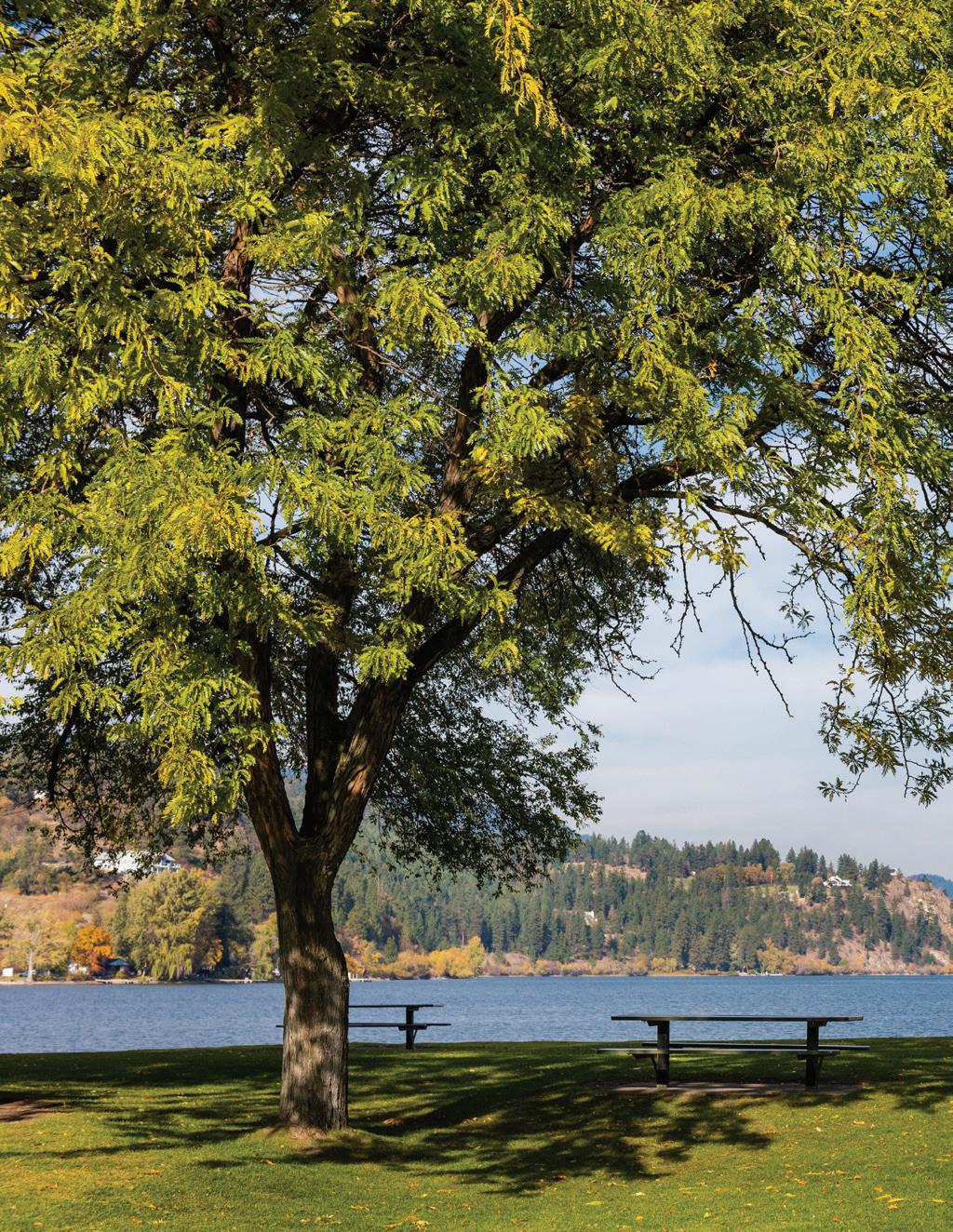




We wish to acknowledge that the Regional District of Central Okanagan is within the traditional territory of the
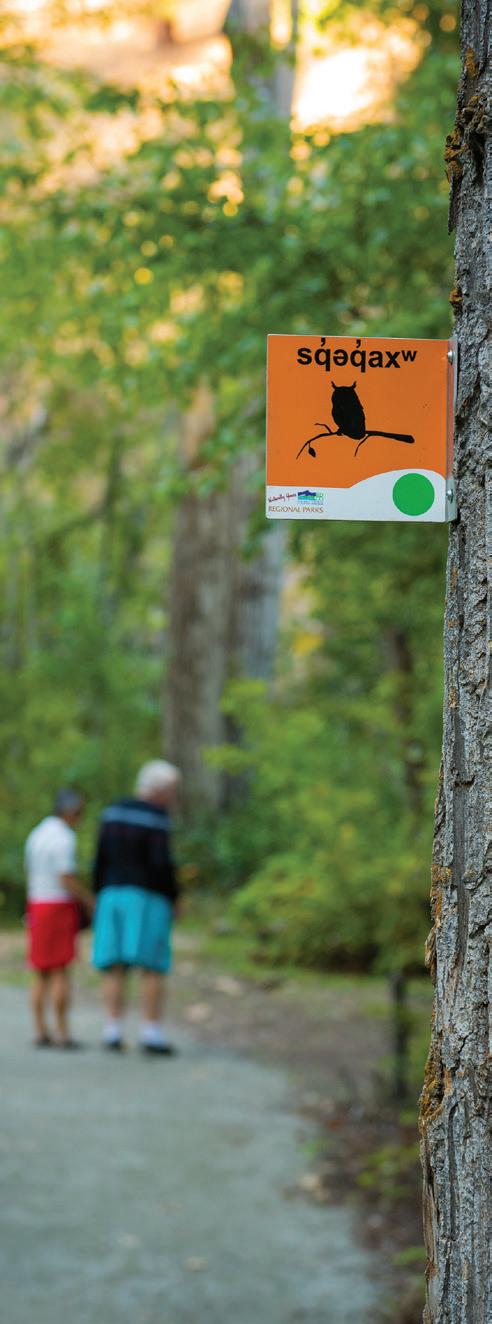
Life since March 2020 has been a rollercoaster ride. As the philosopher Heraclitus wrote, the only constant in life is change That pretty much describes 2020
Everyone at the Regional District thanks you for your ability to adapt to the changes in our daily lives; your flexibility to adjust to the challenges and curves thrown your way by the COVID-19 pandemic
For many in the Central Okanagan including RDCO staff, the coronavirus required adaptation. In-person visits to our offices initially were curtailed and many of our employees were working remotely from home, responding to your phone and email inquiries. In short, they kept providing the services you needed, when you required them and with as little inconvenience as possible. Hopefully in most cases you didn’t even notice!
Our parks interpretive programs shifted gears when inperson gatherings were restricted, creating content that was provided through the @regionalparks Instagram channel and always available through our Regional Parks playlist on youtube com/regionaldistrict
When the Provincial Restart occurred in July, with Health and Safety Plans and protocols in place including lots of hand sanitizing stations, protective plexiglass barriers and physical distancing, we were able to open our doors and provide safe, in-person parks programs again for registered participants .
Then to keep everyone safe, masks were required and once again we all willingly complied
Late in the year, when in-person attendance was prohibited for meetings of the Regional Board, we introduced live-streaming video of the meetings through our rdco.com/agenda webpage, so that residents could view the proceedings from the comfort of their home, work or mobile device
This technology advantage also makes it possible for residents to view video recordings of the meetings, if they weren’t able to watch it live .
Throughout 2020, the Regional District has focused on responding to the pandemic with the primary goals of:
• Community and staff safety
• Provision of essential services
• Balanced use of financial resources and resident/ business support
• Contribution to regional economic recovery
While our adopted 2020-2024 Financial Plan was developed before the pandemic, throughout the year it was amended to reflect changes in work plans and budgets. For residents facing financial hardship, the Regional Board agreed to provide relief from late payment penalties on outstanding balances for RDCO utility bills from April through December 2020.
The Regional District received $1 107-million COVID-19 Safe Restart Grant from the Provincial Government. These funds will be used for eligible costs related to the RDCO pandemic response . The Regional Board will determine how the money will be allocated .
Known throughout the Province for excellence in emergency planning and response, the pandemic saw all local governments in the region approve an agreement to ensure the continued provision of essential services during the coronavirus emergency . Each local government has agreed to provide mutual aid, staff and equipment as available to ensure continued drinking water, waste water treatment and solid waste management for a partner requesting assistance.
As 2020 came to an end, the first doses of the much anticipated vaccine were being shipped and injected . This advance provides excitement and hope as 2021unfolds. We look forward to celebrating our ability to gather together again




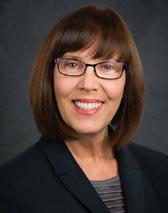
So much has changed over the course of 2020. Masks and hand sanitizers are commonplace. We’ve quickly learned about bubbles, social distancing and frequent hand washing. Perhaps more importantly, Dr. Henry has reminded us to be kind, be calm and be safe.
Public safety means there are fewer Directors, staff and residents physically attending Board meetings Thankfully we, like others adapted our technology so that those unable to participate in person, are with us by videoconference.
While our Board adopted 2020-2024 Financial Plan was drafted before COVID-19, through the course of the year we made some pandemic-related adjustments for shifted departmental work plans. Recognizing the financial hardship facing some electoral area residents, our Board approved a plan to waive late fees on 2020 utility bills.
As Economic Development is one of the Board Strategic Priorities, our Economic Development Commission and local government partners quickly responded by launching the Regional Recovery Task Force to communicate to senior governments the needs, barriers and opportunities of the region to first respond and then support business as we begin to transition to economic recovery
Throughout 2020 we didn’t miss a beat in delivering our vital programs and services. The first region-wide Central Okanagan Transportation and supporting plans were unveiled These will be key to help us get around the region in the future. To support the Board’s Community Sustainability priority, we received a new Regional Emergency Plan and an updated Emergency Preparedness Bylaw. Each builds on the successful experiences of our Emergency Operation Centre and response programs. We received a $149,000 grant from the Union of BC Municipalities to partner with the
United Way Southern Interior BC to develop a Central Okanagan Community Wellness and Poverty Strategy This will provide a coordinated community response: identifying actions and priorities to address poverty and wellness for the region.
I had the pleasure of participating in a pre-pandemic standing room only Climate Resiliency event at UBCO featuring Nobel Peace Prize nominee and environmental advocate Shelia Watt-Cloutier This highlighted the Okanagan’s first Climate Projections Report intended to support regional planning initiatives to prepare for future climate events
Our Regional Floodplain Management Plan and mapping efforts in partnership with the Okanagan Basin Water Board earned significant recognition as we were presented with the Southern Interior Local Government Association Community Excellence Award for Environmental Sustainability This collaborative project also garnered an Honourable Mention from the Union of BC Municipalities!
Your Central Okanagan Regional Hospital District continues to provide significant funding for priority hospital and health facility construction and healthrelated equipment. In fact, during the fall, we amended our budget for three projects including $1.7-million for the new Westside Urgent and Primary Care Centre
In closing, I want to recognize the continued dedication of our Regional Board Directors and thank them for their confidence in acclaiming me as their Chair for the seventh year And my deep gratitude as well to our amazing team of RDCO staff. Throughout the course of this year they continued to provide exceptional service on behalf of all Central Okanagan residents.

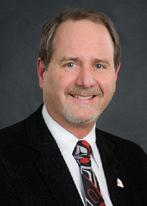
The Regional District Board manages fiscal and policy issues arising as part of local governance. Appointed and elected members represent the three municipalities, two electoral areas of the Regional District and Westbank First Nation.

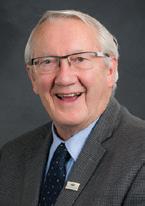
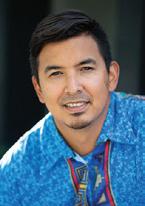
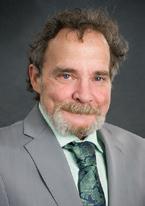
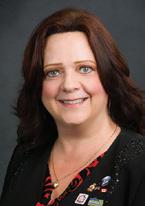

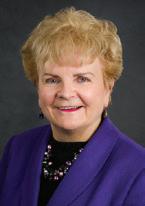


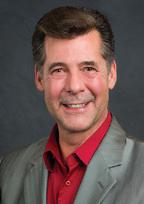
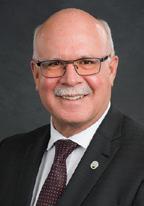

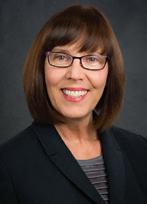
The Strategic Priorities crafted by the Regional Board, guide the work we do and the programs and services provided by the RDCO through the current term
Environment • We will initiate and support efforts to reduce our environmental footprint, adapt to climate change and connect with nature
Sustainable Communities • We will initiate and support efforts to create a healthy built environment in which all people throughout the region enjoy a high quality of life with access to safe neighbourhoods including a diverse range of housing options.
Economic Development
• We will support economic development through the efforts of the Central Okanagan Economic Development Commission, municipalities, silyx/Okanagan people and others aimed at building the regional economy
GOOD GOVERNANCE
We develop practical and innovative solutions based on evidence and analysis
Transportation & Mobility • We will promote transportation and land use approaches that enhance movement throughout the region and reduce our collective reliance on vehicles
RELATIONSHIPS
We build strong relationships with our member municipalities, the syilx/Okanagan people and partners
We seek opportunities to partner with others in addressing shared needs and pursuing common interests
RESILIENCY
We anticipate, prepare for and adapt to challenges and changing circumstances .
TRANSPARENCY
We are open and transparent in our decision-making and actions .
The RDCO is a vibrant and resilient region, characterized by interconnected urban centres, robust rural communities and a stunning natural environment .
Member municipalities and Electoral Areas work together in a spirit of respect and collaboration, to address shared needs and pursue joint opportunities The syilx/
We recognize the broader regional community and the importance of a regional perspective in planning and service delivery
Okanagan people are true partners, helping to interpret the past, shape the present and define a common future. Citizens across the region are engaged in governance and invested in efforts taken to strengthen the broader community
North Westside Waste Transfer Station
North Westside Fire Hall Station 101
North Westside Fire Hall Station 103
North Westside Fire Hall Station 102
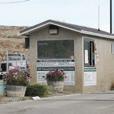
Wilsons Landing Fire Hall Station 42
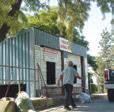
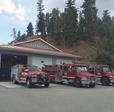
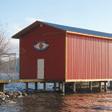

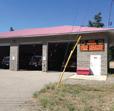
CENTRAL OKANAGAN WEST ELECTORAL AREA
Traders Cove Waste Transfer Station
Crime Stoppers and Victim Services RCMP Detachment Richter Street
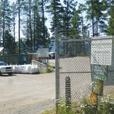
Westside Residential Waste Disposal and Recycling Centre
CITY OF WEST KELOWNA
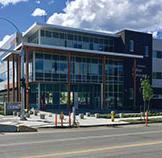
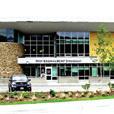
Regional Crime Prevention and West Kelowna Community Policing West Kelowna RCMP Detachment
Westside Regional Wastewater Treatment Plant
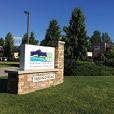

OF PEACHLAND
Peachland Community Policing and Citizen Patrol
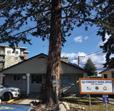
Lake Country Community
Policing and Citizens Patrol
RCMP Detachment
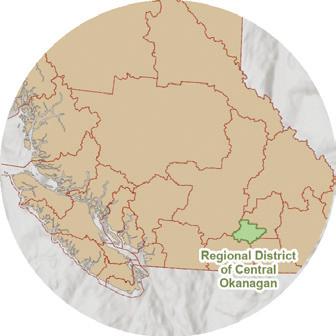
Ellison Fire Hall Station 61
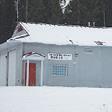
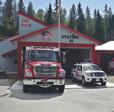
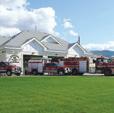
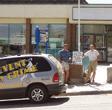
LEGEND
Water Purveyor Area
Dietrich (Star Place)
Falcon Ridge
Killiney Beach
Sunset Ranch
Upper Fintry -
Valley of the Sun/Shalal Road
Westshore Estates
LEGEND
Fire Protection Area
North Westside
Ellison
June Springs
Lakeshore Road
Brent Road
Wilson’s Landing
Joe Rich
RDCO
• 124 employees (full, part-time, seasonal, casual)
• $50-million operating budget
• 79 individual and separate service budgets
PARKS SERVICES
• 1.1 million park visits
• 2,500 hectares of Regional and RDCO Community Parks
• 74 kilometers of trails
PARKS VOLUNTEERS
• 130 Parks VIPs (volunteers in parks)
• 600 volunteer hours in Regional Parks
ECONOMIC DEVELOPMENT
• 14,439 business licenses in region
• 219 in electoral areas
• 188 building permits worth $27 .7-million in the electoral areas
FALSE ALARM REDUCTION
• 38,537 registered alarm systems
• 1,485 false alarms
• 1,248 hours of police response to false alarms
CRIME STOPPERS
• 1,185 anonymous tips received
• $688,200 stolen property recovered
• $133,815 proceeds of crime seized
DOG CONTROL
• 22,108 dogs licensed
• 3,667 first time dogs licensed
• 73% of 340 dogs impounded were licensed
COMMUNICATIONS
• rdco.com website had:
- 285,704 users
- 787,789 pages viewed
• 163 news releases and public service announcements
CENTRAL OKANAGAN POPULATION
• 194, 882 (Census 2016)
POPULATION (Estimate) Source: Census 2016
ELECTORIAL AREAS POPULATION (Estimate)
522
127,380 City of Kelowna
134 53 22
32,655 City of West Kelowna
12,922 District of Lake Country
5,428 District of Peachland
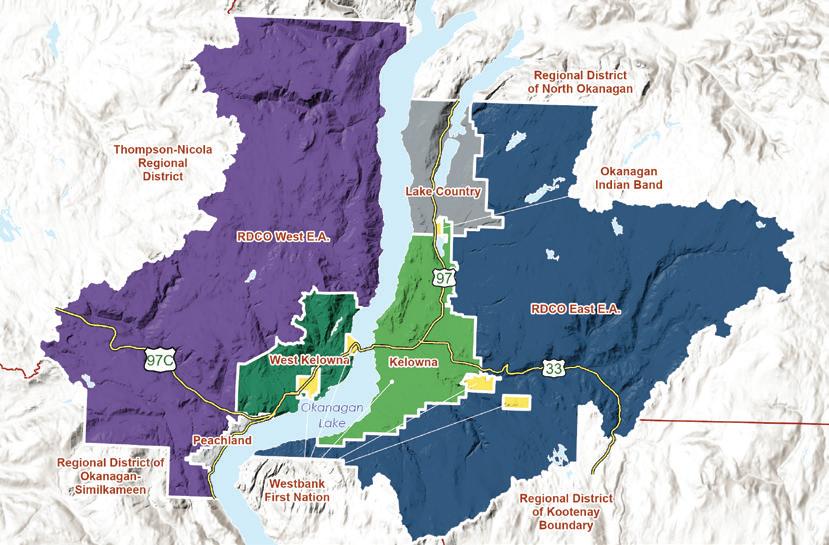
3,824 Central Okanagan East
45 16 1,981* Central Okanagan West
*Plus Westbank First Nation Reserve 9 and 10 9,028
RESIDENCES
Source: Census 2016
334 367 81,385
Households
88,374 Dwellings
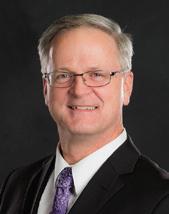
Unprecedented This word has been used so much over the past year to describe the global pandemic response. It also aptly defines the way everyone in our organization has stepped up to ensure that the services on which Central Okanagan residents depend continue as they did before COVID-19.
We quickly adjusted to the ‘new’ coronavirus normal. Our essential fire, water, wastewater treatment and garbage, recycling and yard waste services continued. Our Economic Development Commission shifted gears providing a new focus on getting key information and updates to businesses and began planning on how to help them post-pandemic
This brings to mind another important word: resilience. That’s something of pride for our organization. When faced with the challenges and curves thrown at us by COVID-19, we adapted, adjusted and are stronger. Resilience also applies to work outside of COVID Our Parks Services staff responsed to a depleted water source that threatened important species found in natural ponds in Mission Creek Regional Park We quickly advanced plans to provide a more reliable, permanent water source
The RDCO continues to elicit the confidence of senior governments which have provided some significant grants. The Canada-BC Investing in Canada Infrastructure Plan is contributing almost $715,000 towards new features in the 640-hectare Black Mountain - sntsk‘il’nt en Regional Park, which we co-manage with Westbank First Nation. And we received a $149,000 grant from the Union of BC Municipalities to partner with the United Way Southern Interior BC to develop a Central Okanagan Community Wellness and Poverty Strategy to provide a coordinated community response
Development Cost Charge bylaws were adopted for the Westside Regional Wastewater Treatment Plant and East Trunk Sanitary Sewer. Monies collected from new developments approved by West Kelowna, Peachland and Westbank First Nation will help fund future capital costs and infrastructure expansion.
2020 also saw major life-extending overhauls to bridges in Glen Canyon Regional Park and along the Mission Creek Greenway. As well, new playground equipment was installed in Bertram Creek and Traders Cove regional parks, while picnic structures were replaced in Traders and Raymer Bay and a new picnic facility built at Westshore Community Park
During the year, a new Solid Waste Management Plan was adopted after receiving approval from the Provincial Government. It sets our region up for future inroads to develop programs and services that reduce waste and help extend the life of the only active landfill for the Central Okanagan We also launched an engagement effort to assist and improve recycling programs and services for those living in multi-family townhomes, apartments and condominiums .
Looking forward to 2021, we anticipate providing information to the Regional Board on developing a new Regional Transportation Service that will build on the region’s first transportation plan.
While 2021 begins with masks and physical distancing, hand washing and sanitizing, I’m confident whatever challenges are presented, we will continue to connect with you and safely provide services in the most cost effective and efficient manner.

The Regional District of Central Okanagan encompasses over 314,000 hectares of diverse topography straddling the shoreline of Okanagan Lake in the beautiful Okanagan Valley of British Columbia’s Southern Interior. We’re just a five-hour drive from Vancouver and the lower mainland and about two hours north of the US border with Washington State .
Recreational opportunities abound from our mountain peaks, lakes and fantastic sandy beaches to our naturally forested areas. While our orchards and vineyards offer a rural, agricultural flavor we also have everything you’d expect in a thriving, urban centre.
of Peachland and City of West Kelowna. The two First Nations in our area: Westbank First Nation and Okanagan Indian Band are among eight Southern Interior indigenous communities that make up the Okanagan Nation and have inhabited the valley since time immemorial .
The Regional District Board of Directors is made up of 13 elected and appointed representatives from the Electoral Areas and the member municipalities. In addition, a nonvoting member is appointed to represent Westbank First Nation . Each month the Board holds a regular evening meeting and a daytime meeting of the Governance and
Ranked as the third largest urban area in BC, almost 195,000 people call the Central Okanagan home. The Regional District places a priority on maintaining the balance between growth and development, while protecting the natural environment and our unique Okanagan lifestyle.

Our home is a four-season playground that attracts over one million visitors each year. They come for extraordinary powder skiing, lush golf courses, worldclass wineries, fruit right off the tree and fresh, clean air and water . It’s no wonder people turn a visit into making this their chosen place to live, work and play.
The Regional District of Central Okanagan is one of 27 regional districts in the province It was created in 1967 and includes the two unincorporated Electoral Areas of Central Okanagan East and Central Okanagan West, along with the member municipalities of the City of Kelowna, the District of Lake Country, the District
Services Committee to provide guidance in managing the various programs, services and issues that arise as part of local governance.
We exercise financial stewardship by adopting a Five Year Financial Plan before the end of March each year. In the first few months of each new year, the Regional Board holds several budget meetings encouraging public engagement and participation, prior to adopting the fiscal bylaw.
The mission of the Regional District is to help protect the quality of life for all citizens by planning for the future, while delivering efficient and cost effective services to the region Those services that are provided by the Regional District to Electoral Area residents include water, planning and solid waste collection. As well, the District provides region-wide services such as dog control and waste management, 9-1-1, Regional Parks and the Emergency Response Plan for the Central Okanagan.
Crime Prevention
Crime Stoppers
False Alarm Reduction Program
RCMP Victim Services
9-1-1 Communications
Inspection Services
Planning
Police & Community Support Services
Community Services
Corporate Services
Freedom of Information & Protection of Privacy
Human Resources
Communications and Information Services
Economic Development
Commission
Environmental Services
DIRECTORS & OFFICERS
Brian Reardon
Chief Administrative Officer
Marilyn Rilkoff
Deputy CAO/Financial Services
Director
Jodie Foster
Director of Communications and Information Services
Todd Cashin
Director of Community Services
Corie Griffiths
Director of Economic Development and Bylaw Services
David Komaike Director of Engineering Services
Murray Kopp
Director of Parks Services
Fire Services
Regional Waste Reduction Office
Engineering Services
Bylaw Services
Financial Services
Finance Purchasing
Parks Services
Regional Emergency Program
As an organization, it’s all about service at the Regional District. Our programs and services cross a wide range of areas that are important to residents of the Central Okanagan.
Often people only are interested in a service that directly affects they when they desire it, like getting their garbage and recycling picked up, drinking clean and safe water or purchasing a dog license. Throughout the pandemic and in ‘normal’ times, we do our best to ensure that all our services are delivered when they’re needed.
The Community Services Department supports and enhances the quality of life enjoyed by residents through a variety of direct services such as Planning and Land Use, Building Inspections and Business Licensing as well as programs through Police and Community Support Services which include False Alarm Reduction, Policebased Victim Services, Crime Prevention, Crime Stoppers and 9-1-1 .
The Communications Department is responsible for all internal and external communications, advertising, news releases and other public engagement tools including social media channels in order to provide consistent and open information for Central Okanagan residents. Our Information Services team delivers online services like Geographical Information Systems, as well as providing the technical support staff that oversee the integration of corporate applications and work with all departments to improve the use of technology
The Corporate Services Department provides services and support to the Regional Board, Policy and Bylaw development, Legal and Legislative changes including Freedom of Information and Protection of Privacy requests, Records Management and Human Resources. Every four years Corporate Services oversees and manages Local Government Elections for Directors of Central Okanagan East and Central Okanagan West Electoral Areas, as well as School District No. 23 Trustees for these areas.
The Regional District of Central Okanagan Economic Development Commission (COEDC) provides economic development services to citizens and businesses of the region.
The COEDC utilizes the expertise of a 45+ member advisory body representing local government, partner organizations and industry leaders from a cross section of business sectors and provide a valuable link between the business community and the organization or industry sector they represent .
Our Bylaw Enforcement staff provides dog control and dog pound services along with prohibited animal control for the entire regional district. Noxious weeds and insect service is provided seasonally along with other bylaw services for the electoral areas including unsightly premises, noise, smoke control and zoning regulations.
The Engineering Services Department provides a variety of services directly to residents in several areas: Environmental Services including the Regional Waste Reduction Office, operation of the Westside Residential Waste Disposal and Recycling Centre and transfer stations at Traders Cove and North Westside, six RDCO water systems, and Fire Services for the paidon-call fire departments serving Ellison, Joe Rich, North Westside and Wilson’s Landing . We also manage Asset Management and Facilities and Fleet for the RDCO. We maintain and operate the Westside Regional Wastewater Treatment Plant servicing residents and businesses in the City of West Kelowna, District of Peachland and Westbank First Nation and provide the Nuisance Mosquito Control Program for participating funding areas.
Parks Services protects and manages over 2,100 hectares of parkland from Peachland to Lake Country . Our stewardship includes 30 Regional Parks as well as 20 community parks in the two electoral areas. In addition, Parks Services supports rural community recreation facilities including the Ellison Heritage School Community Centre, Joe Rich Community Hall and the Killiney Community Hall.
Our Visitor Services staff provides activities, events and programs designed to celebrate, learn about and connect with nature .
Financial Services is responsible for providing financial and administrative services to the Regional District and Regional Hospital District. This includes working with the Board, public, and all of the departments on: financial budgeting, tax requisitioning, reporting, cash management, planning and monitoring to ensure our financial projections and Strategic Performance Based Budgeting targets are being met
We are also responsible for the purchasing and procurement and contracting of goods and services by the Regional District
The Regional Emergency Program is identified by the Regional Board as one of the key areas of focus in its Strategic Priorities Community Sustainability theme .
The program is coordinated by the City of Kelowna Fire Department on behalf of the Regional District, the cities of Kelowna and West Kelowna, districts of Lake Country and Peachland and Westbank First Nation. During an emergency, the plan supports first responders and makes provisions to protect lives . The plan also provides guidelines for recovery operations after any emergency or disaster ends to return as quickly as possible to pre-emergency life.
We will initiate and support efforts to reduce our environmental footprint, adapt to climate change and connect with nature.
In collaboration with others, the RDCO will develop the strategies, plans and actions to protect our watersheds, care for our lakes and maintain foreshore areas. We also work with partners and other levels of government to manage our solid wastes, address dangers from flooding and wildfires and enhance our region’s ecosystems.
Hundreds of residents and managers of multi-family apartments, condos and townhomes participated in a survey designed to identify and understand participation barriers in residential recycling programs .
Most of these developments are serviced by commercial companies By better understanding current recycling programs in multi-family residential properties the Regional Waste Reduction Office aims to provide tools and support to residents and property managers, raising awareness of existing programs and supporting them to improve their recycling practices. This will further our goal of reducing the amount of garbage being sent to the local landfill.
When we learned that a previous water supply was no longer available for several human-made kettle ponds in Mission Creek Regional Park, we began planning for a replacement flow to ensure a vital eco-system for aquatic life and at-risk species.
Until a new well was drilled and pump installed in the spring, we sourced water from our license in Mission Creek initially suppling the connected ponds including the well-used children’s fishing pond.
A new plan is in place to help guide solid waste initiatives across the region . The updated Solid Waste Management Plan includes two amendments required with the approval from the Minister of Environment and Climate Change Strategy:
• Completion of a Five Year Effectiveness Review by December 31, 2024
• Re-evaluation by December 31, 2030 of organic waste diversion opportunities and an assessment of the effectiveness of maintaining landfill gas collection and use at the Glenmore landfill.
The plan outlines initiatives that initially target the reduction of waste; increased reuse of waste materials and the increased collection of recyclable and compostable components of the waste stream. When fully implemented over the next ten years, the initiatives have the potential to reduce the amount of waste sent to landfill and increase the region’s diversion rate from 43% to 50%.
The pandemic didn’t get in our way of encouraging residents of all ages to get outside and learn about the importance of nature in our shared landscape.
This year, over 19,500 park users were actively engaged in a park program or virtual event
When in-person events were not permitted, our parks Visitor Services team shifted program delivery. They used online platforms like Instagram Live and YouTube to connect with people who normally would have attended staff-led activities such as guided hikes, school field trips and events When in-person events could once again take place, we modified programming with new safety protocols and procedures and offered a diverse array of interpretive programming

Radon is a naturally occurring odourless, tasteless, colourless radioactive gas that is the leading cause of lung cancer in non-smokers With some spending more time at home because of the pandemic the Regional Air Quality program believed it was more important than ever that Central Okanagan residents know what their home radon level is and ensure the air they breathe is healthy .
During the fall, 400 free test kits were offered to residents who registered online. Within a day of launching the program, these were spoken for. The BC Lung Association Healthy Indoor Environment Program and National Take Action on Radon initiative provided 1,000 additional radon testing kits with funds from the Vancouver Foundation as part of its Community Testing Project
Once the testing phase concludes in late February 2021, the kits will be returned for analysis and in the spring, residents will receive the test results along with possible mitigation options
Those wishing to learn more about radon and how it affects their health are encouraged to visit takeactiononradon ca
A study off the Okanagan Lake foreshore of the Killiney Beach and Westshore Estates water systems looked at the impact of septic systems near the water intakes for both systems
Water quality samples were taken near the two system intakes as well as in a naturalized control area to determine if there is an impact from septic systems in the area . The water sampling results will help in understanding the presence of nutrients and other materials that affect water quality. That in turn will be used to supplement and update the Source Protection Plan for these two water systems that use Okanagan Lake as its main source of drinking water. It’s anticipated that over the long term, this data will assist in making potential bylaw changes for future building permits affecting properties that are on, or near water bodies.
The RDCO received a grant of $16,020 from the Water Conservation and Quality Improvement program of the Okanagan Basin Water Board to conduct the study .
During the fall, two RDCO Recycling Ambassador students hit the streets in randomly selected Central Okanagan neighourhoods checking what residents were putting inside their curbside recycling carts
This is an ongoing recycling cart education and inspection initiative to combat recycling contamination and has been underway for a few years now. There’s a very good reason for periodically checking what’s inside our curbside carts: Recycle BC can impose financial penalties on local governments that don’t reduce and eliminate unacceptable products from their residential curbside recycling .
We understand that sorting waste and recycling can sometimes be confusing. Most residents are doing a pretty good job including only what’s acceptable in the carts. However, recycling audits show there are still a significant number of unacceptable items going into our recycling stream. Things like plastic bags, garbage, books, food waste, garden hoses, electronics, scrap metals, clothing, even yard waste—items that have never been accepted in our curbside recycling program are still showing up and contaminating the recycling effort.
When the Ambassadors found items that don’t belong in a recycling cart, they would leave information explaining what went wrong. In some cases, if there was significant contamination, carts would not be picked up until the offending material was removed.
Some of the no-no items found include:
• Garbage (landscape edging, paper towels and tissues, toys, Tupperware type containers
• Depot only recyclables (glass, Styrofoam, textiles, hazardous waste like syringes, oil jugs and propane tanks)
In 2020 the Regional District inspected over 2,300 recycling carts and sent approximately 630 letters to residents when the wrong materials were found in the recycling, garbage and yard waste carts – to help encourage future compliance.
The Ambassadors also used the opportunity while in a neighbourhood to add stickers to the recycling carts to help residents with a visual reminder of materials that should be placed into recycling carts
To learn more about what to recycle in your curbside cart or at a depot, visit rdco.com/recycle or download the free Recycle Coach App at rdco.com/recyclecoach.

Climate change is challenging our ecosystems, communities, and our economy. Wildfires, flooding, and drought have already tested local infrastructure, caused economic losses, and posed health risks to communities This is why the RDCO joined the North Okanagan and Okanagan-Similkameen regional districts partnering with the Pacific Climate Impacts Consortium and Pinna Sustainability in developing a Climate Projections report .
It’s intended to foster and support a local understanding of how our climate is expected to change and to assist in regional planning to prepare for future climate events. In particular, climate projections for both the 2050’s and the 2080’s have been identified. Findings indicate that the Okanagan can expect significant changes to climate in the coming decades including:
• Warmer temperatures year-round
• Summers will be considerably hotter
• Increased growing season
• Warmer winter temperatures.
The Climate Projections Report lays the groundwork for everyone to respond and act in a meaningful way. By taking steps now we can help mitigate the potential challenges in the years ahead
The aptly named VIP program (Volunteers in Parks) is an engaging way for local residents to give back to the community. In 2020, the VIP program focused on getting people outdoors and completing hands-on stewardship activities while being physically distant . While large group events were postponed due to COVID-19, the program still logged nearly 600 volunteer hours either through selfdirected activities or with our various ‘Friends of’ partner organizations.
Two new Stewardship groups were created:
• Public Stewardship – for volunteers interested in oneday events over long term commitments
• VIP Stewards – for those prepared for regularly planned, on-going volunteering activities.
In 2020, 57 new volunteers joined the roster bringing our total number of volunteers to 130 including Friends of Regional Park societies
A keystone endeavour of RDCO Parks Services is to be accessible to visitors of all ages and abilities.
Our ongoing partnership with The Community Recreational Initiatives Society (CRIS) helps ensure everyone has an opportunity to connect with nature . CRIS breaks down barriers to the outdoors through the use of adaptive equipment for people with mobility challenges. Throughout the year, CRIS coordinated rentals and trail riding expeditions It ran a pilot program in Mission Creek Regional Park where its volunteers were on-site daily throughout the summer to facilitate adaptive equipment rentals for visitors.
We’re proud of our parks across the region! And we’re even more proud that we’ve been able to keep them all open and accessible throughout the pandemic. After all, encouraging and supporting our connection with nature is one of the primary Strategic Priorities of the Regional Board.
We’ve received many comments, calls and emails from residents thanking us for providing them with the opportunity to go safely outside and visit with nature. This was especially important considering that more people were staying and working from home, so getting outside was a peaceful respite that helped with their overall health.
Our diverse team of Parks Services staff kept our 30 stunning Regional Parks accessible throughout the Central Okanagan. From Hardy Falls Regional Park in Peachland to Kaloya Regional Park in Lake Country, we offer over 2,100 hectares of expansive green space and 74 kilometers of formal trails.
Parks Services also promotes environmental education year round through a variety of programs and events in the parks and at the Environmental Education Centre for the Okanagan. The pandemic didn’t get in our way of encouraging residents of all ages to be active and learning about the importance of nature.
When in-person events were not permitted, our parks Visitor Services team shifted to using online platforms like Instagram Live, YouTube and Zoom to connect with people who normally would have attended staffled activities such as guided hikes, school field trips and events . When in-person events could once again take place, we modified programming with new safety protocols and procedures and offered a diverse array of interpretive programming
Parks Services also supports 20 community parks in the two electoral areas and rural recreation facilities including Ellison Heritage School Community Centre, Joe Rich Community Hall and the Killiney Community Hall.

• Officially open Black Mountain - sntsk‘il’nt en Regional Park and continue developing trails and other amenities in the 640-hectare park which is co-managed with Westbank First Nation
• East Park Expansion – The first phase of the planned expansion for Mission Creek Regional Park in the area east of the Leckie Road parking area will get underway. Among the new amenities in this previously undeveloped area of the park:
New accessible trails
– New grass area with accessible picnic tables
– Multi-age natural play/obstacle course
– Floodplain interpretation areas
– New irrigation system
• Mission Creek Regional Park Management Plan –with community and stakeholder participation, a draft long-term plan will be presented for Regional Board consideration
• Mission Creek Greenway Phase 3a – A portion of this recreational trail which has been closed since 2018 due to slide issues will undergo mitigation and repairs .
• Streambank repairs will be made to protect the Cedars bridge along the Hollywood Road to Field Road section of the Mission Creek Greenway.
• Traders Cove Community Trail – a new trail and access will be constructed linking the Traders Cove community and Traders Cove Regional Park
• New Community Signs – new electronic signs will be installed for the Ellison Heritage and Joe Rich community halls .
• Regional Wastewater Plant Upgrade – complete construction on a new Thickened Waste Activated Sludge (TWAS) vault at the facility off Gellatly Road replacing the original vault from 1998.
• Falcon Ridge water system:
Expansion to serve 11 additional properties in the water service area .
– Erosion protection for water intake along Mission Creek
• Westshore Estates water system - Pressure Reducing Valve replacement for Northern View area.
• Present the Regional Board with a Multi-family Residential Recycling Report
• Conduct a Waste Composition Study to determine the materials that are going into the Glenmore Landfill and identify how the region’s waste reduction programs are working and to guide direction for future waste reduction programs .
• Conclude the pilot project on bear resistant curbside carts in order to discourage and reduce potential wildlife conflicts
• Events
– Community Clean Up - the RDCO will provide supplies and pickup of litter filled bags for those doing cleanup events with participants committing to following current public heath guidelines related to COVID-19 .
– North Westside Hazardous Waste and Bulky Household Item drop off - Health and safety guidelines will be used to ensure safety of staff and customers participating in these annual community collection events
• Continue collaboration on the Okanagan Lake Responsibility Planning Initiative with Okanagan Nation Alliance, Okanagan Collaborative Conservation Program and South Okanagan Similkameen Conservation Program
• Complete the Rose Valley Reservoir Dam Inundation Study in collaboration with the City of West Kelowna.
• Complete a Flood Mitigation Plan under Phase 3 of the Regional Floodplain Management Plan to propose non-structural mitigation strategies to reduce flood risk, improve emergency response and adapt to climate change
• Continue implementing the recommendations of the Foreshore Inventory Mapping project while updating environmental inventories and mapping for use in processing development applications, environmental initiatives and monitoring
• Prepare an implementation strategy with the Okanagan Collaborative Conservation Program, UBCO and other partners for the Ecosystem Connectivity Corridor project from Okanagan Mountain Provincial Park to Kalamalka Lake Provincial Park as part of the Biodiversity Conservation Strategy

We will support economic development through the efforts of the Central Okanagan Economic Development Commission, municipalities, syilx/Okanagan People and others aimed at building the regional economy. The Central Okanagan Economic Development Commission works in partnership to facilitate and encourage development of a healthy and dynamic, sustainable economy by supporting existing businesses and encouraging appropriate new business investment across the region .
As the economic impacts of COVID-19 began to emerge in March 2020, the Regional District Economic Development Commission (COEDC) quickly adapted programming to support public health measures and support regional businesses in navigating the impacts of the pandemic. The COEDC remains focused on responding to the immediate needs of the regional economy while preparing for long-term recovery. Response and Recovery activities in 2020 included:
• Support and promotion of Buy Local initiatives including creation of a centralized directory of campaigns from the Valley Chamber Network, Tourism Kelowna and private industry and two versions (Spring and Holiday) of Local Love Bingo created by the Okanagan Young Professionals Collective.
• Creation of investkelowna.com/COVID19, a centralized plain language business resource page detailing all local, provincial and federal business support programs, while also increasing communications channels to share information directly with businesses.
• Coordination of the Response Action Team comprised of business service providers offering support for businesses in the Central Okanagan The Response Action Team meets regularly to share information about supports and services available through each service provider, triage referrals and identify service gaps.
• Industry Roundtables for Aerospace, Agriculture, Arts, Culture & Recreation, Construction & Development, Manufacturing, Post-Secondary Education, Small Business and Technology sectors to understand industry impacts to date and future recovery needs. Roundtable findings were summarized in early industry impact reports and fact sheets and shared with regional, provincial and federal partners and the community to inform advocacy needs for long-term recovery and identify gaps in business supports.
The Regional Economic Development service continues to position the region to leverage Provincial and Federal recovery strategies that are expected to be implemented upon a medical resolution of the pandemic. As we move towards recovery, the COEDC will continue to prioritize outreach to industry to inform regional economic recovery needs .
As the region’s Primary Resource for Business, the COEDC collects and shares economic climate data with the community, including quarterly Economic Indicator reports, over 30 annual Economic Climate presentations to business and community groups, over 50 resources on investkelowna com and by responding to direct inquiries for statistics and demographic information.
The Central Okanagan Economic Development Commission launched a new data visualization portal to partners in late 2020. Launching publicly in early 2021, the user friendly data portal makes statistical information, research and analysis instantly accessible and supports evidence based decision making for the COEDC, its partners, regional businesses and investors.

Made up of executive industry leaders, economic development partners and appointed elected officials the COEDC’s 45-member Advisory Council provides industry insight and expertise to guide COEDC activities and programming
Recognizing a need to increase understanding of the unique impacts of COVID-19 by industry, the COEDC’s Advisory Council lead Industry Roundtables for Aerospace, Agriculture, Arts, Culture & Recreation, Construction & Development, Manufacturing, PostSecondary Education, Small Business and Technology.
While timing and tactics have been adjusted due to the pandemic, the COEDC continues to work in partnership with Tourism Kelowna, Accelerate Okanagan and Global Affairs Canada to develop assets to promote the region as a knowledge centre for agriculture, viticulture, manufacturing, aerospace and digital tech.
The OKGo campaign initiated in 2020 and launched in 2021 will position the region for economic recovery by telling the stories of innovative entrepreneurs and the business support ecosystem that supports their growth
Early industry impact reports and fact sheets were shared with regional, provincial and federal partners and the community to inform advocacy needs for long-term recovery and identify gaps in business supports.

In addition, the COEDC continued to provide one on one business development expertise to sectors ranging from small business to Aerospace as well as specialized programming to those in agriculture and export development. In the first three quarters of 2020, the COEDC responded to over 10,000 inquiries.
Since 2016, the top challenge identified by regional businesses is attracting and retaining skilled workforce. A program of the COEDC, the Okanagan Young Professionals (OYP) Collective’s objective is to foster a culture that attracts and retains young professionals and students in the region. In 2020, the OYP responded quickly by adapting programming and events to a virtual format including monthly virtual coffee socials, networking hours and lunch and learns
The COEDC Connector program matches recent graduates, young professionals and newcomers to the community with well networked “Connectors” in their field in order to quickly build networks. Since March, the program has operated virtually and provided connection to over 40 Connectees
• Provide business guidance and support to 125 businesses across industry sectors including business development expertise and connection to resources .
• Support business operators with current COVID-19 updates and communication .
• Contribute to growth of the entrepreneurial ecosystem by partnering on programs including the OKGN Angel Summit, e@UBCO, Community Futures, Women’s Enterprise Centre and others
• Develop, maintain and distribute targeted publications and resources for business.
• Conduct 8-10 business sector roundtables.
• Launch an online interactive database of community information and intelligence to support data-driven decision making
• Lead Regional Service Provider Roundtables to ensure awareness of services and inform future response programming
• Serve on and provide economic climate information to regional bodies including the YLW Air Service Development Task Force, Tree Fruit Competitiveness Fund Review Committee, Community Futures, Central Okanagan Local Immigration Partnership and others .
• Provide support & regional info economic climate data to elected officials, municipal and WFN staff and Economic Development Committees and stakeholders
• Share information and advocacy needs to ensure the region is positioned to benefit from Federal and Provincial COVID 19 Response relief and COVID-19 recovery initiatives
• Increase awareness of Federal/Provincial Incentives and Policy Changes
• Regional Growth Strategy (RGS): Enhance awareness and support priority projects plan(s).
• Share industry trends & data at RDCO Regional Planning Labs
• Bridge divide between remote and on-campus postsecondary students and regional businesses through the OYP Student Liaison Program
• Serve as a conduit between industry and academia by Post-Secondary committee representation
• Support programs that retain students in the region including the UBCO Arts Career Apprenticeship program, e@UBCO and Okanagan College.
• Connect a young, diverse workforce to social, career and volunteer networks through the Okanagan Young Professionals Collective Program.
• Integrate 30 newcomers, young professionals and recent grads with professional networks through the Connector Program .
• Share real-time Labour Market Intelligence for the Central Okanagan and publish our semi-annual Job Market Report
• Maintain relationships with Provincial and Federal partners to position the region and its businesses to leverage recovery initiatives including Canadian Trade Commissioners Service,Trade and Invest BC.
• Provide business guidance to up to 20 businesses and facilitate 1-2 export related events through the Export and Business Development Program .
• Work with community economic development officers to support incoming leads with regional and community level information.
• Partner with Tourism Kelowna & Accelerate Okanagan in deployment of OKGo Campaign and creation of 2nd edition of assets.
• Position region for COVID-19 economic recovery with alignment to and promotion of local, Provincial and Federal recovery initiatives
We will initiate and support efforts to create a healthy built environment in which all people throughout the region enjoy access to a diverse range of housing options, remain safe in the face of emergencies and experience a high quality of life.
The Regional District advocates and facilitates for the provision of housing. It’s ideally placed to convene discussions, outline innovative housing solutions and create best practises to inform local development policies and building standards .
A grant from the Union of BC Municipalities Poverty Reduction Planning and Action Program will help develop a region-wide wellness and poverty strategy for the Central Okanagan
The $149,000 grant to the Regional District will be used to further the work that has been completed by regional community partners over the last several years . It will build on resources such as the Central Okanagan Community Wellness Analysis which provides baseline data and insights into poverty and wellness in the region and within each community of the Central Okanagan.
The strategy will provide a coordinated, shared community framework around poverty reduction in the Central Okanagan while building capacity within and across the region for collaborative action. The strategy will identify actions and priorities to address poverty and wellness for the region, while also continuing to reflect the unique needs of each community.
The RDCO is partnering with United Way Southern Interior BC on the strategy development process
The Central Okanagan received a new Emergency Plan during 2020, replacing the previous plan in place since
2004, following the Okanagan Mountain Park Firestorm. The new plan has been completely updated, building on experiences and lessons learned from previous regional emergency responses . It also reflects current Emergency Management and Response best practices and operating protocols and guidelines
Climate is changing, both globally and locally, leading to increased hazards and extreme weather events. We need to be preparing for these inevitable impacts of climate change and working towards adaption and mitigation by reducing our environmental footprint. This will require increased community awareness; change in the way we do things and collaboration
In February 2020, the RDCO hosted a sold-out public event at UBCO. The purpose: to build climate change awareness and encourage dialogue within the community to inspire hope and action . The event featured the public launch of the Climate Projections Report for the Okanagan Region on how our climate is projected to change over the next 30-60 years in order to inform planning and decision making.
Attendees also explored the impacts of climate change in British Columbia and across Canada and understand efforts currently underway to address resiliency. The evening featured keynote speaker Sheila Watt-Cloutier, Environmental, Cultural and Human Rights Advocate and Nobel Peace Prize nominee who provided a global perspective on climate change and a shared vision for the future.
The evening closed with a panel of local experts highlighting what is being done in the region to address climate change from different perspectives including health, agriculture and emergency response.

Practising pandemic health and safety, members of two RDCO fire departments held their annual drives to help the Central Okanagan Community Food Bank
Collecting food and cash donations on doorsteps and at the end of driveways, members of the Joe Rich and Wilson’s Landing departments picked up a combined 27 hundred pounds of food and almost three thousand dollars in cash to help stock the food bank shelves for those residents in need across our communities
In support of a Provincial Rental Housing Task Force recommendation supporting provincial funding for rent banks, RDCO staff and counterparts at the City of Kelowna explored the opportunity to form a Central Okanagan Rent Bank . As a homelessness prevention initiative, it assists low to moderate income households, who are unable to pay rent or utilities due to unanticipated expenses or emergencies Rent banks provide small, interest-free loans to renters who have the ability to repay the loans over a six- to 24-month period
The BC Rent Bank is a provincially funded program administered by the Vancity Community Foundation It amended its process and approach to launch new rent bank sites around the province
While those changes resulted in the Regional District not proceeding with a rent bank initiative, the Rent Bank and Canadian Mental Health Association teamed up on the initiative and plan to fund and establish a rent bank starting in 2021 to help renters in the Central Okanagan region
Following a detailed policy review of secondary suite regulations in the Electoral Areas which also involved opportunities for public input, the Regional Board approved amendments to the Joe Rich Rural Land Use and RDCO Zoning bylaws.
The review identified that increasing density by permitting secondary suites in all residential zones in the Electoral Areas may cause drainage and slope stability challenges, particularly in areas without access to community sewer and without proper drainage plans .
In light of this, the bylaw amendments clarify the regulations for secondary suites and strengthen the servicing requirements. The Board also supported continuing with the existing secondary suite approval rezoning process allowing the Regional Board to make informed decisions about individual applications on a site-specific, case by case basis.
The secondary suite amendments also reflect new design and construction requirements for secondary suites in the BC Building Code and are in keeping with the Regional Growth Strategy and Official Community Plans .
Following the dramatic flooding in 2017, there was a desire by Okanagan local governments, First Nations, and the Province of BC to undertake risk assessments and flood mapping, and make the Okanagan more resilient to extreme precipitation In partnership with the Okanagan Basin Water Board (OBWB), in 2018 the Regional District of Central Okanagan formed a collaborative multi-stakeholder committee (Okanagan Flood Mapping Project Coordination Committee) to engage stakeholders involved in Okanagan flood risk assessments, mapping and mitigation planning.
The RDCO’s main responsibility with the Committee has been to coordinate and inform. In collaboration with OBWB, regular emails are distributed which outline the status of major projects, upcoming flood funding opportunities, and project coordination meetings. In addition to the OBWB and RDCO, this true valley-wide effort involves staff from 19 additional Okanagan local governments and First Nations as well as the Provincial Government and Emergency Management BC.
Beneficial outcomes of this project include:
• Strengthen the foundation of regional and provincial knowledge-sharing and consistency
• Staff resources have been leveraged and efficiencies realized.
• Collaborative projects have been initiated, such as:
– LiDAR and Aerial Image Acquisition for the Okanagan Valley Watershed: With multiple funding partners, OBWB and GeoBC teamed up to manage the capture of LiDAR and digital aerial imagery for the Okanagan watershed
– Okanagan Mainstem Flood Mapping: A joint project with RDCO, OBWB, Regional District of Okanagan-Similkameen and Regional District of North Okanagan for flood modeling and mapping for the Okanagan mainstem lakes shorelines and reaches of the Okanagan River.

The RDCO’s efforts in Okanagan Floodplain Management initiatives garnered much attention in 2020 .
The Southern Interior Local Government Association presented its Community Excellence in Environmental Sustainability to the Regional District for the Regional Flood Collaboration Group.
And the Floodplain Management Plan received an Honourable Mention from the Union of BC Municipalities Community Excellence Awards Sustainability category
These initiatives came as a result of serious flooding affecting Okanagan Lake and tributaries from higher elevation areas in 2017 and 2018 .
Working together and sharing information provides for a more robust and cohesive effort in planning.
That’s the goal of the Regional Planning Lab, hosted by the RDCO. In 2020, we brought together in a virtual format, 20 valley-wide local government staff to discuss changes in Provincial regulations affecting agricultural exclusion applications for private landowners.
The session provided the opportunity to discuss potential regional consistency and formats for receiving exclusion requests.
If it sounds too good to be true, chances are it probably is something you should steer away from.
Increasingly, fraudsters and scammers are using technology to entice their victims And anyone can easily fall prey.
Central Okanagan Crime Stoppers fought back by creating the 2020 Protect Yourself from Scams calendar. It provided residents with handy tips and information on what to look for, red flags that might be raised and suggestions to protect against scams
As the calendars were available for a minimum $10 donation, it also helped raise funds for the non-profit Crime Stoppers Society to support ongoing programs
In order to plan for future wastewater infrastructure needs on the westside of Okanagan Lake, new bylaws were adopted updating Development Cost Charges (DCC)
The East Trunk Sanitary Sewer DCC Bylaw adjusts funds to be collected from new development projects in the City of West Kelowna and Westbank First Nation (WFN) reserves that send wastewater for treatment at the Westside Regional Wastewater Treatment Plant
And for the first time since 2010, the DCC rates paid by developers and builders in West Kelowna, Peachland and WFN were increased to assist with future improvements to the treatment plant .
Funds collected will assist the Regional District with the capital upgrade costs for the infrastructure to accommodate expected growth in the service areas
• Anticipate implementing the BC Energy Step Code through various development processes .
• Complete an Evacuation Route Planning project.
• Promote enhanced communication with residents through updated information and guides on land use planning initiatives and application processes .
• Host Regional Planning Labs with other local government partners to work through difficult technical challenges related to a specific planning topic and develop effective solutions or actions.
• Initiate an opportunity for Central Okanagan residents and stakeholders to provide input into the need for review of the Central Okanagan Regional Growth Strategy
• Begin the Regional Housing Strategy to explore tools and actions that can address the housing needs and gaps identified in the Regional Housing Needs Assessment .
• Partner with Communications on a Regional Citizen Survey to collect input from Central Okanagan residents as a resource in decision-making and to raise awareness about regional issues .
• Continue working with the United Way and regional partners to develop a Central Okanagan Poverty and Wellness Strategy in order to increase wellness and reduce poverty in Central Okanagan communities

We will promote transportation and land use approaches that enhance movement throughout the region and reduce our collective reliance on vehicles.
Regional planning is critical in improving connections and ensuring residents have transportation options to significant work and community hubs across the region. As a regional governing body, we are able to help shape transportation decisions in ways that achieve greater mobility and benefit the region as a whole.
In an effort to help support the Climate Action Charter goal of carbon neutrality and reducing Greenhouse Gas Emissions (GHG), the Regional Board endorsed a new Green Vehicle and Equipment Policy for the RDCO.
As an organization, we’re committed to moving our operations towards carbon neutrality . While the reduction of greenhouse gas emissions can be accomplished in various ways, one important area includes the introduction of alternate fuel vehicles and equipment into everyday operations. As RDCO fleet vehicles and equipment are a significant contributor to overall GHG emissions the development of an emissions reduction strategy through the use of alternate fuel sources such as biofuel, natural gas, methane and electricity can along with conservation efforts, assist to lower greenhouse gas production.
When appropriate and financially and technically possible, alternate/green fuel vehicles and equipment will be considered for operations to assist in lowering polluting emissions .
Throughout the global pandemic, the Kelowna Regional Transit system and BC Transit have been at the forefront of passenger and staff safety efforts. The goal has been to ensure confidence for those using transit.
While initially, many routes were adjusted in response to COVID-19 and fares were not collected to reduce contacts, over the months as the Provincial Restart rolled out, services have also increased. Safety measures included capacity management, physical distancing, enhanced cleaning and sanitation at BC Transit facilities and buses, onboard protective barriers for drivers, requiring passengers wear face coverings and increased public awareness and education . These measures have helped to ensure everyone has a safe experience riding conventional transit and handyDART vehicles
Everyone continues working together to create a comfortable and respectful environment on board the Kelowna Regional Transit fleet .
Transit provides an increasingly important service for people across the region .
The Kelowna Regional Transit System will receive $7.3-million to support transit recovery. This is part of the Government of Canada and Province of BC’s Safe Restart plan
This funding will help cover the revenue losses incurred as a result of the COVID-19 pandemic and allow the regional partners and BC Transit to continue providing safe, affordable and reliable transit service. It also ensures essential service levels can be maintained and that fares remain stable and affordable as the region recovers from the economic impacts of COVID-19.


Regional Board approval of a five-year License of Occupation Agreement with the City of Kelowna paved the way for several transit stops along Springfield Road within Mission Creek Regional Park
The agreement allowed the relocation of the Leckie Road stop; improvement of the stop at Durnin Road and a new transit stop at the Ziprick Road intersection of the park. It also renews a license for a transit stop on the southwest corner of Ziprick Road.
The Regional Transportation Plan was reviewed and endorsed by each local government in the Central Okanagan. The plan identifies transportation projects and priorities that will help build and maintain a healthy, thriving and connected future for the Central Okanagan region .
This is the first region-wide transportation plan for the Central Okanagan
It was developed following more than two years of technical studies, public consultation and unprecedented region-wide collaboration across multiple levels of government
Moving forward, the Regional Transportation Plan will help Central Okanagan governments work together to seek funding for and implement transportation investments that benefit the entire region.
The new plan along with the supporting Regional Bicycling and Trails Master Plan and Regional Disruptive Mobility Strategy will help create a region where more people can choose sustainable and affordable transportation options for the Central Okanagan. It sets direction for Central Okanagan governments to work together to:
• Move people and goods more efficiently
• Achieve fast and reliable transit throughout the region
• Improve local connections to regional transit
• Create a safe and convenient region-wide bike and trail network
• Incorporate new mobility options
• Reduce future greenhouse gas emissions
The Regional Transportation Plan aligns with the strategic direction of Provincial plans, including Clean BC and the BC Economic Framework The interconnected projects, programs, and policy recommendations in the plan will work together to prepare for future population growth, reduce future greenhouse gas emissions, help people of all ages and abilities get around, and help economic recovery post COVID-19 .
Initially scheduled for the last week of May, the spring 2020 Bike to Work and School Week event was postponed, a casualty of the coronavirus pandemic and in response to direction of the Provincial Health Ministry.
The annual effort to promote the health and transportation benefits of pedal-power has grown each year in participant numbers, kilometers logged and reduced polluting emissions. By late fall, in partnership with 12 community sponsors, a creative virtual GoByBike Week was held using a new provincial website and logging trip platform. In total, 1,750 people registered to participate, riding 60,769 kilometres and saving 13,155 kilograms of Greenhouse Gas emissions.
Local organizers and partners in conjunction with the GoByBike BC Society look forward to hosting these popular pedaling events in-person, when it’s safe once again to stage this activity
The Regional Air Quality program Clean Air and Safe Routes 4 Schools program is designed to increase participation in active transportation at elementary schools while reducing the number of vehicles used for travel to and from school in order to reduce emissions.
During 2020, a School Travel Plan was created for South Kelowna Elementary and while the plan for George Pringle Elementary school was updated .
• Transit management
• Enhancing partnership with BC Transit
• Sustainable transportation demand management (TDM) programs
• HandiDART service management
• Sustainable Transportation Partnership Central Okanagan transition to a new operational system for the region .

In order to meet the Regional Board’s four Strategic Priorities, there are a number of areas within the RDCO organization that are needed to move those objectives forward.
Staff in departments such as Corporate Services, Financial Services and Community Services, help us connect with our residents, support our internal operations and fund the programs and services we provide.
Tax revenues are also used to provide local services to residents and businesses within the electoral areas such as:
• Fire protection
• Community parks
Regional Districts do not tax residents the same way that you find in municipalities. That’s because under the Local Government Act, regional districts do not have the authority to collect taxes directly from residents or businesses
Instead, the Province and member municipalities collect taxes for Regional District purposes.
Another difference between these local governments requires Regional Districts to keep all services and reserves separate and cannot combine or inter-mingle any funds, surpluses or deficits between any services. Currently, there are 79 individual budgets.
In addition to taxation, local services received by some residents such as water and solid waste disposal are funded through utility billings.
Tax revenues fund a wide range of regional services that benefit everyone within the RDCO boundaries such as:
• Dog Control
• Regional Parks
• 9-1-1
• Recycling
As required by the Local Government Act, Financial Statements for the fiscal year are published by June 30 of the following year. The Five-year financial plans are adopted by the Regional Board by March 31 of each year Both are available on our website rdco com/budgets
All of our staff, whether working in our numerous facilities, in the field or from home due to the pandemic, have one goal: providing Central Okanagan residents with the best service possible .
Our people are one of our most important resources and are your first contact in helping you.
The more than 100 people that work for the RDCO are dedicated to providing effective and efficient services to residents across the Central Okanagan .
The RDCO Human Resources team encourages, maintains and supports this ongoing commitment while ensuring a safe and productive workplace.
In 2020, the Regional District and its unionized employees ratified a new five-year collective agreement that runs through 2024

With offices and businesses closed for a portion of 2020 to reduce potential transmission of the coronavirus, websites and online service delivery took on a heightened importance
This was also true for customers looking for information on RDCO programs and services and online payment of utility bills, alarm system permits, business and dog licenses. More than 285,000 users (up from 217,000 in 2019) visited the rdco.com website in 2020.
In order to better serve this growth in online web use, during 2021 we are planning a new, easier to use and more functional website. It’s anticipated this will be up and running later in 2021 .
During 2020, the Regional Parks Service was reviewed to ensure that it is continuing to meet the goals and priorities of the Regional Board.
The review made a number of recommendations to increase operational efficiencies and ensure that costeffective services continue across the regional park system including:
• Updating the Regional Parkland Acquisition Strategy
• Targeting fundraising partnerships to assist or offset the operating and capital development costs associated with future park amenity/infrastructure
In 2020 the Information Services and Finance teams completed the mammoth task of migrating our financial systems to a new server and the latest software versions . This project has and will continue to provide significant operational advantages enhancing the user experience

This took place with the goal of providing uninterrupted, continuous and secure financial services for customers making transactions and doing business with the RDCO .
The Finance Department was well prepared for the challenges of the COVID-19 pandemic by having online access to information and payment options for customers
Finance also participated in the Emergency Management Pandemic Response Team and the successful Collective Agreement negotiations
Each day, more people are transferring funds electronically and the Regional District continues to grow in this area
Last year, almost 82% of our accounts payable invoices were paid using Electronic Funds Transfer (ETF). Not only is this more convenient and improves services to customers, it saves money by reducing our costs including the need to print and mail cheques.
The RDCO purchased goods, services and construction worth over $17-million in 2019
The Regional District of Central Okanagan conducts all of its procurement of third party goods and services in accordance with the RDCO Purchasing Policy as well as its trade agreement obligations .
Purchasing is a contracted service that develops and maintains Request for Proposals, Invitation to Tender and other multi-stage procurement and negotiation processes in order to maximize value for taxpayers across the region. This takes into consideration:
• Quality and completion of work on schedule
• Lowest total lifecycle cost
• Appropriate risk allocation, contract terms and contract conditions
Convenience along with reduced printing and mailing costs contribute to savings. Those are some benefits associated with our growing use of electronic billing delivery for RDCO invoices.
Almost 13,000 dog owners receive their annual license renewal notice by email, while more than 400 RDCO customers receive their quarterly water and utility invoices to their inbox There’s no worry about mail service disruption and seasonal residents and snowbirds are also able to keep their accounts current and up to date, avoiding any late payment fees.
Visit rdco.com/paperlessbill for information and e-billing authorization forms.
• Incorporate the Regional Board Strategic Priorities into the Five Year Financial Plan and reporting
• Develop an Asset Management Program with all departments to review and refine current asset maintenance and replacement plans to reduce future funding requirement impacts on taxpayers.
• Review financial applications and implement improvements to ensure we are best using our resources so that future needs will be met.
• In collaboration with the Electoral Area Directors, a new Communications Strategy will be created to assist with more comprehensive RDCO communications in the electoral areas. The goal is to further increase information and awareness about RDCO activities, programs and services for residents and stakeholders. It’ll also help support communications for the North Westside Provincial Restructure Planning Grant Committee as it conducts its work
• A new Citizen Survey is anticipated to gather baseline information that will be used to gauge what is important to residents and for future use in measuring changes and service performance.
• A new rdco.com website will be launched to improve residents access to information and services provided by the Regional District
• In conjunction with the new website, a new Service Request System will be introduced to improve and simplify residents contact with the RDCO.
• A new Online Public Engagement tool is planned to assist residents in communicating with the Regional District when face-to-face opportunities are not possible. This will also enable residents to learn more about and share feedback on RDCO programs and services.
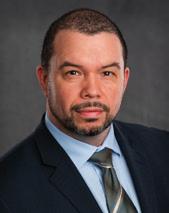
These financial statements have been prepared in compliance with Section 376/377 of the Local Government Act and Section 167 of the Community Charter and in accordance with Generally Accepted Accounting Principles approved by the Public Sector Accounting Board and the Chartered Professional Accountants of Canada.
I am pleased to submit the Regional District of Central Okanagan’s (RDCO) 2020 Annual Report. The purpose of this report is to present the financial results for the fiscal year ended December 31, 2020, including the Audit Report, Consolidated Financial Statements, and supplementary information for the year ended December 31, 2020.
The Financial Statements are the responsibility of the RDCO’s management . They have been prepared in compliance with Section 376/377 of the Local Government Act and Section 167 of the Community Charter and in accordance with Generally Accepted Accounting Principles approved by the Public Sector Accounting Board and the Chartered Professional Accountants of Canada. The RDCO maintains a system of internal accounting controls, including policies and procedures, designed to safeguard the organization’s assets and provide timely and reliable financial information.
The 2020 Financial Statements have been audited by BDO Canada LLP, the RDCOs independent external auditor, who have expressed that in their opinion, these statements present fairly, in all material aspects, the financial position of the Regional District as of December 31, 2020. The Independent Auditor’s Report appears immediately following this letter.
In 2020, the RDCO’s financial position improved as its net financial asset position of $23.62 million increased to $31.59 million. This $7.97 million increase resulted from a decrease in Financial Assets ($5.03 million decrease) offset by a more considerable decrease in Financial Liabilities ($13.01 million decrease).
Although the RDCO’s financial assets decreased overall, this decrease was primarily due to a $12 34 million reduction in Municipal Finance Authority debt charges recoverable from member municipalities. Offsetting this decrease was an increase in the RDCO’s cash position of $7.74 million and an increase in receivables of $0 34 million
The RDCO’s Financial Liabilities decreased $13 01 million, primarily due to long-term debt decreasing by $12 .58 million . The decrease in debt includes a decrease to Member municipalities’ debt of $12.11 million in 2020, which is offset by a decrease to Municipal Finance Authority debt charges recoverable from members, as mentioned above, and has no net effect on annual operating surplus and accumulated surplus This same scenario applies to a decrease of $770,027 to MFA Deposits (Financial Assets) being offset by a reduction to MFA Reserves (Financial Liabilities).
It is anticipated that there will be a continued trend toward an increase in net financial assets as the RDCO continues to extinguish long-term debt and contribute to capital reserves to address future infrastructure needs. The RDCO also has a healthy amount of operating reserves This trend is a key indicator in assessing the organization’s financial well-being as it reflects the RDCO’s ability to meet its current financial commitments and its current service commitments to the public
Non-financial assets increased slightly in 2020 to $114.47 million (2019 - $114.19 million) as a net result of a $2.09 million increase in tangible capital assets, with an offsetting increase of $1.79 million in amortization of tangible capital assets. Non-financial assets are not available to discharge existing liabilities and are therefore held for use in the provision of services. They have useful lives extending beyond the current year and are not intended for sale in the ordinary course of business.
The 2020 Consolidated Capital Program Budget was $12.54 million in 2020, with $3.64 million expended in Regional Park Development and Land Acquisition and $4.88 million on various Sewer projects. Some of these projects will not be completed until 2021 The RDCO primarily financed capital expenditures through reserves, grants, debt, and taxation.
The consolidated annual operating surplus (revenues less expenses) increased by $1.76 million (27.12%) from $6.49 million in 2019 to $8.25 million in 2020. This increase was due to an increase in taxation revenue, government grants and reserve contributions Wages and Benefits, Contracts, and Supplies expenses increased year over year, which offset increases in revenues. The annual operating surplus of $8.25 million resulted in an increase in the accumulated surplus from $137 .81 million to $146 .06 million .
Significant financial indicators to highlight for 2020 are as follows:
• Cash (Note 1) increased by $7.74 million (21.47%) in 2020 from 2019.
• Long-term Debt (Note 8) decreased by $12.58 million (10.10%) in 2020 from 2019.
• The RDCO’s financial assets-to-liabilities ratio is 1.24, meaning the Regional District has financial assets exceeding liabilities and therefore has financial resources on hand that can finance future operations. This indicator shows that the RDCO is in a sustainable position
• The RDCO’s reserve funds increased by $6.57 million (26.31%), from $24.99 million to $31.56 million due to the RDCO Board’s direction to implement asset management strategies This direction includes building up capital reserves to fund future capital expenditures . The RDCO will use these reserves to address its infrastructure deficit, provide funds for the renewal and replacement of existing assets in the future, and manage growth due to new investments.
The Local Government Act Sections 374 and 375 require regional districts to complete a five-year financial plan and institute a public participation process to explain the plan. The financial plan, in the form of a bylaw, must be adopted by March 31 of each year. On March 23, 2020, the RDCO Board adopted the 20202024 Financial Plan as part of its financial planning process

The RDCO approved $18 .7 million in capital projects in the 2021 - 2025 Financial Plan including:
• $10.77 million (58%) for Regional Parks projects with the largest budgeted expenditures being in Land Acquisition ($6.91 million) and Park Development ($3.04 million).
• $2.66 million (14%) for improvements to the RDCO’s existing infrastructure, such as community recreation facilities, community parks and volunteer fire departments
• $4.58 million (24%) for Sewer capital projects including $2.48 million for Westside Lift Station projects and $2 million for other projects at the Westside Wastewater Treatment Plant
• $0.7 million (4%) for Water capital projects including $0.57 million for the Westshore Water System and $122,718 for the Killiney Water System.
On a macroeconomic level, the impact of the COVID-19 pandemic is still being determined . It is unclear the outcome for the Central Okanagan economy or, further yet provincially, federally and globally. However, the Organization for Economic Co-operation and Development (OECD) has indicated that the broader economy will rebound in 2021 and 2022 due to reduced COVID-19 restrictions in the second half of 2021. This rebound could result in inflationary pressures and increased interest rates which would negatively impact the overall operations of the Regional District of Central Okanagan (RDCO).

Management continues to look at strategies to lessen inflationary impacts. In Spring 2021, the Consumer Price Index (CPI) exceeded 3% for the first time in a decade. The Bank of Canada aims to keep inflation at the 2% midpoint of an inflation-control target range of 1 to 3%. However, higher prices will affect the RDCO in the interim and beyond if prices for items such as contracted services begin to increase . Management also incorporates construction and municipal pricing indexes into budgets, which are significantly impacted by changes to inflation, to reduce the impact of escalating construction costs
The RDCO is also significantly affected by rising fuel, energy, and wage costs. The cost of energy is likely to increase as the economy rebounds and supply cannot keep up with demand due to a lack of capital investment in energy sectors by producers remaining cautious of the impacts of the pandemic. Increased energy prices will negatively impact downstream supply chains and further impact consumers, including the RDCO.
The RDCO continues to mitigate rising energy and fuel costs by developing a Greenhouse Gas reduction strategy . The strategy includes employing strategic use of energy-efficient products such as electric vehicles and LED lighting and entering into cost-reducing agreements with suppliers and other local government partners to achieve economies of scale.
As part of the RDCO Board’s Strategic Priorities Area of Environment, the RDCO continues to work on its Corporate Asset Management Strategy to better understand its infrastructure deficit and how it will fund the deficit in the future in a strategic, sustainable manner. This direction will ensure that the RDCO can maintain sustainable service levels and infrastructure at the lowest cost possible .
In order to be consistent with the Board’s value of transparency, and to provide stakeholders with meaningful information about the RDCO’s 2020 operations, the RDCO has completed the 2020 Annual Review Report. As a reflection of the RDCO’s commitment to excellence in financial management and reporting, the 2020 Annual Review Report will be submitted to the Government Financial Officers Association for consideration of the Canadian Award for Financial Reporting
On behalf of the RDCO, I would like to recognize all Board Directors and staff for their contributions to a triumphant 2020, overcoming unprecedented challenges and adversity . I would also like to acknowledge the remarkable team effort evident throughout the year resulting in this report and its information.
Hospital Converted Values (Revised Roll)
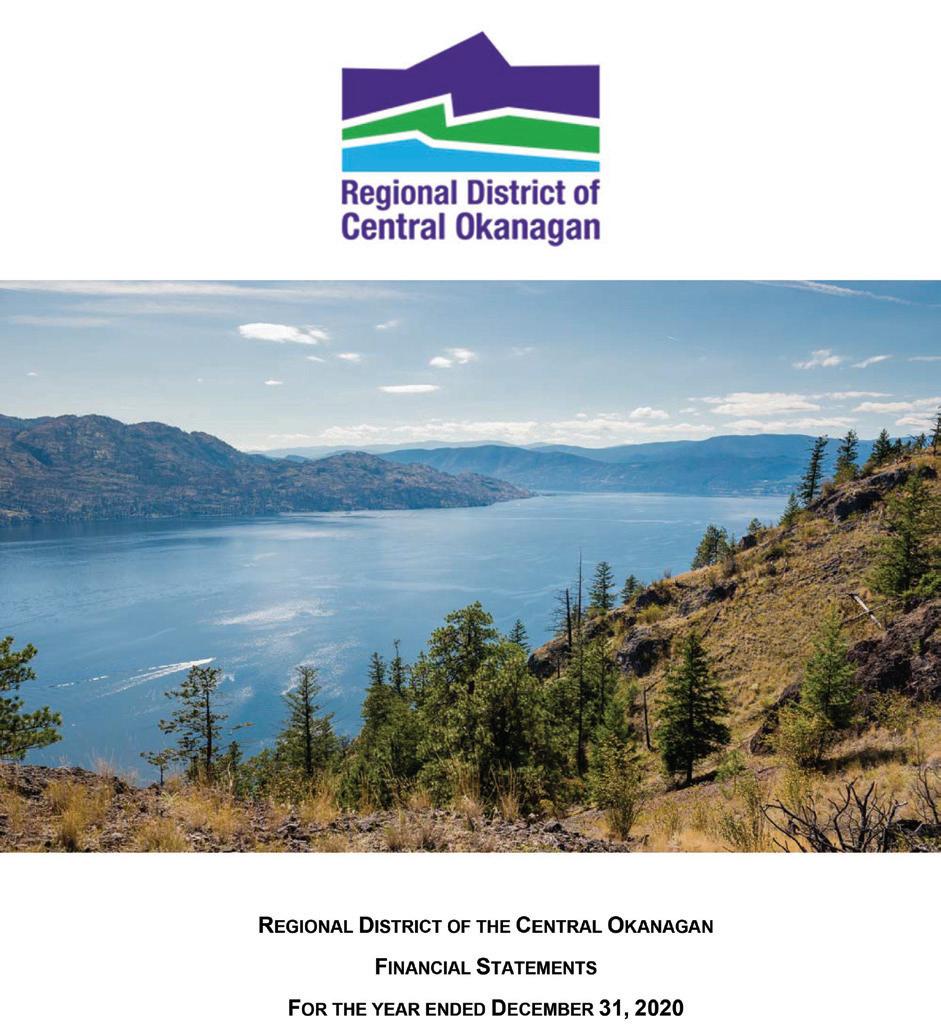
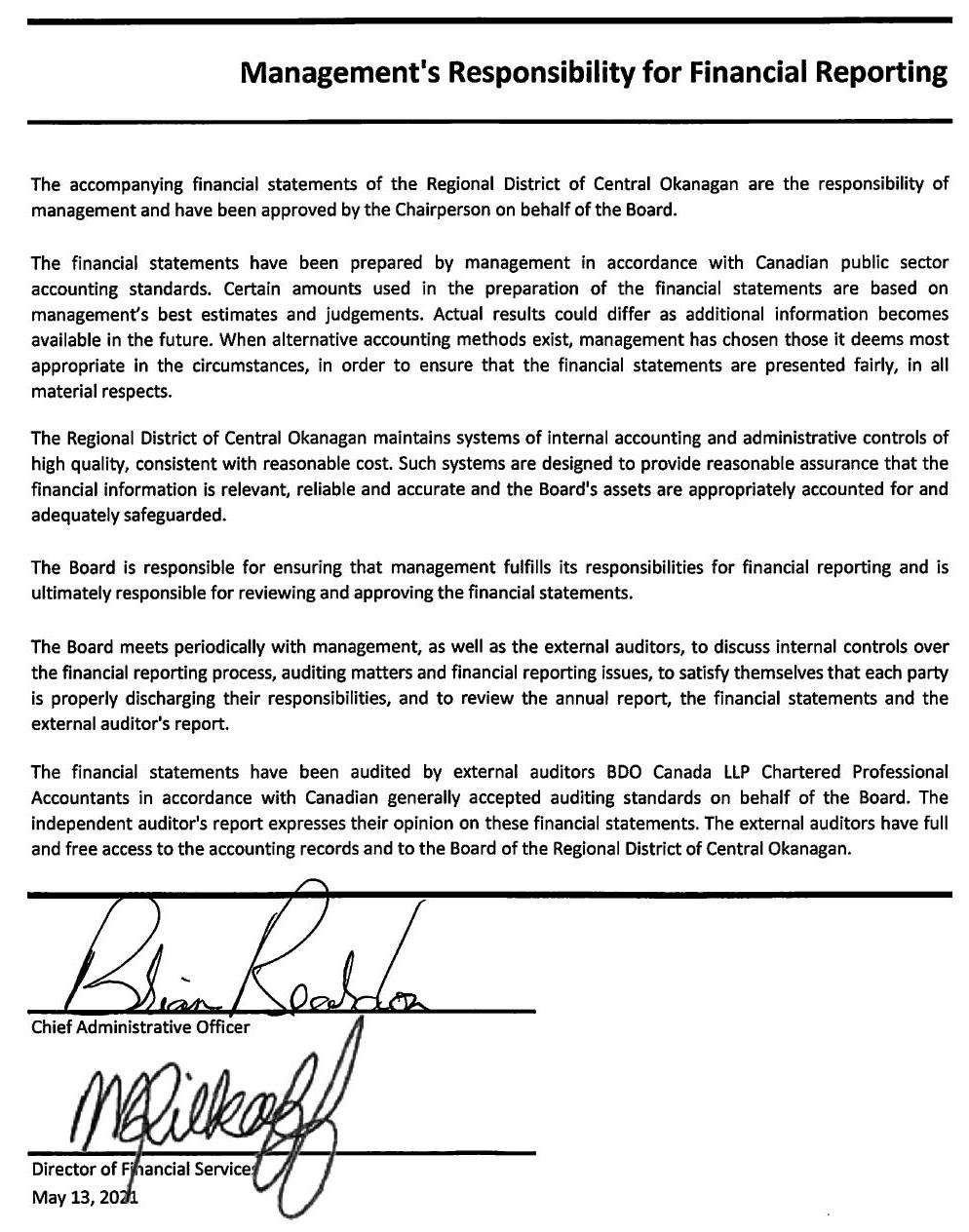
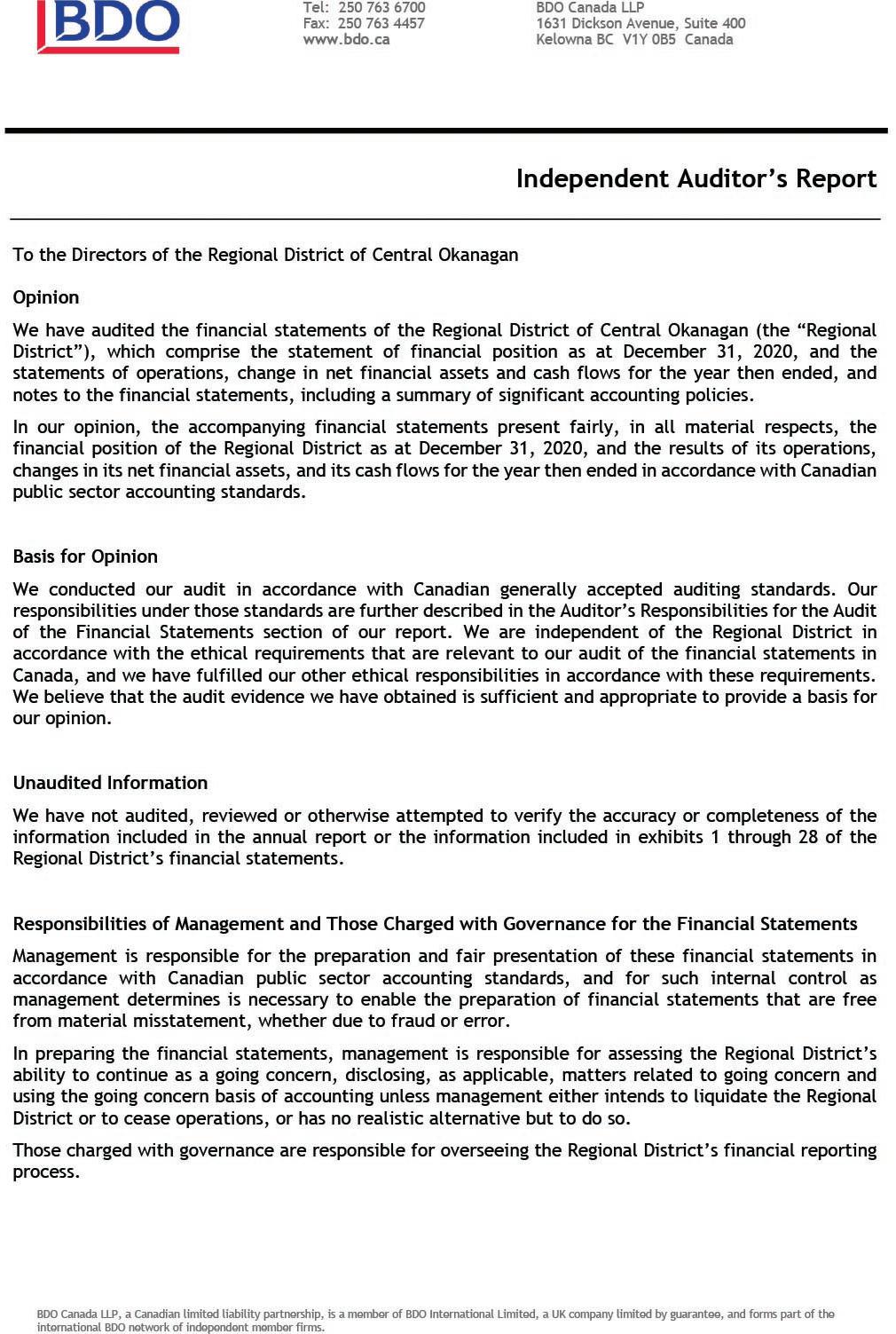
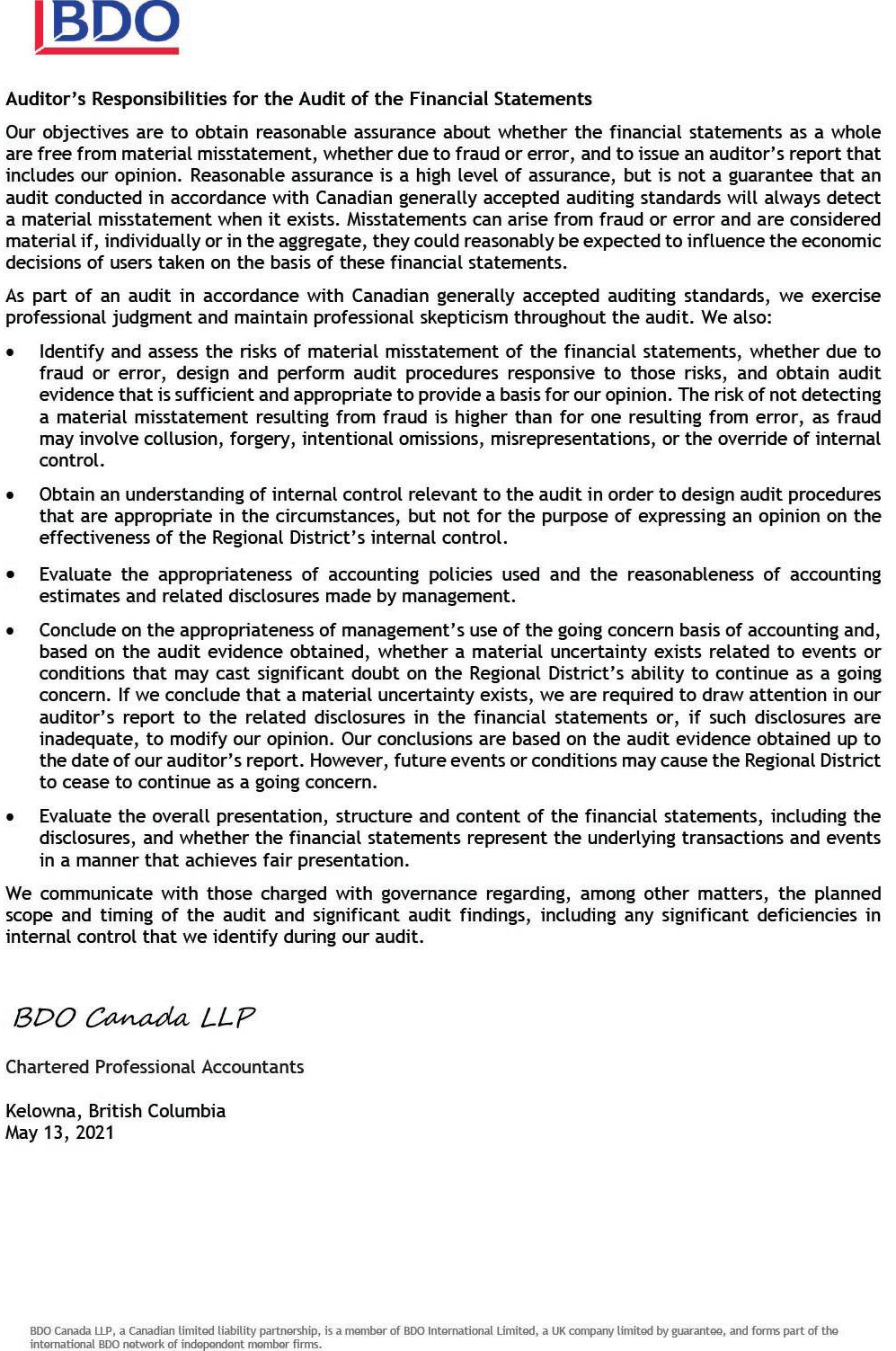
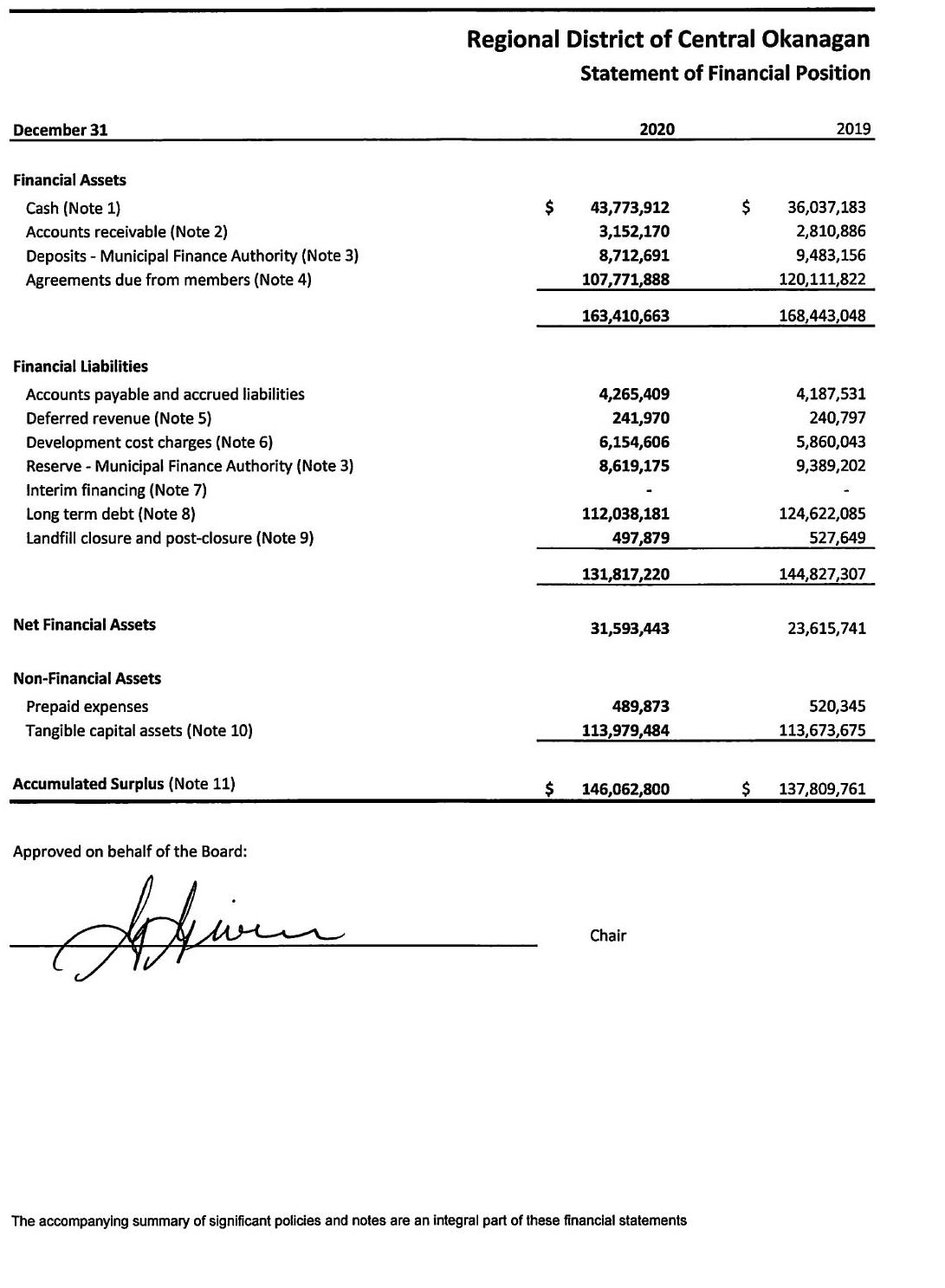
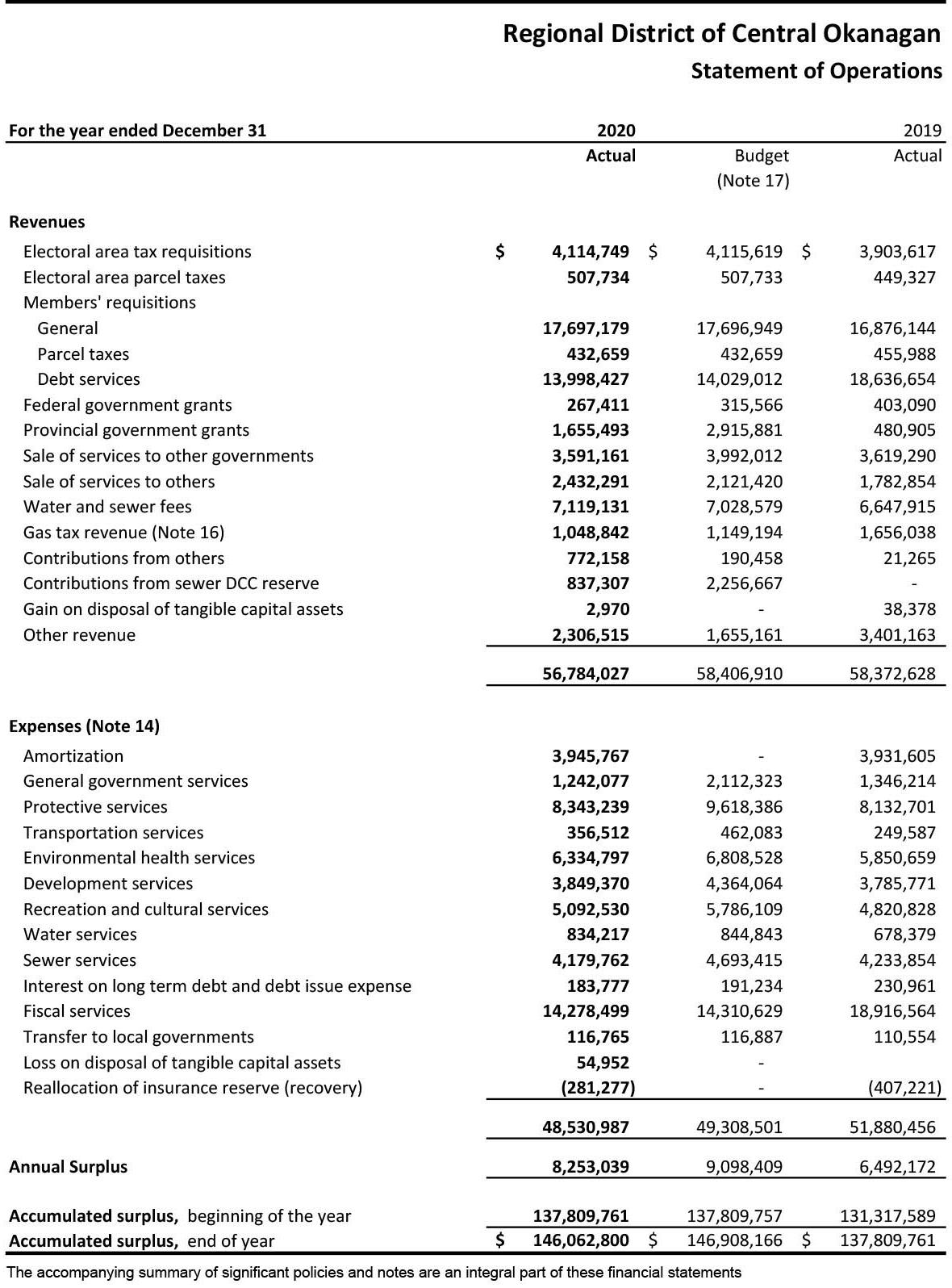
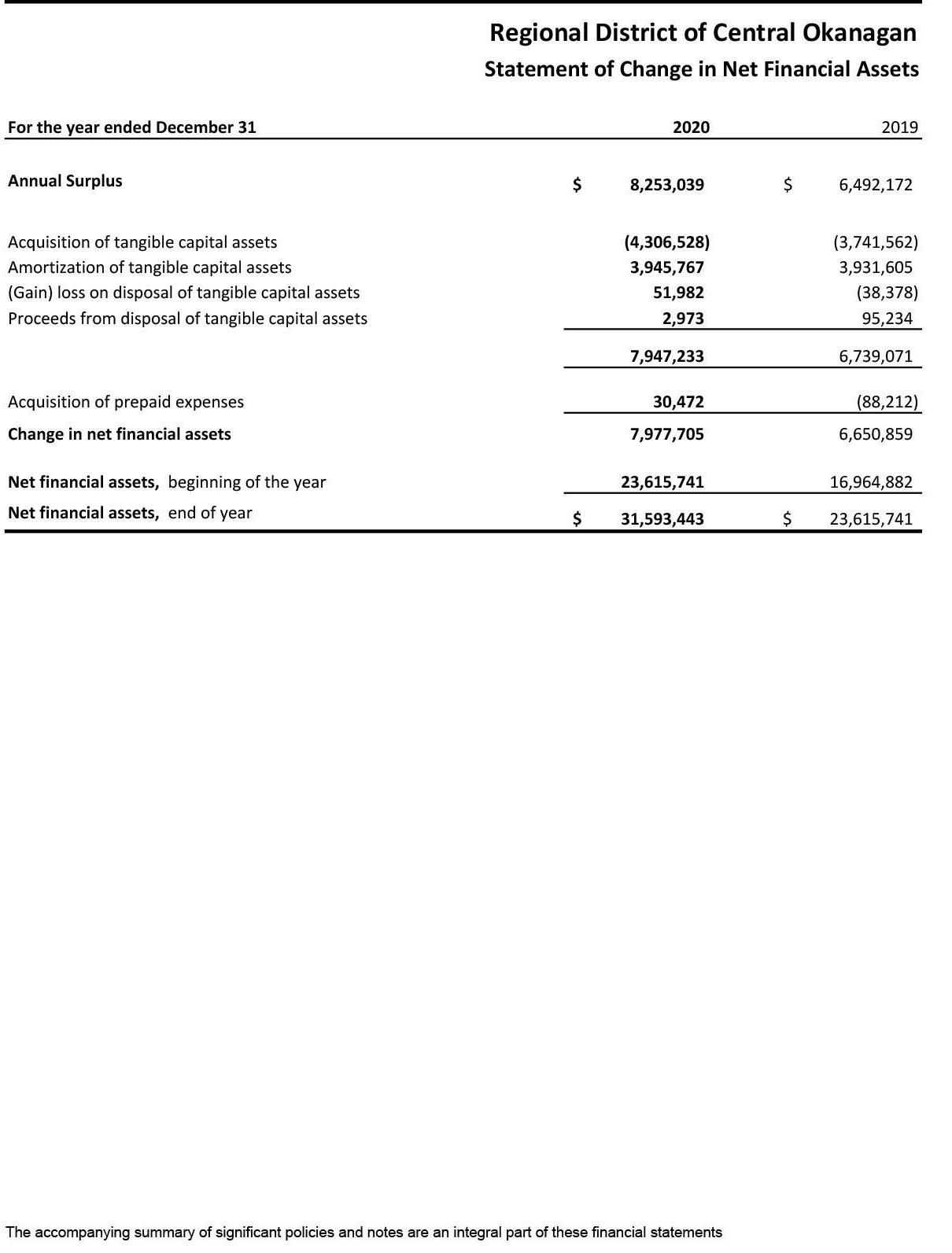
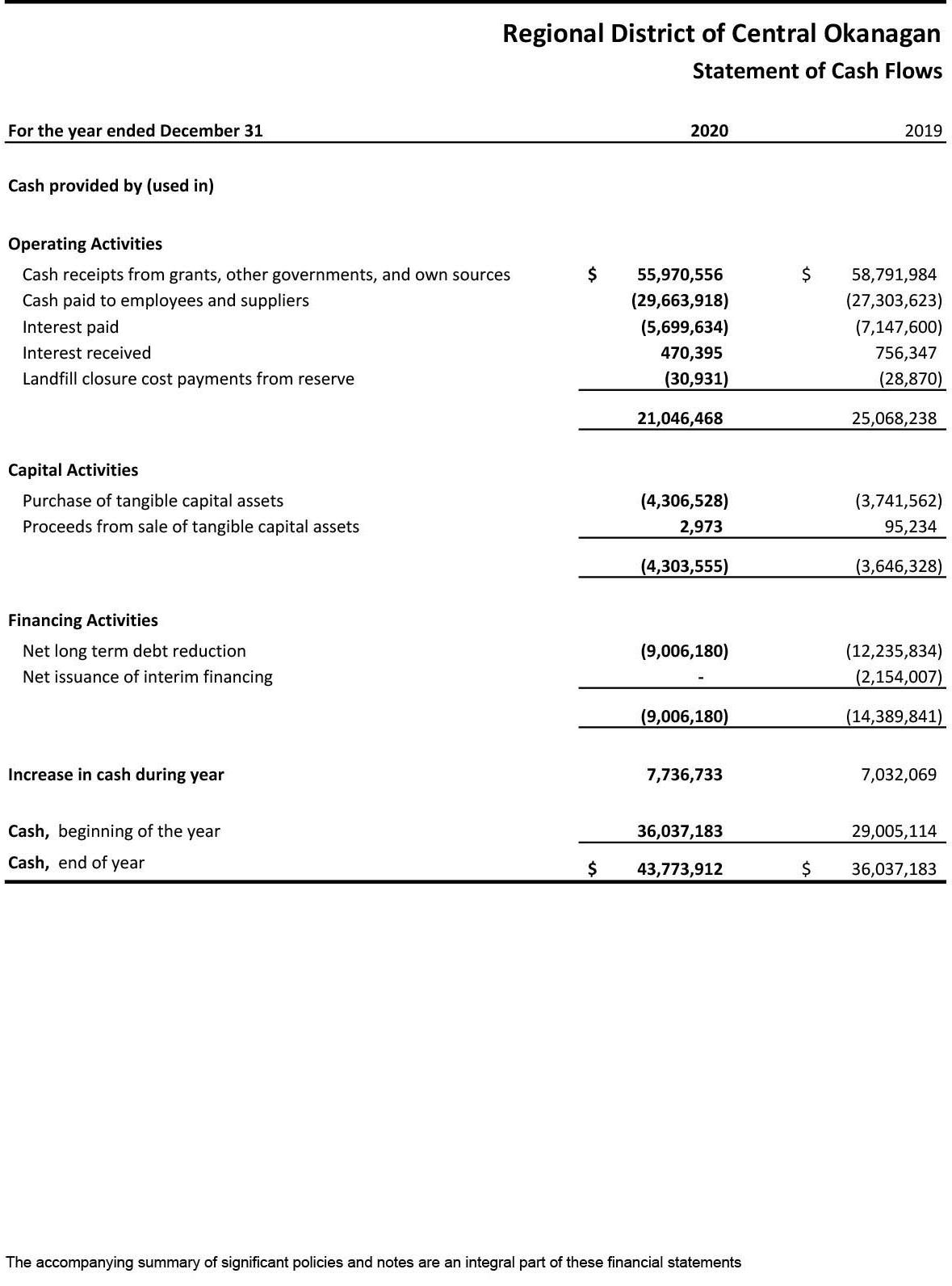
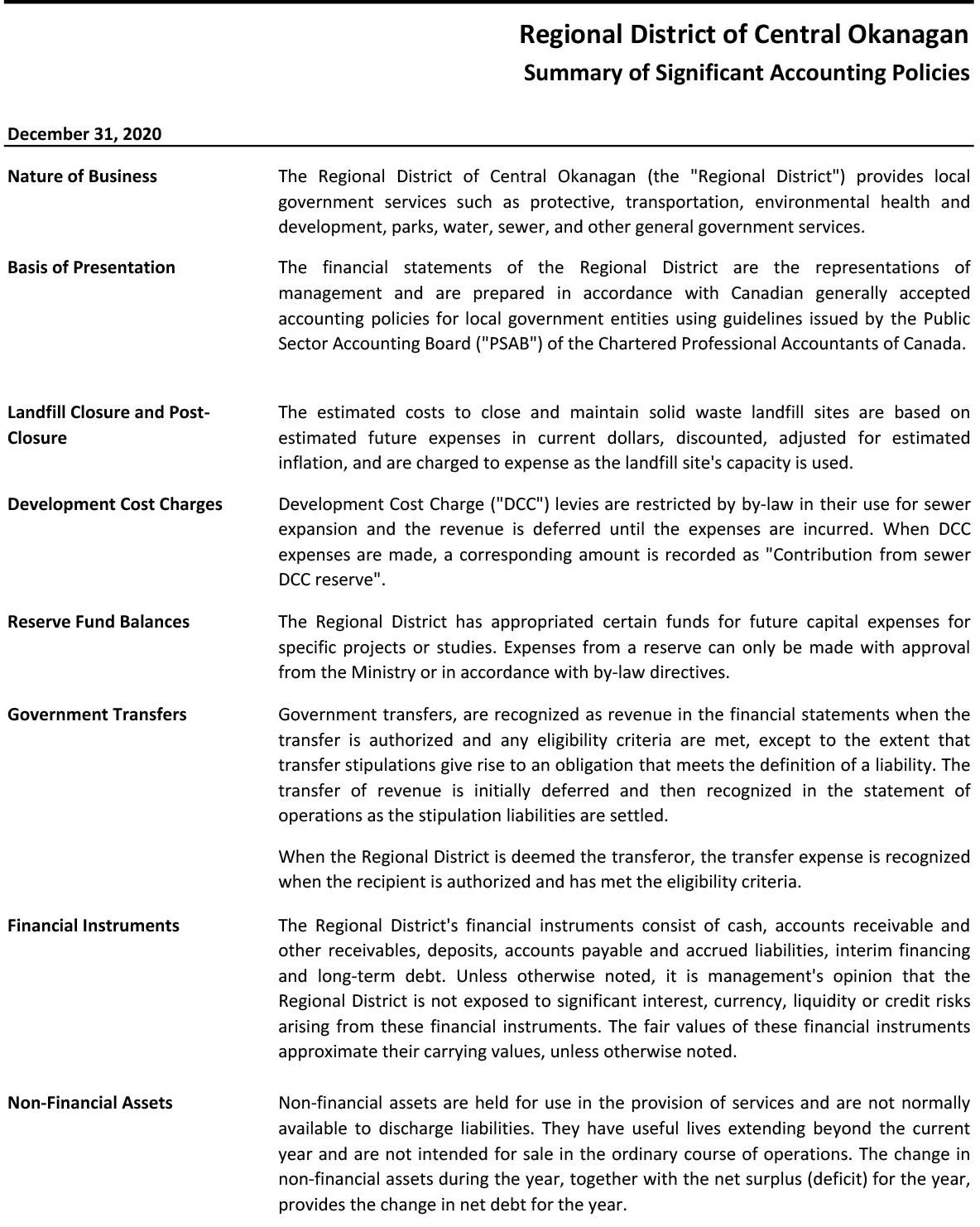
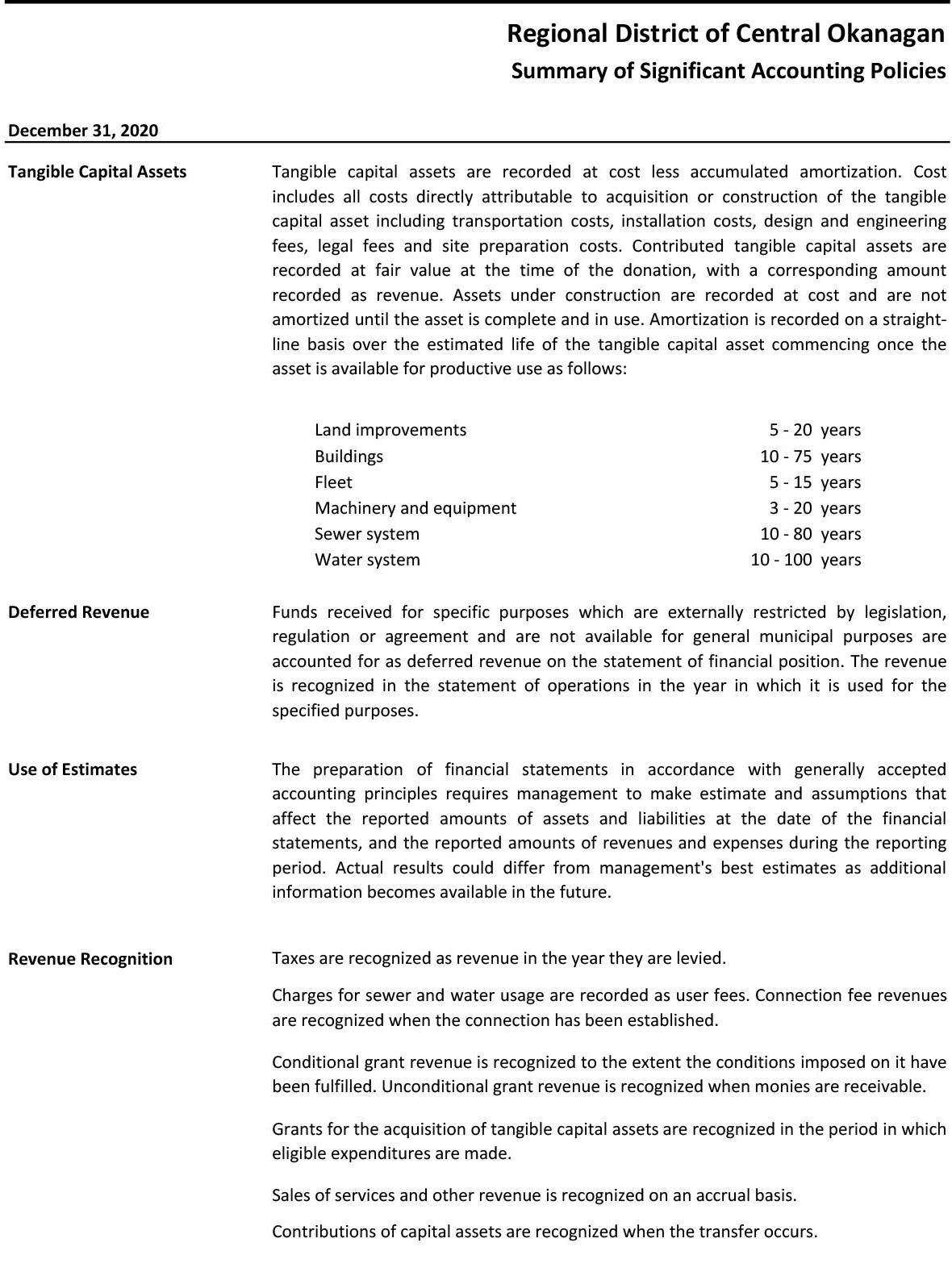
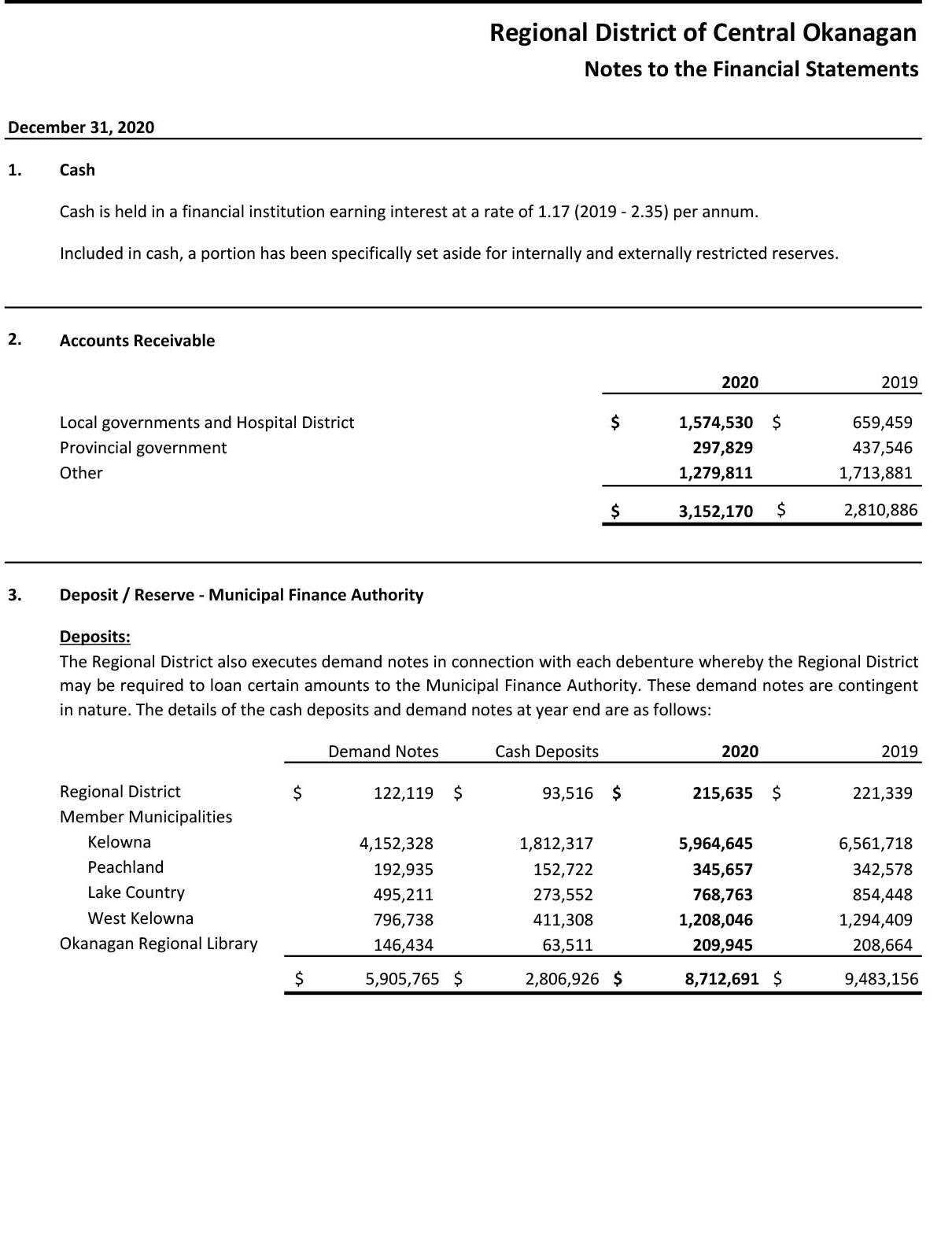
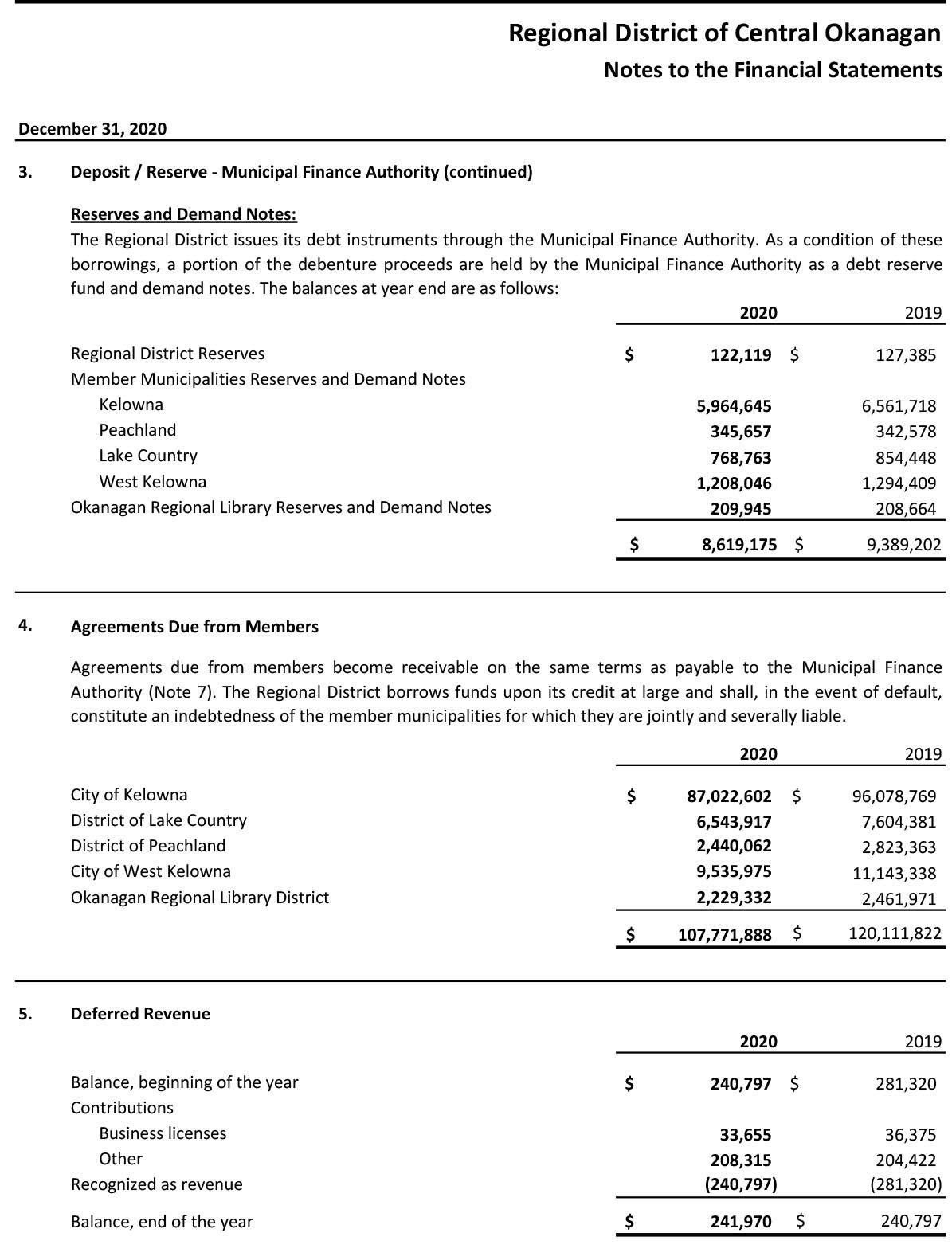
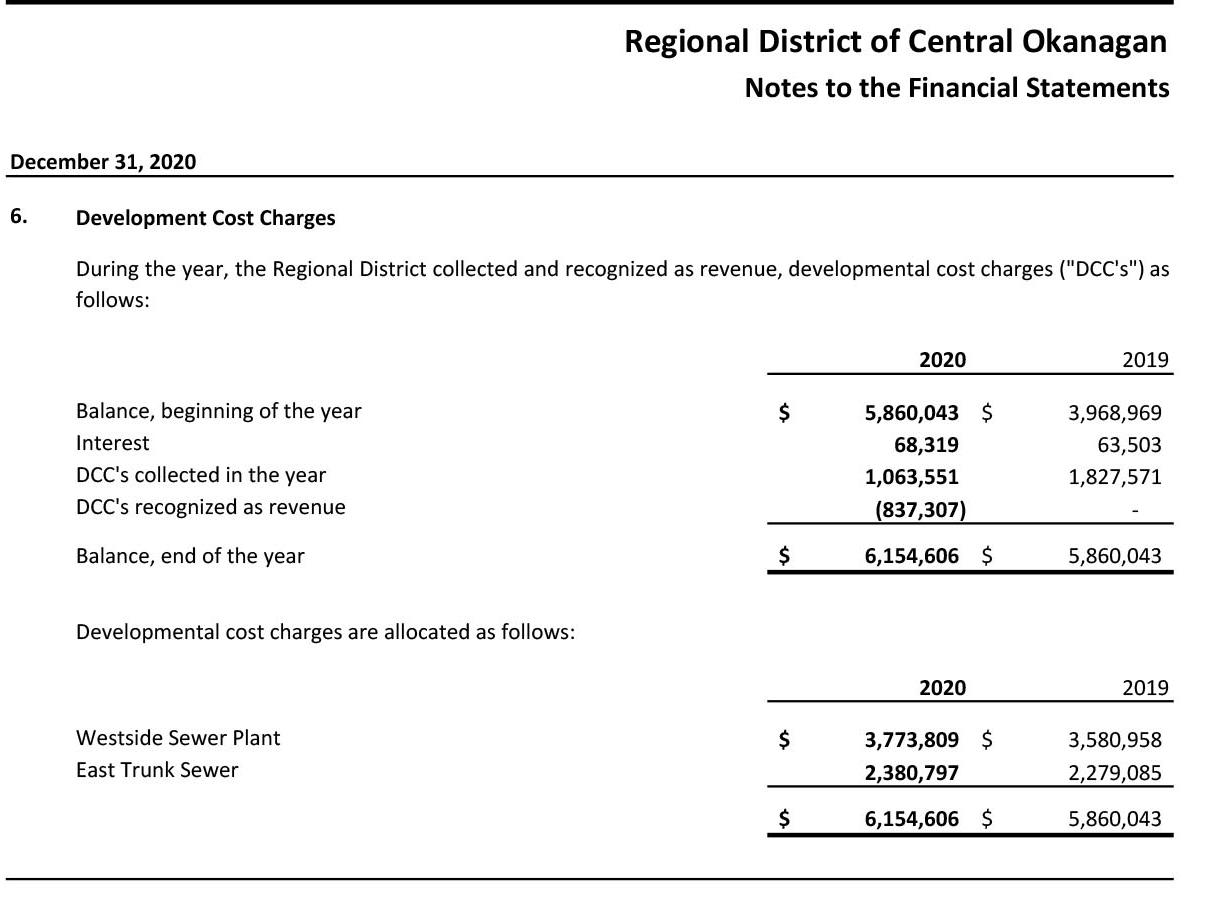
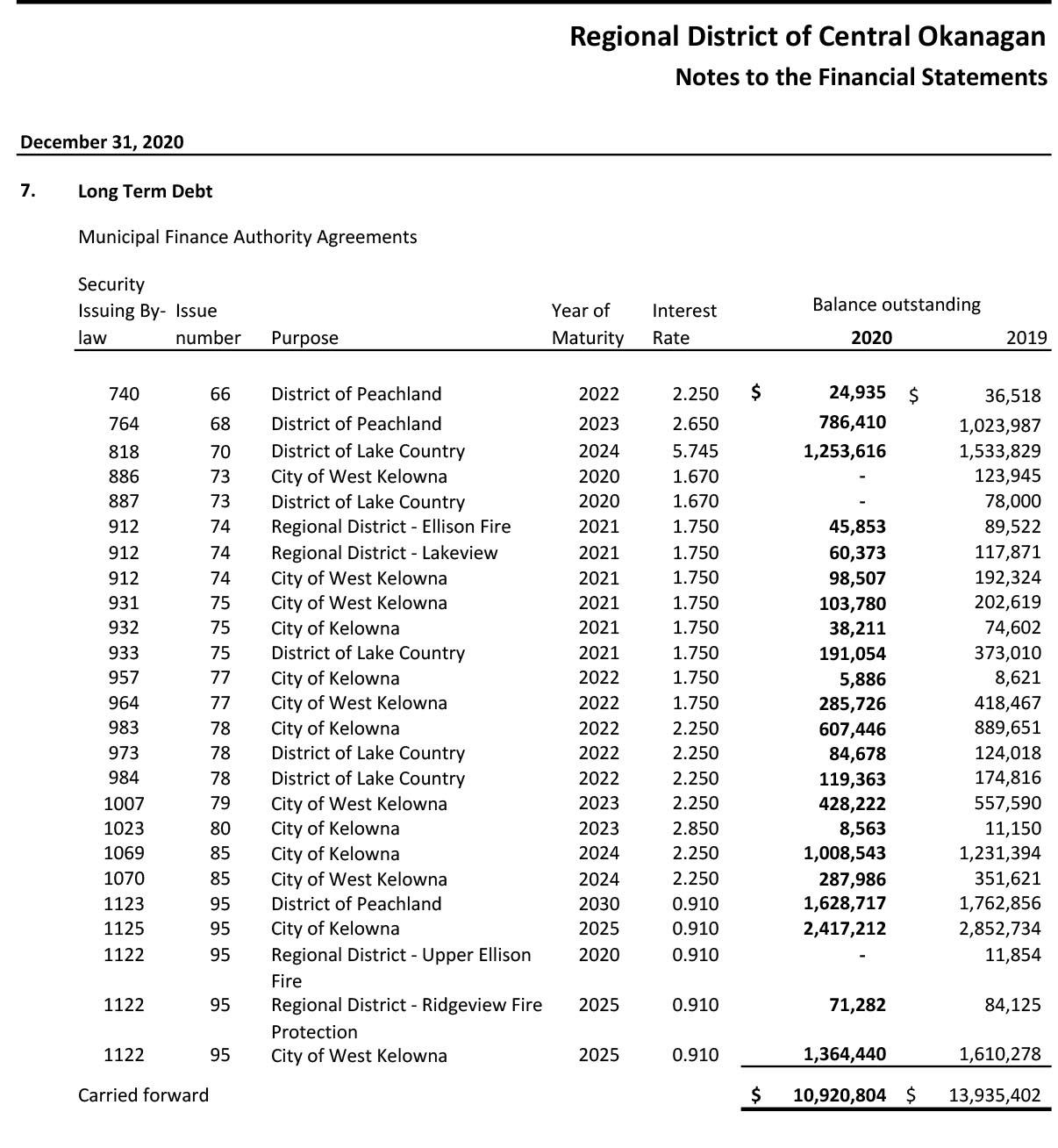
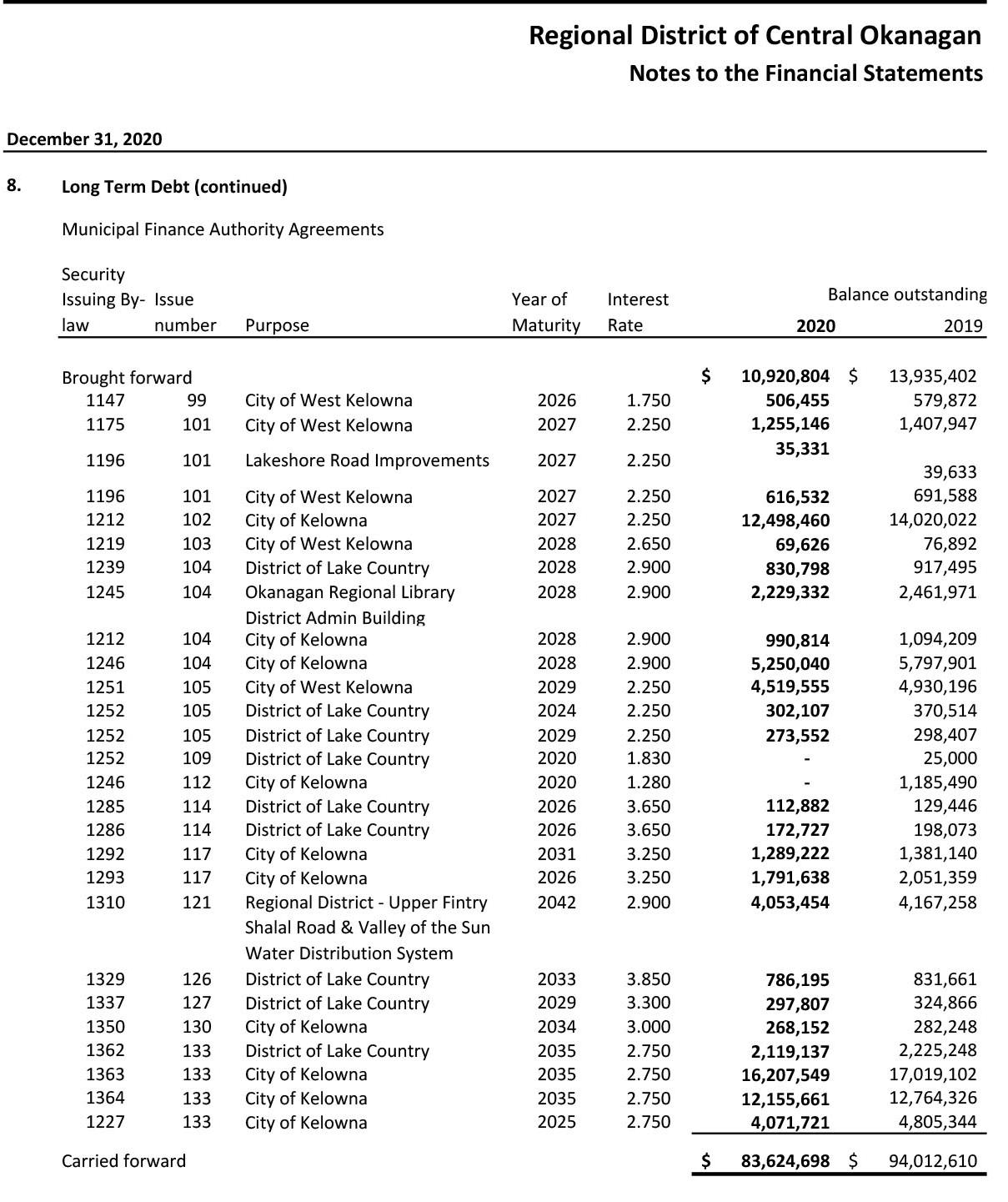
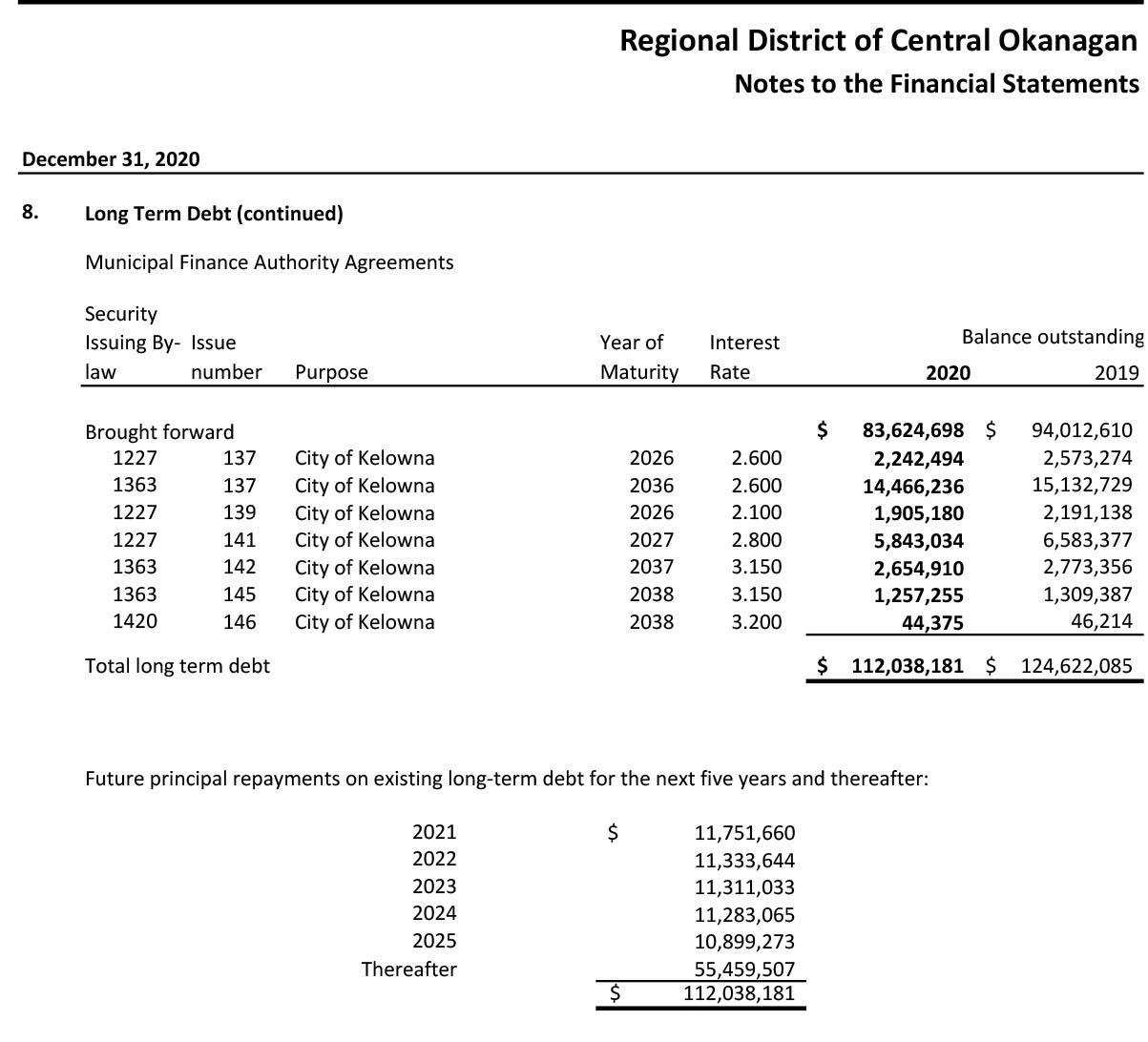
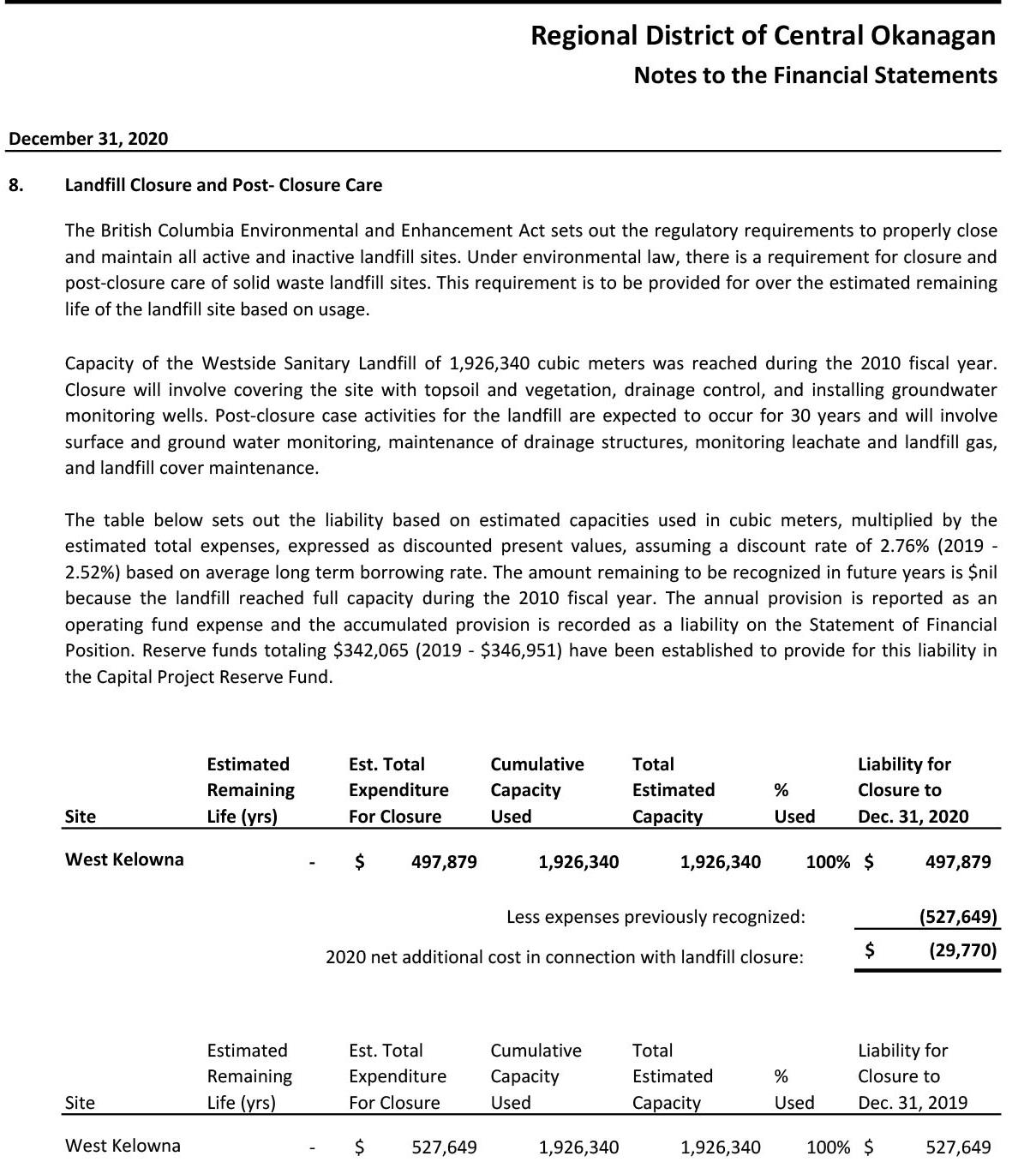
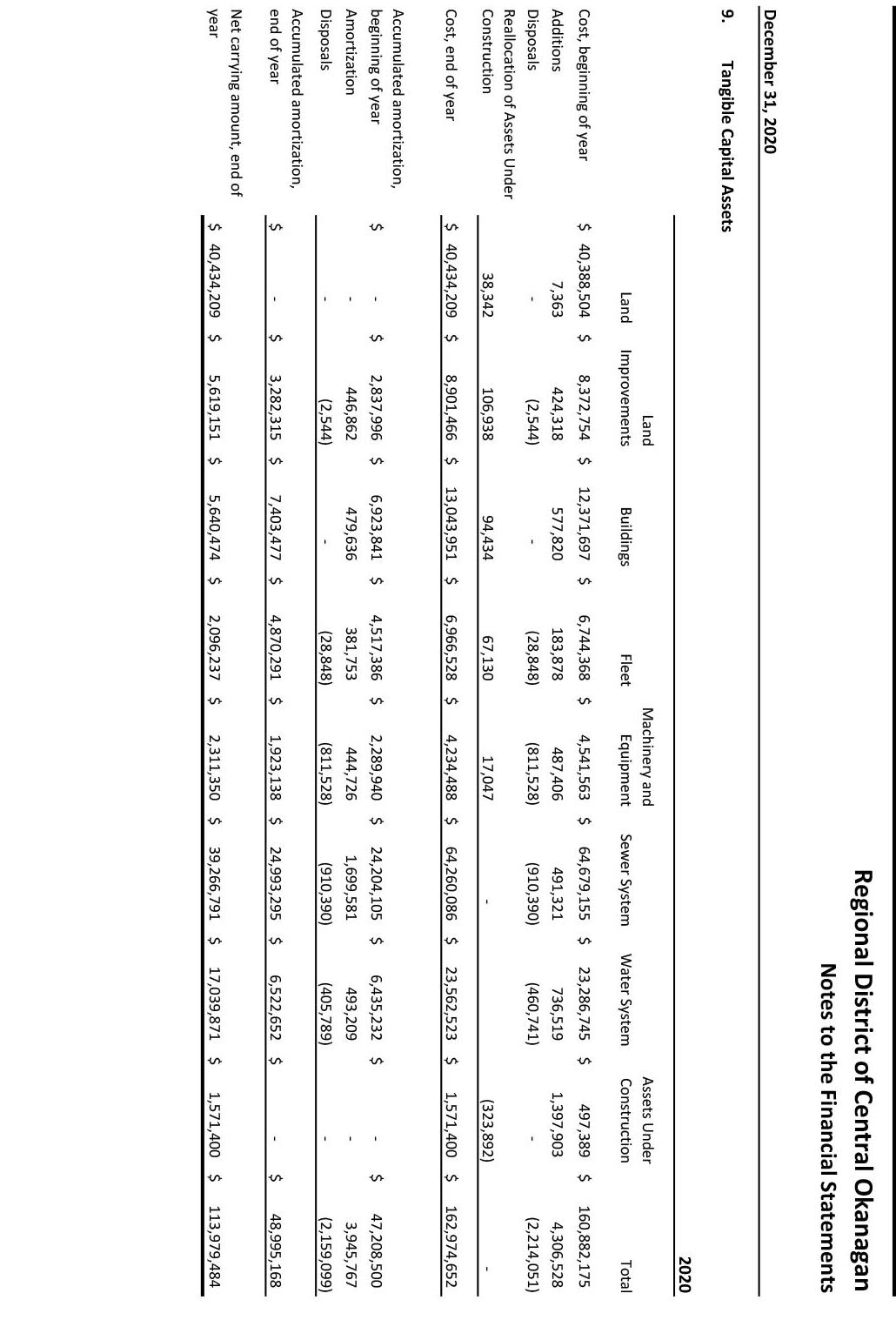
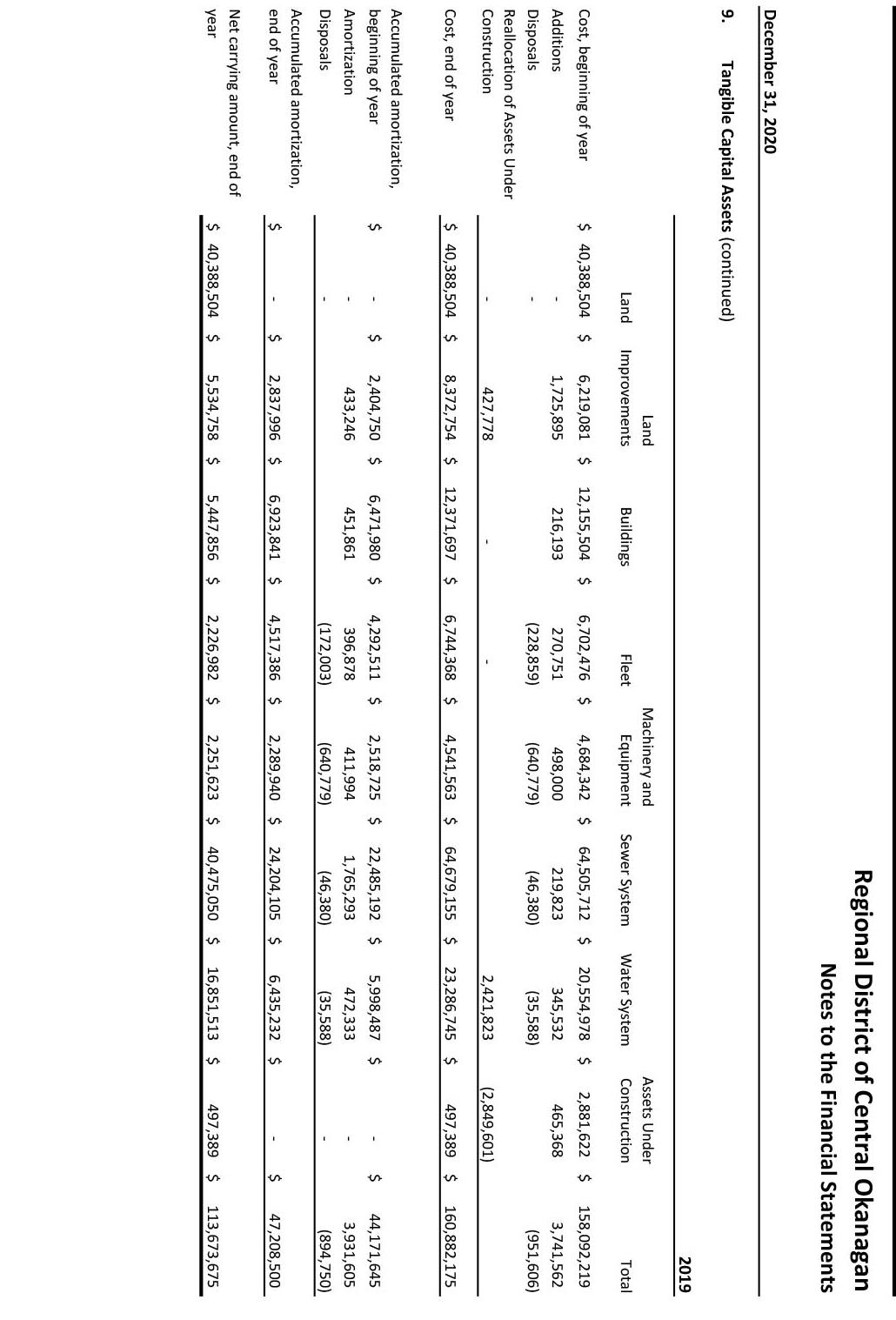
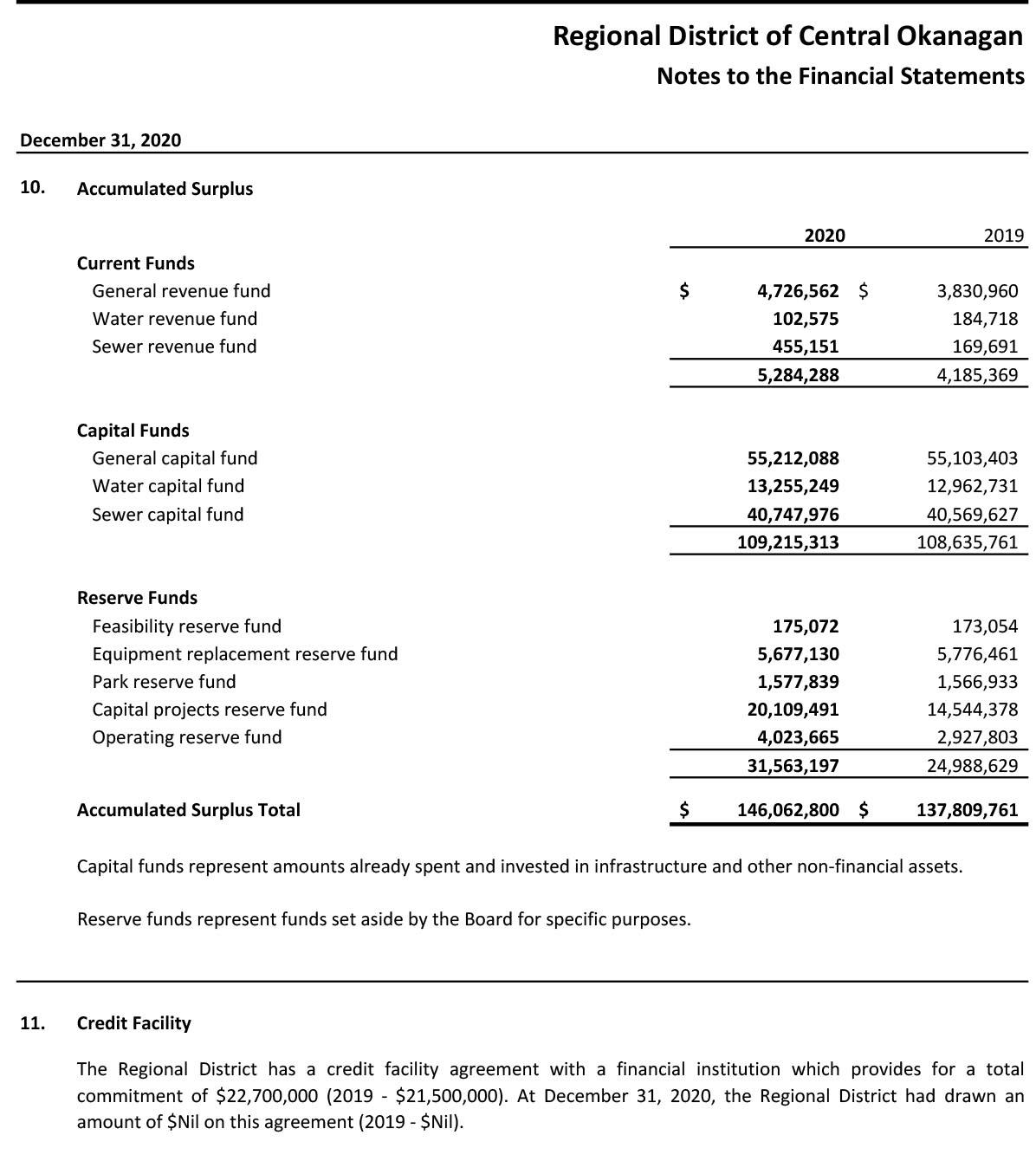
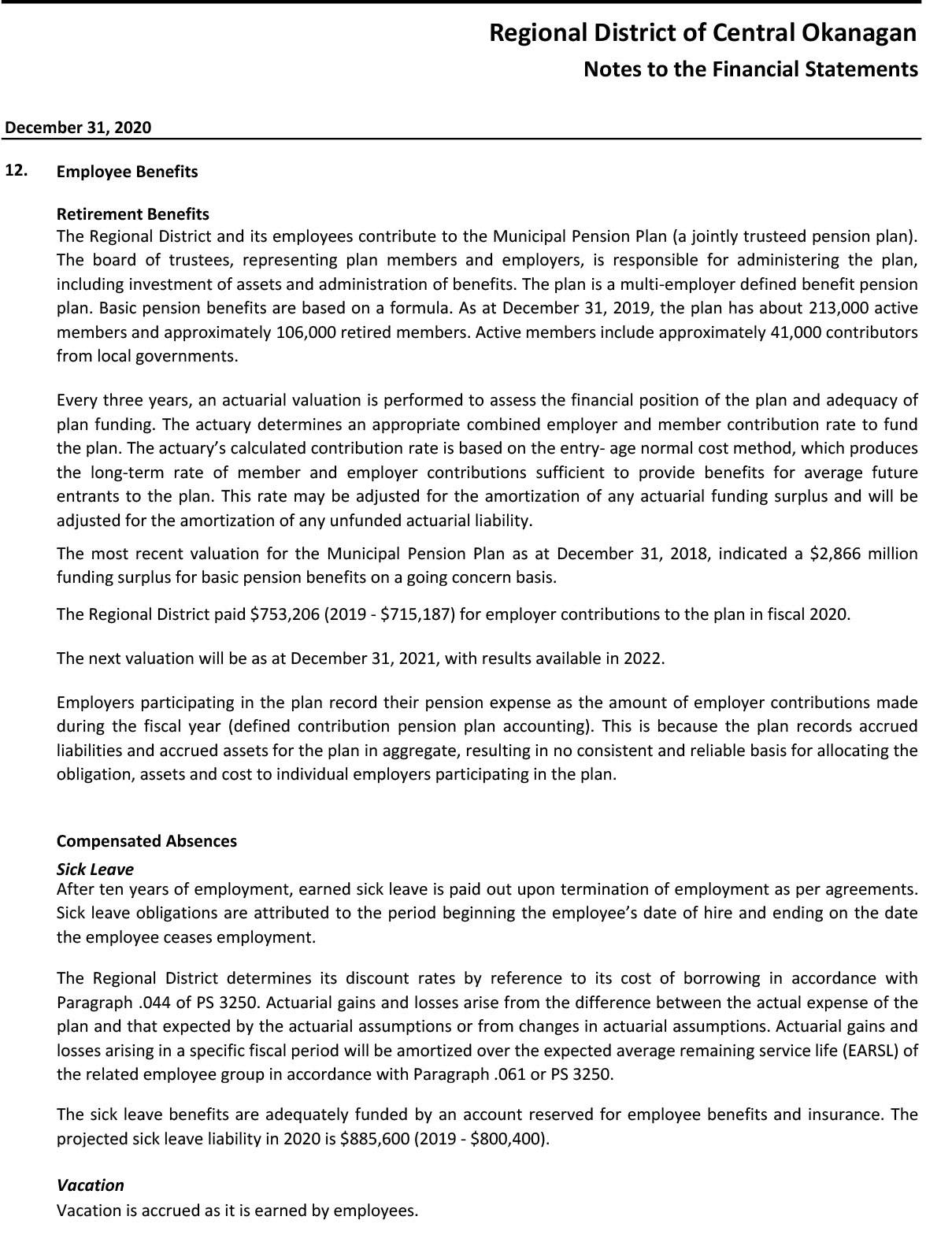
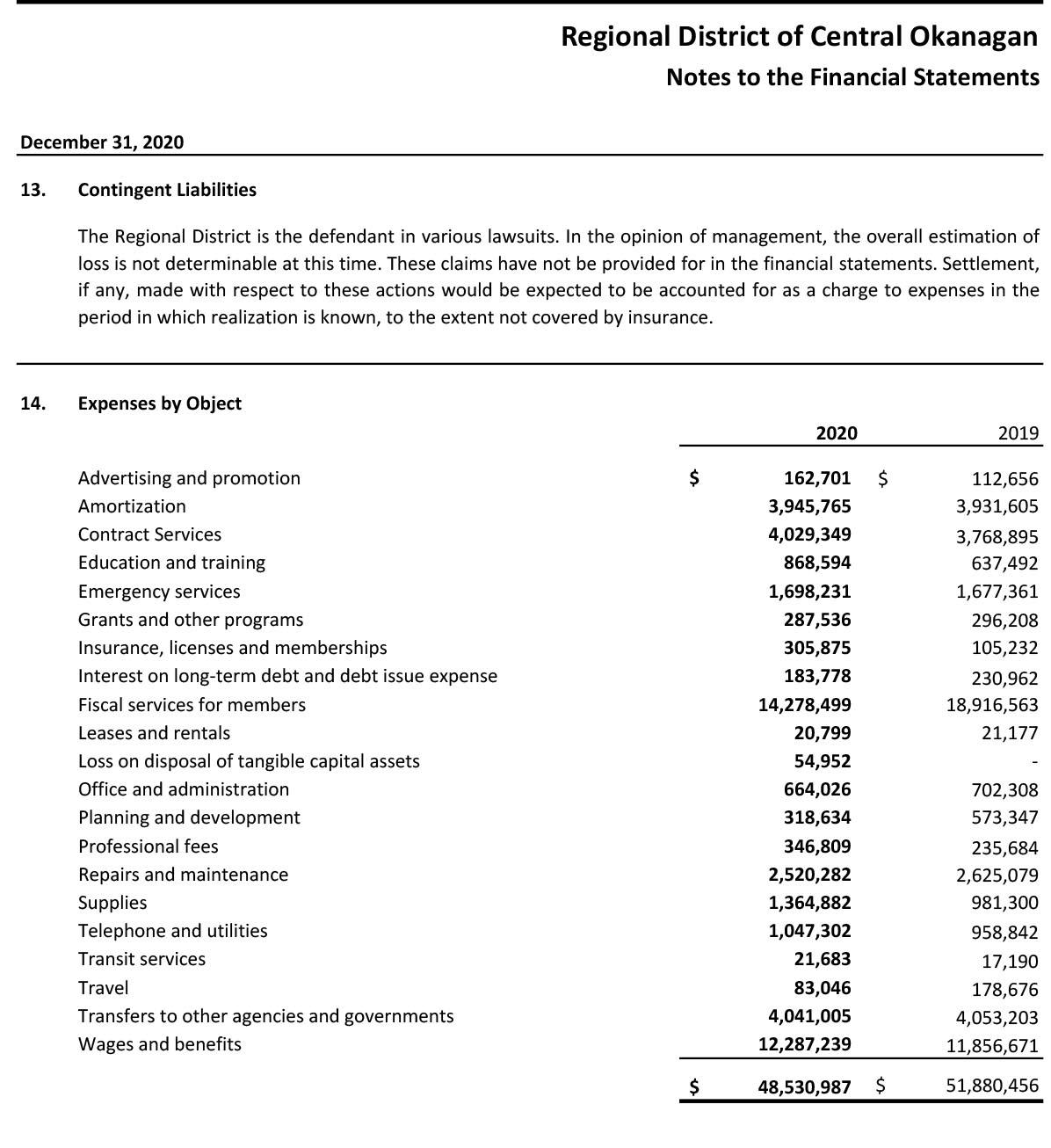
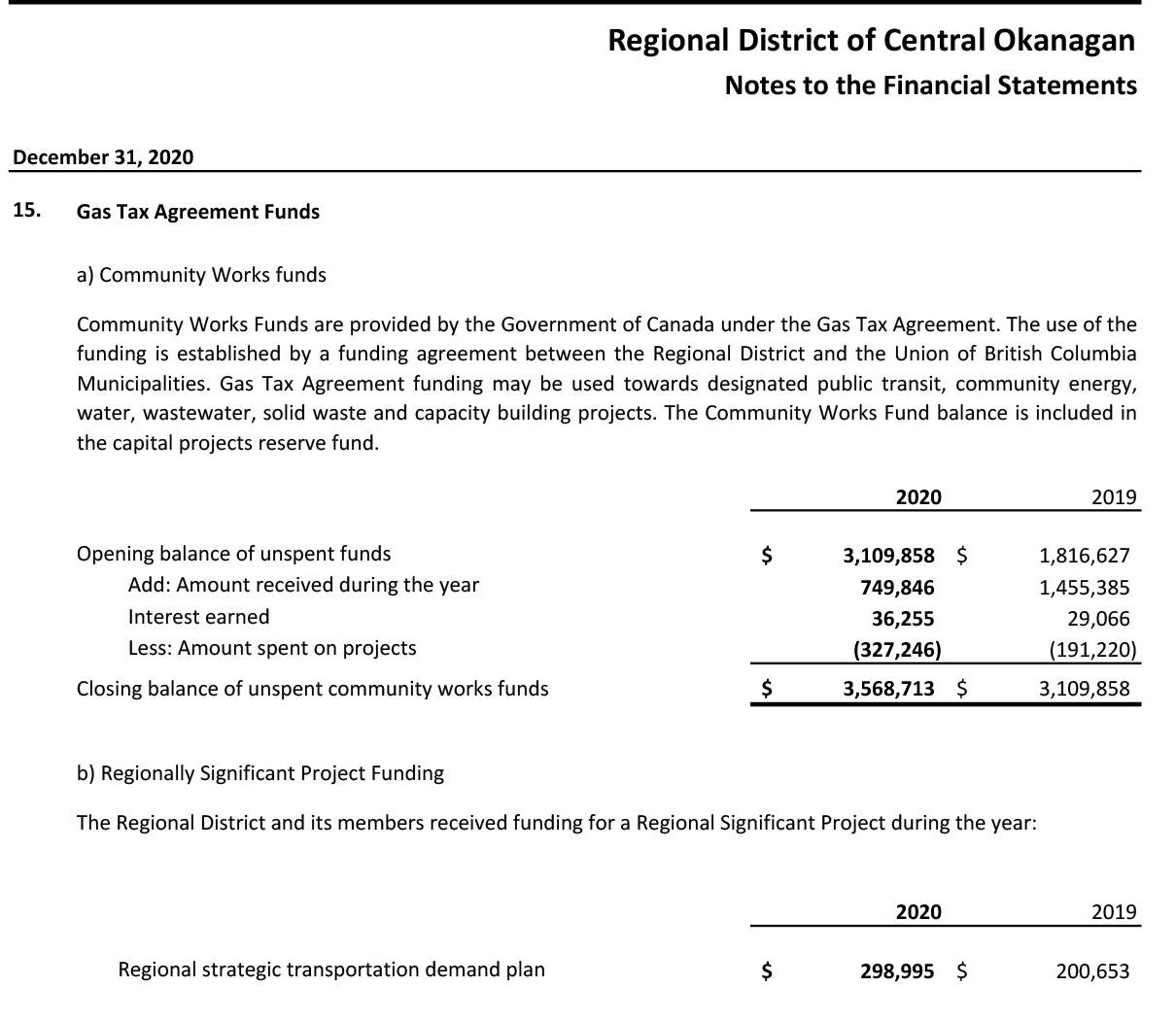
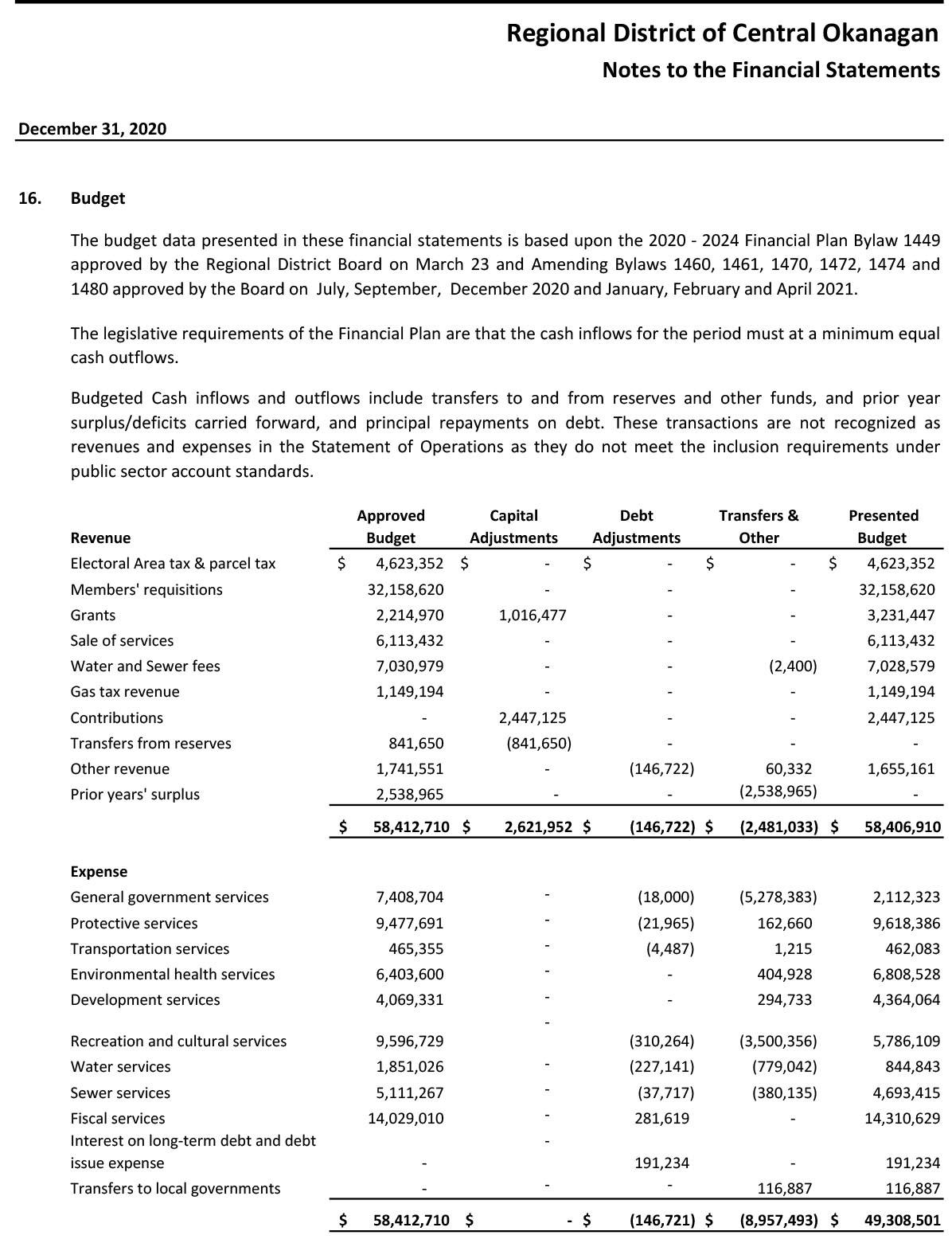

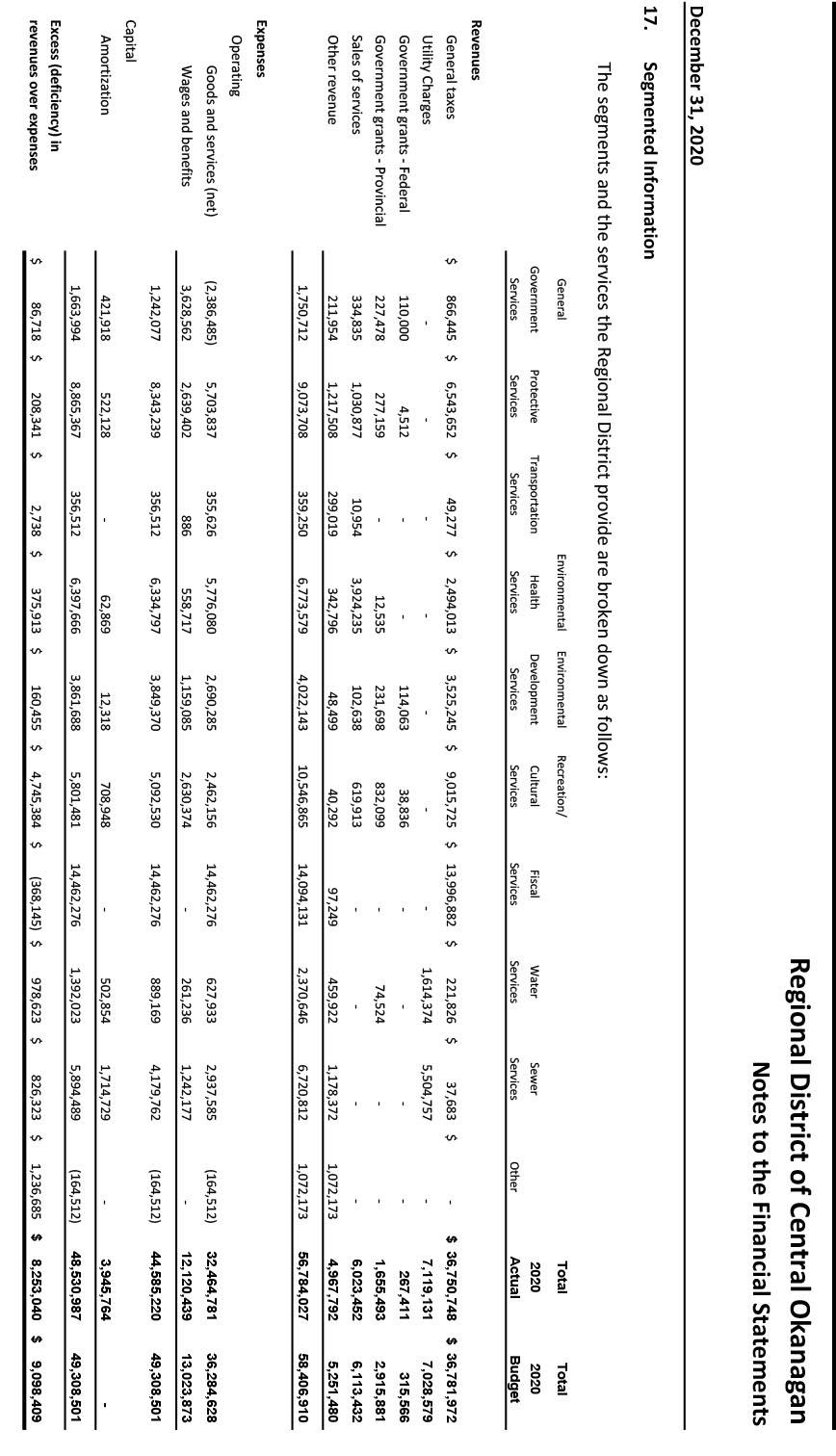
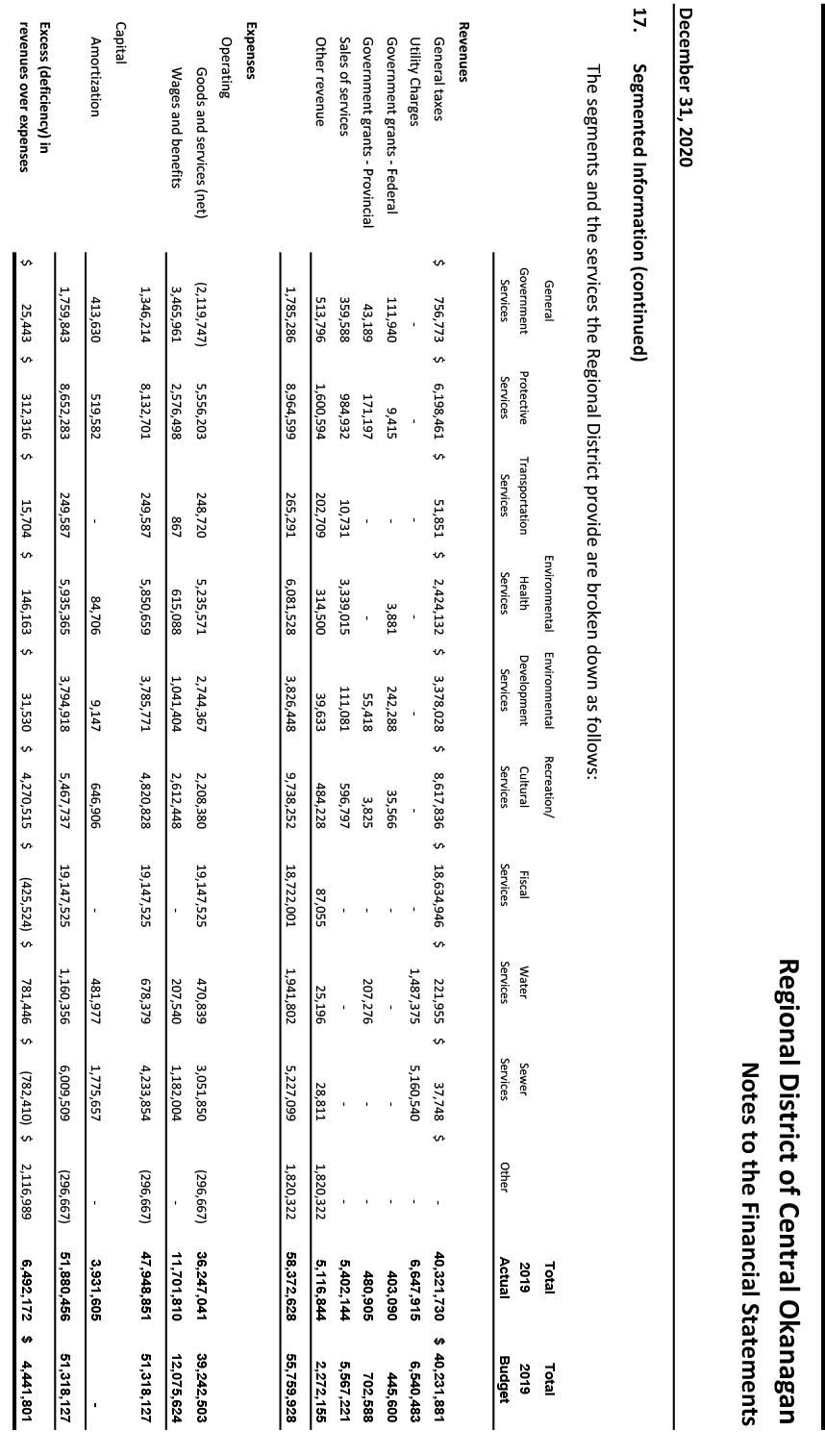
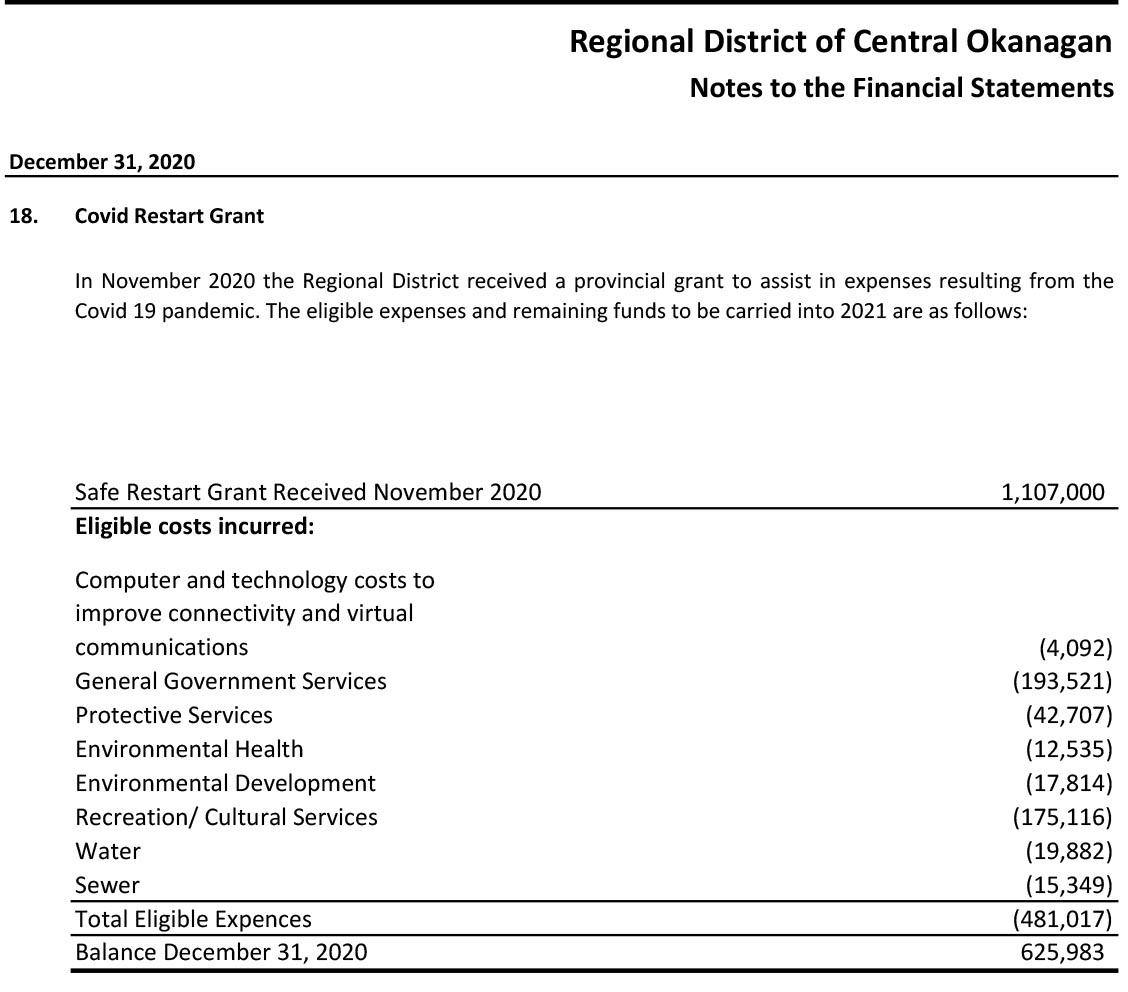
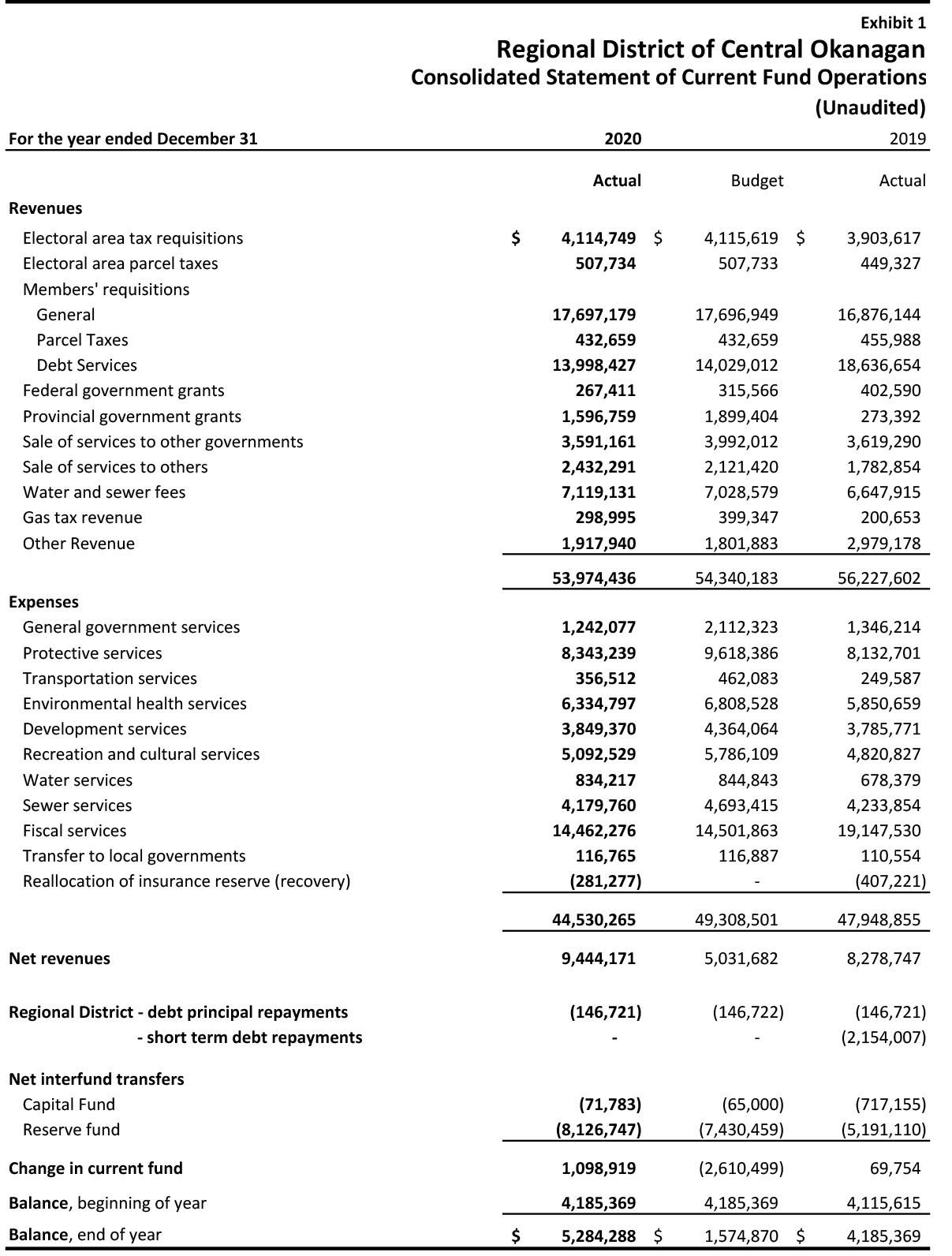
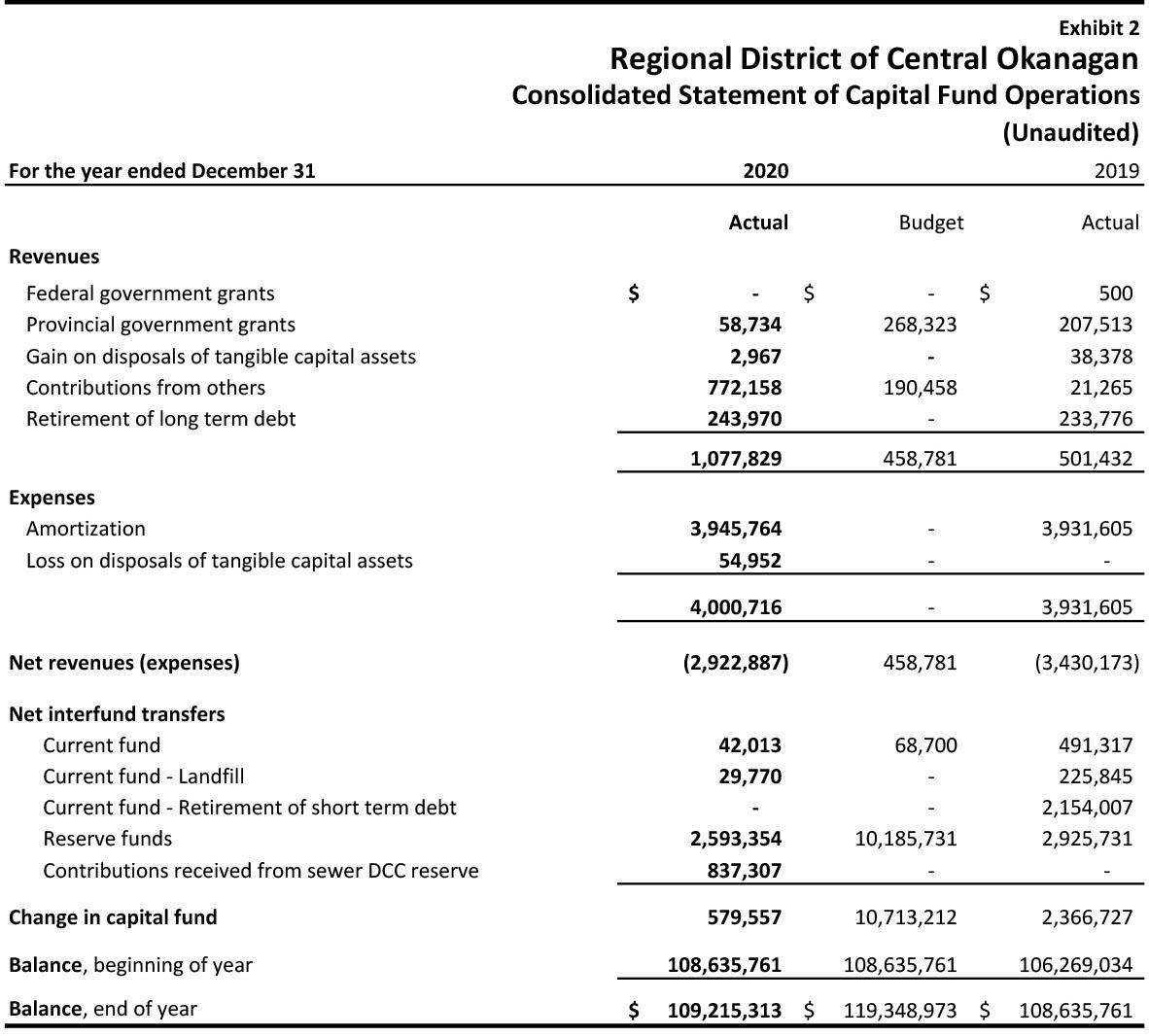
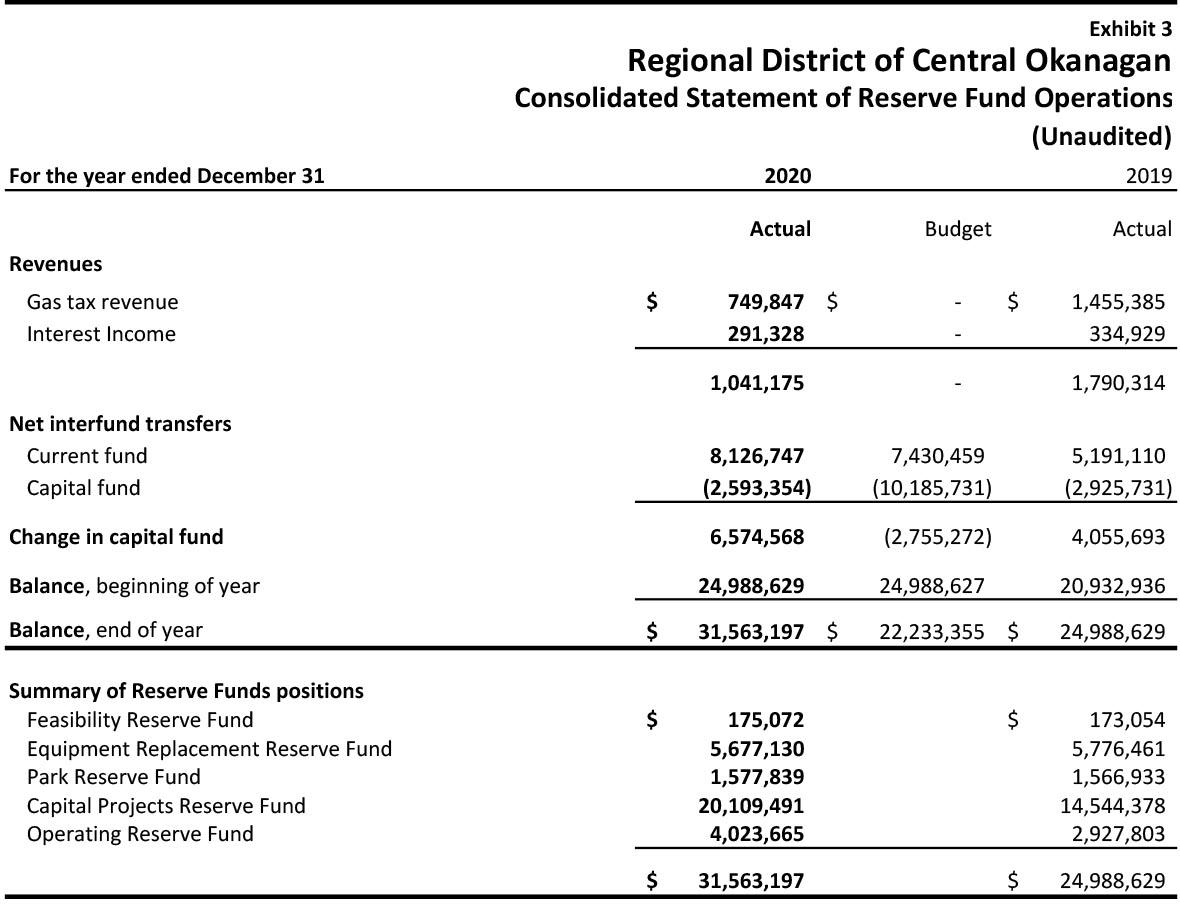
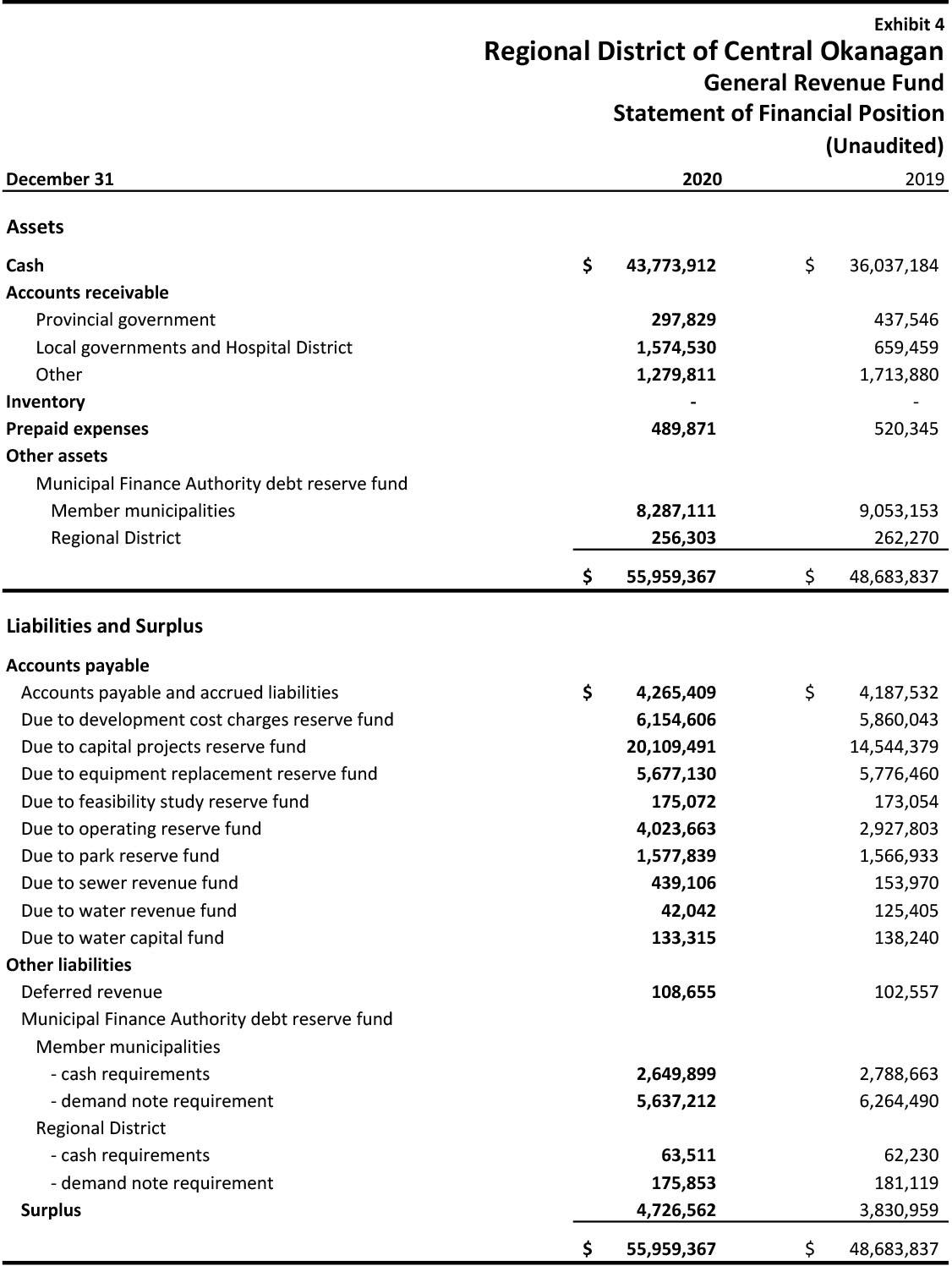
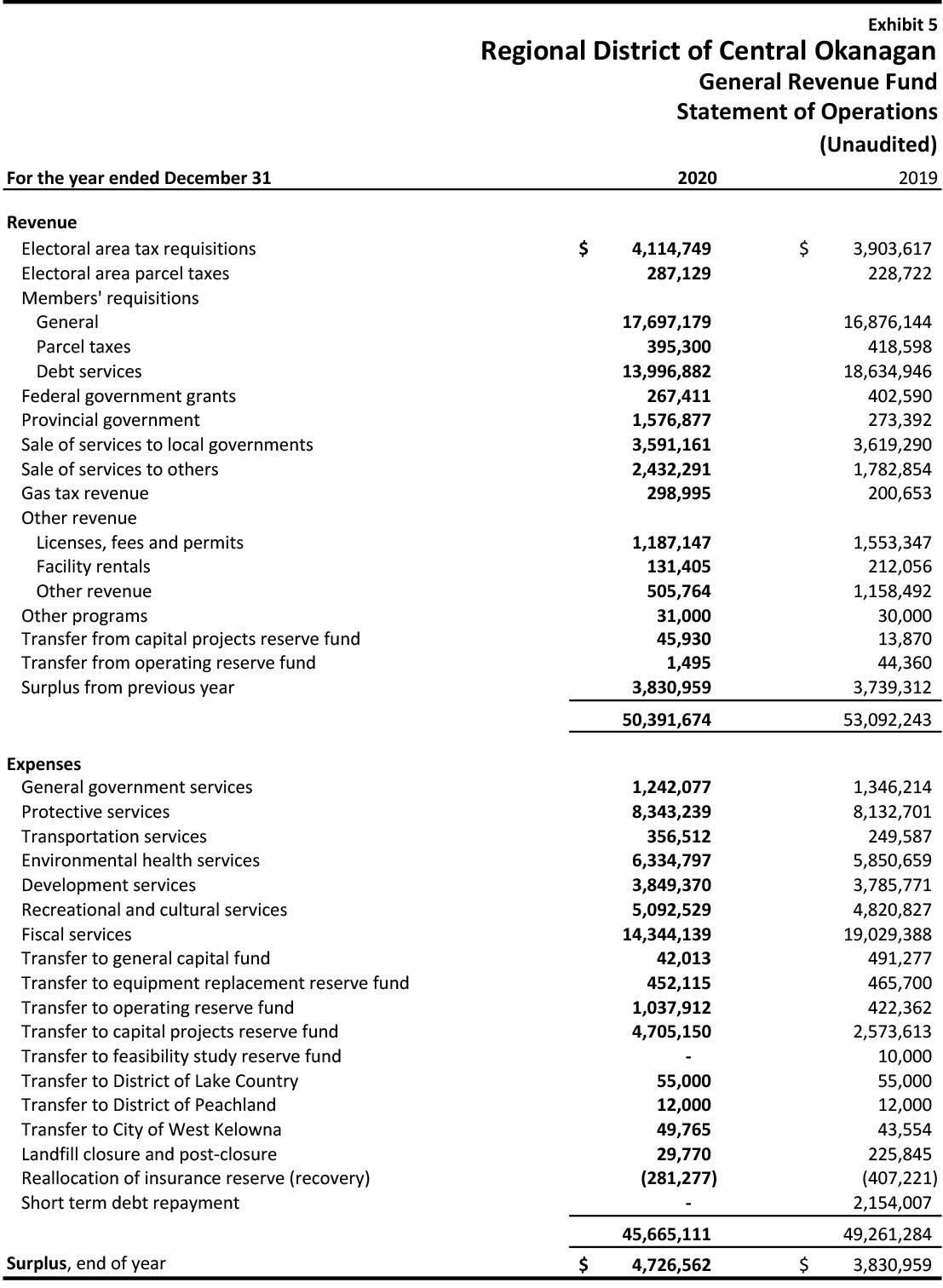
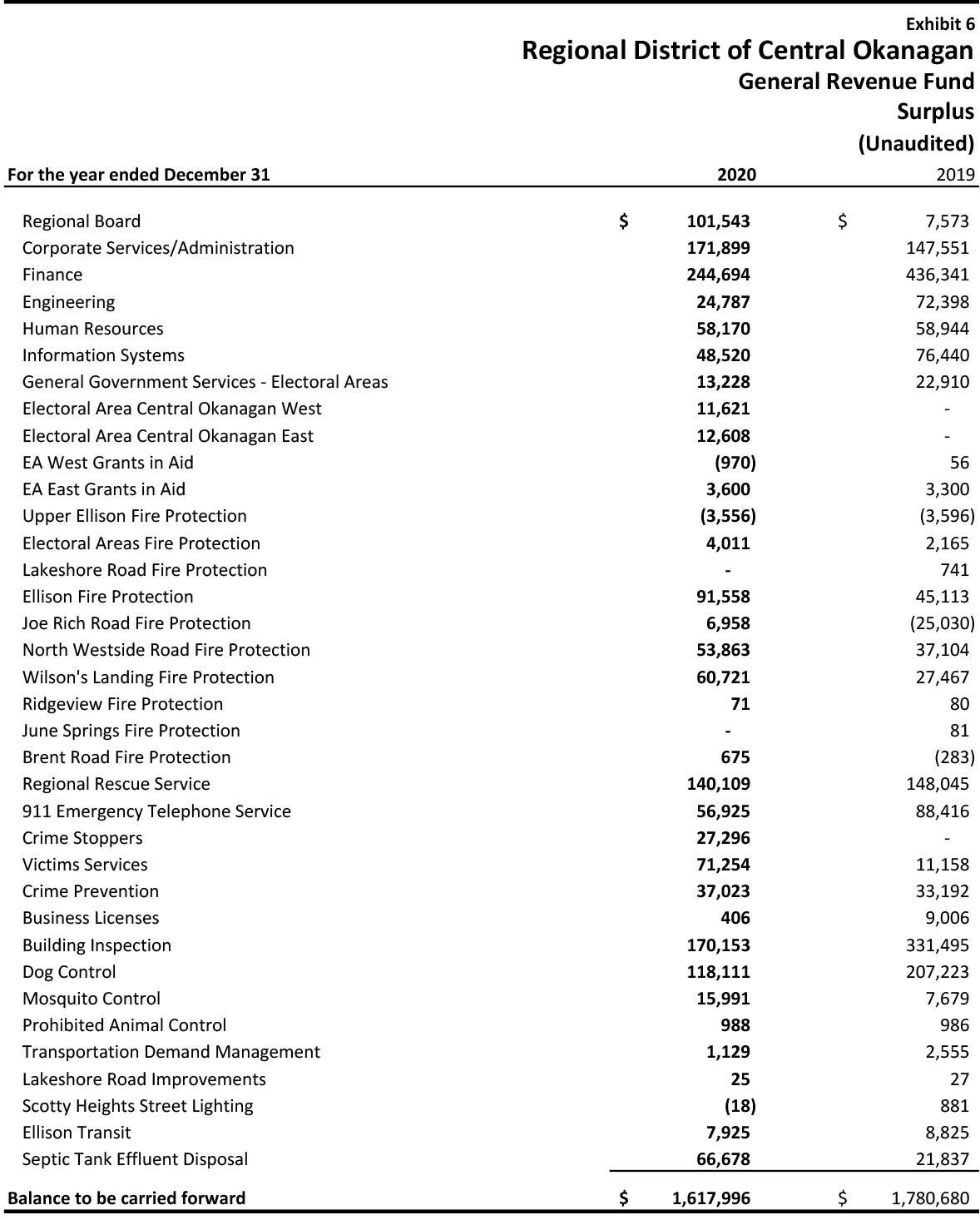
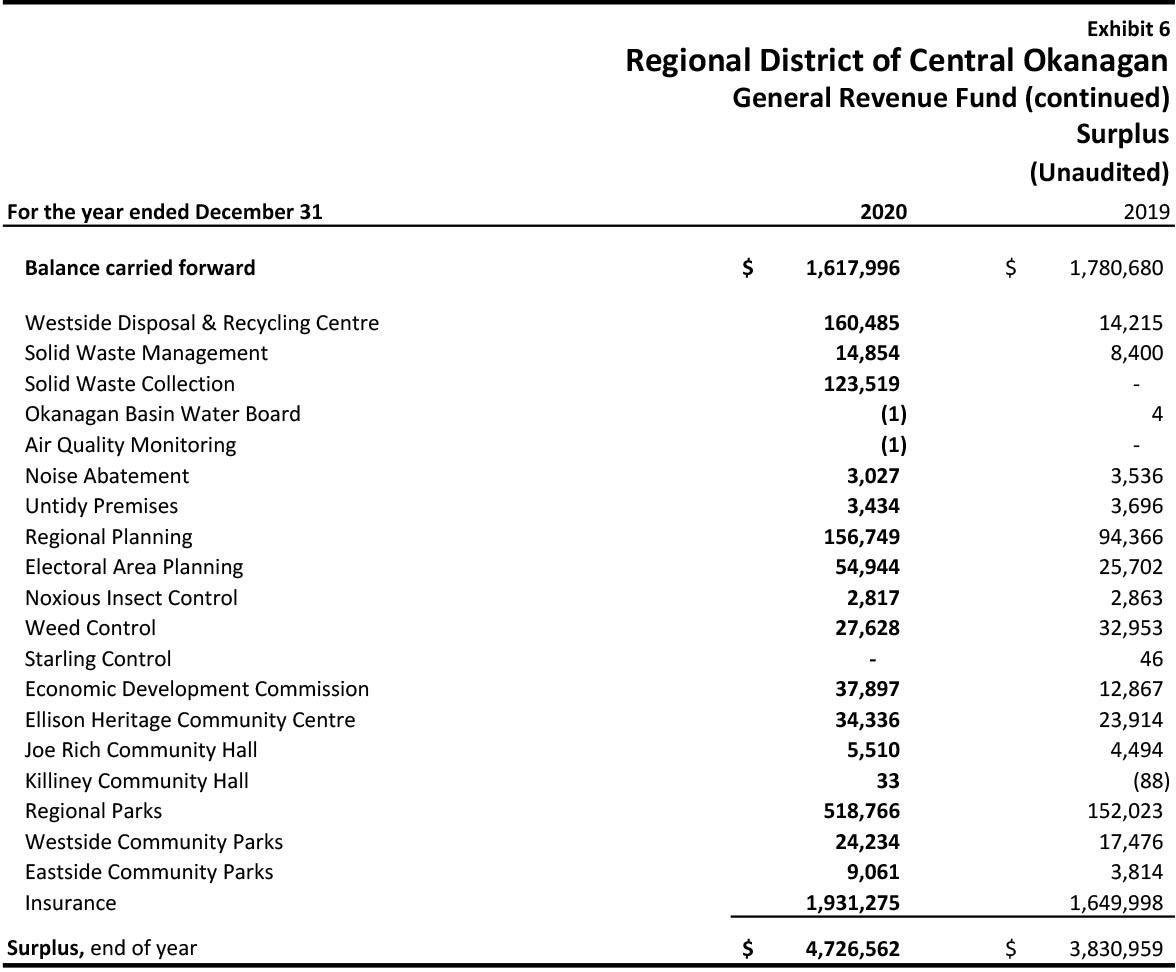
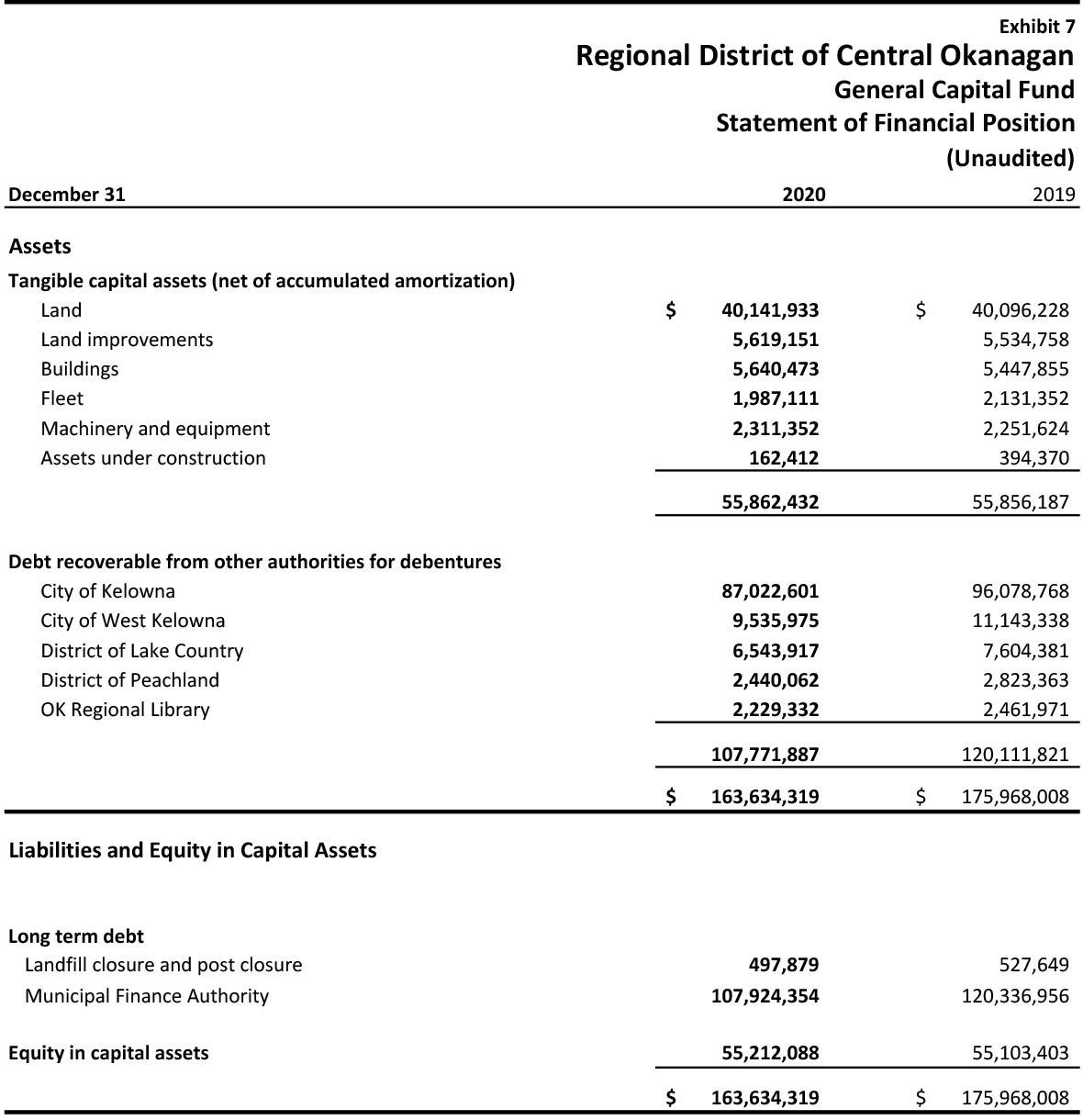
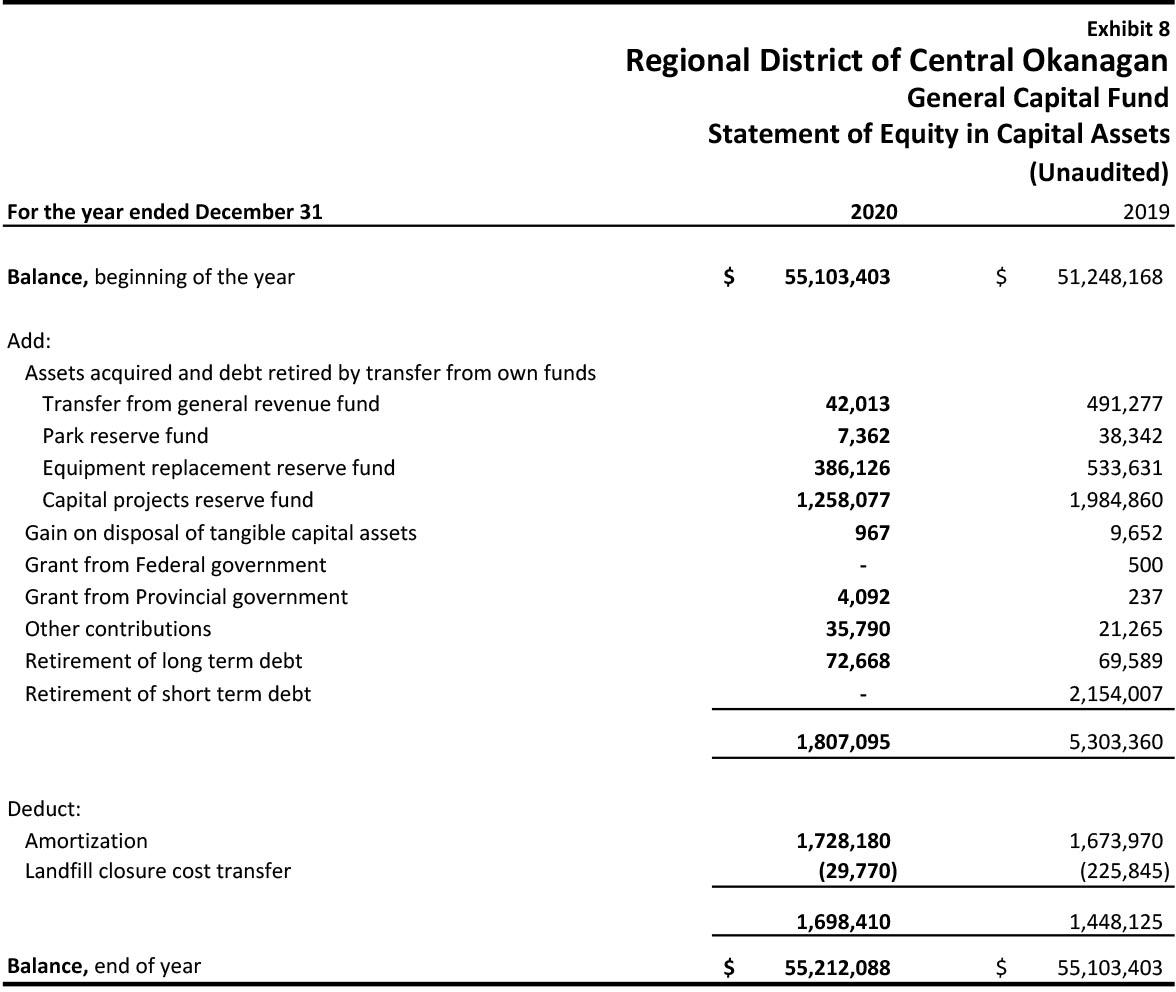
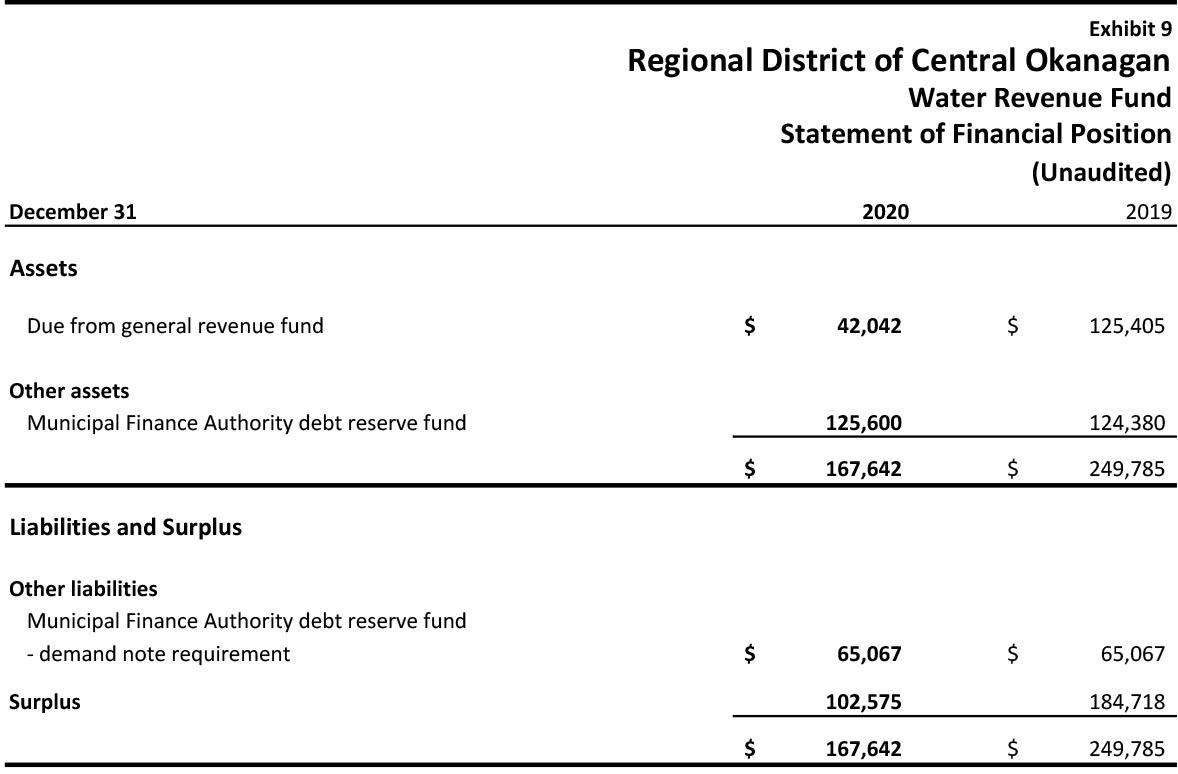
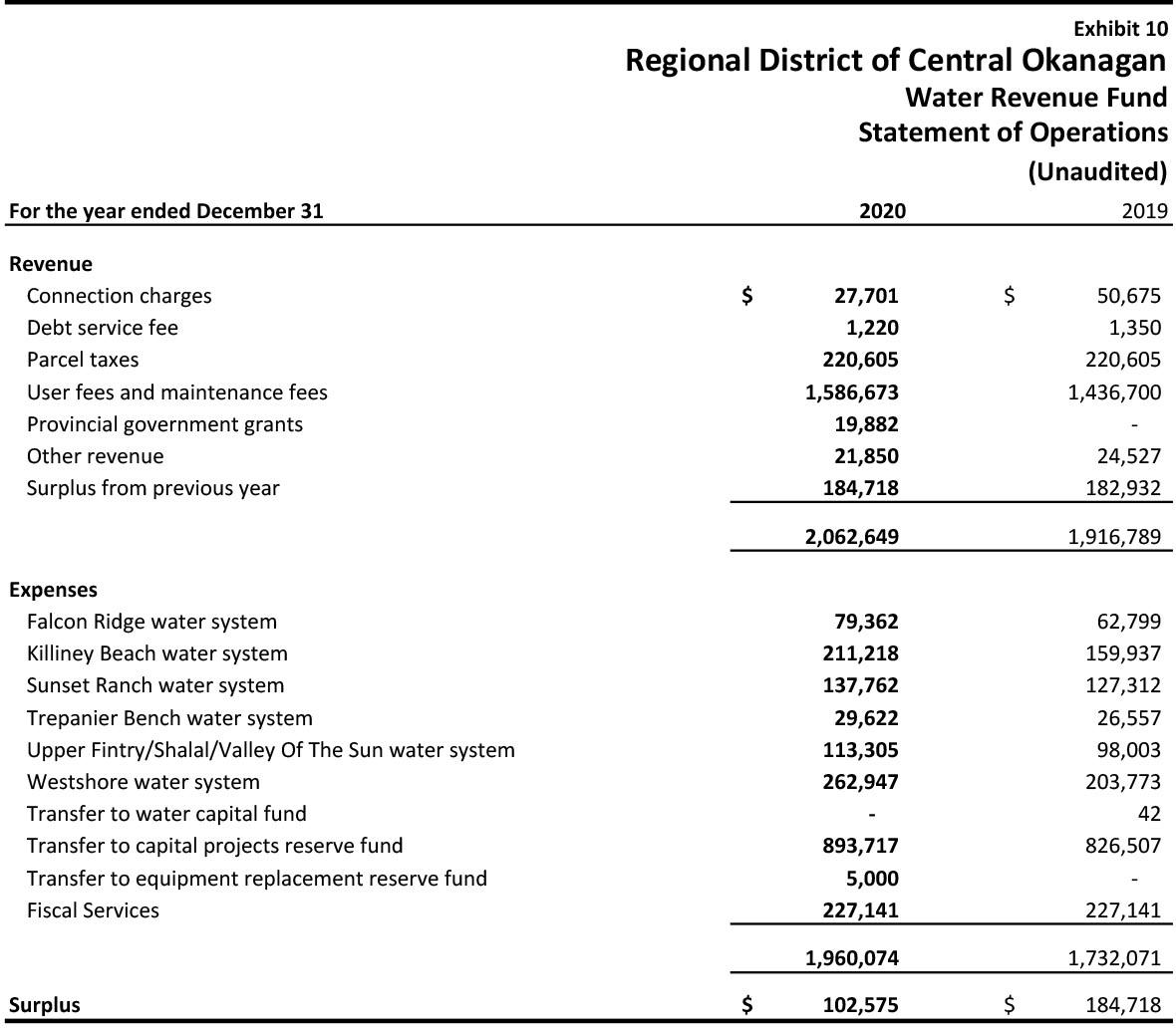
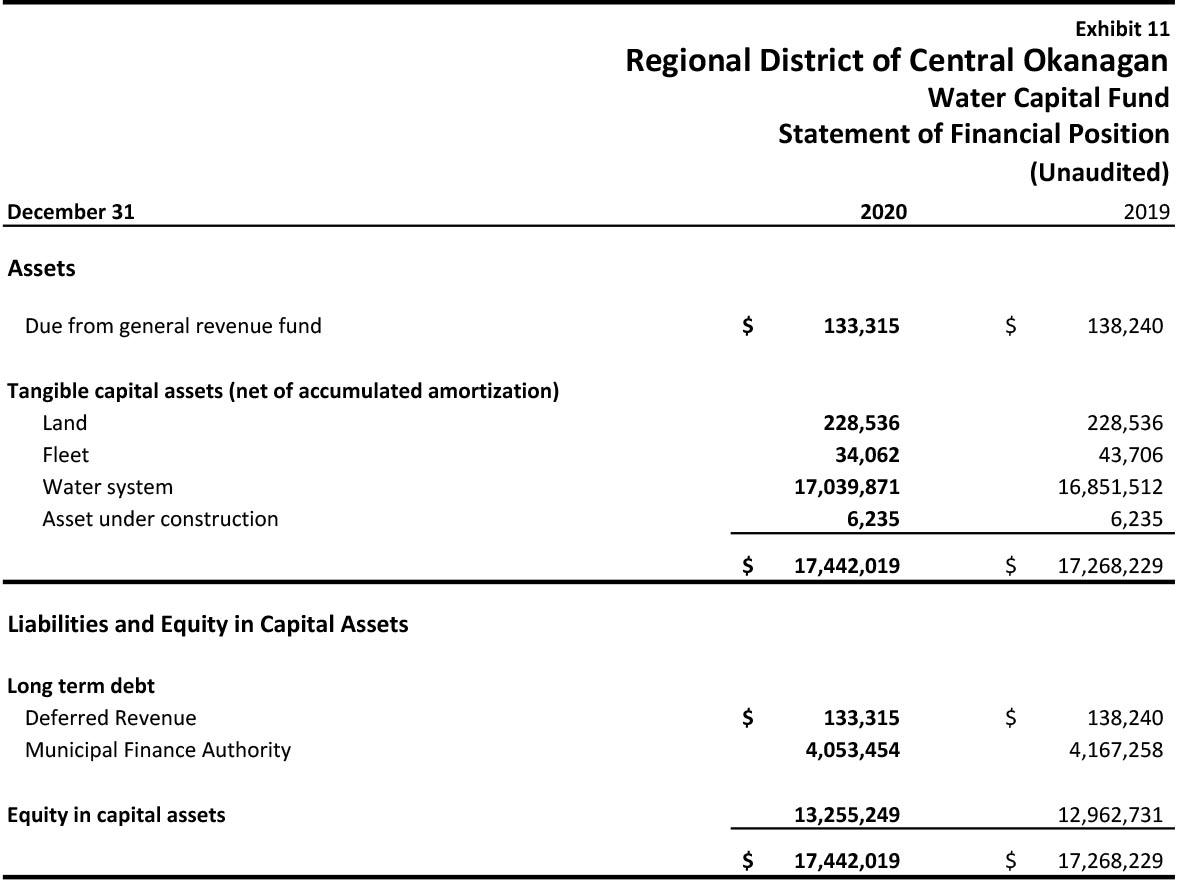
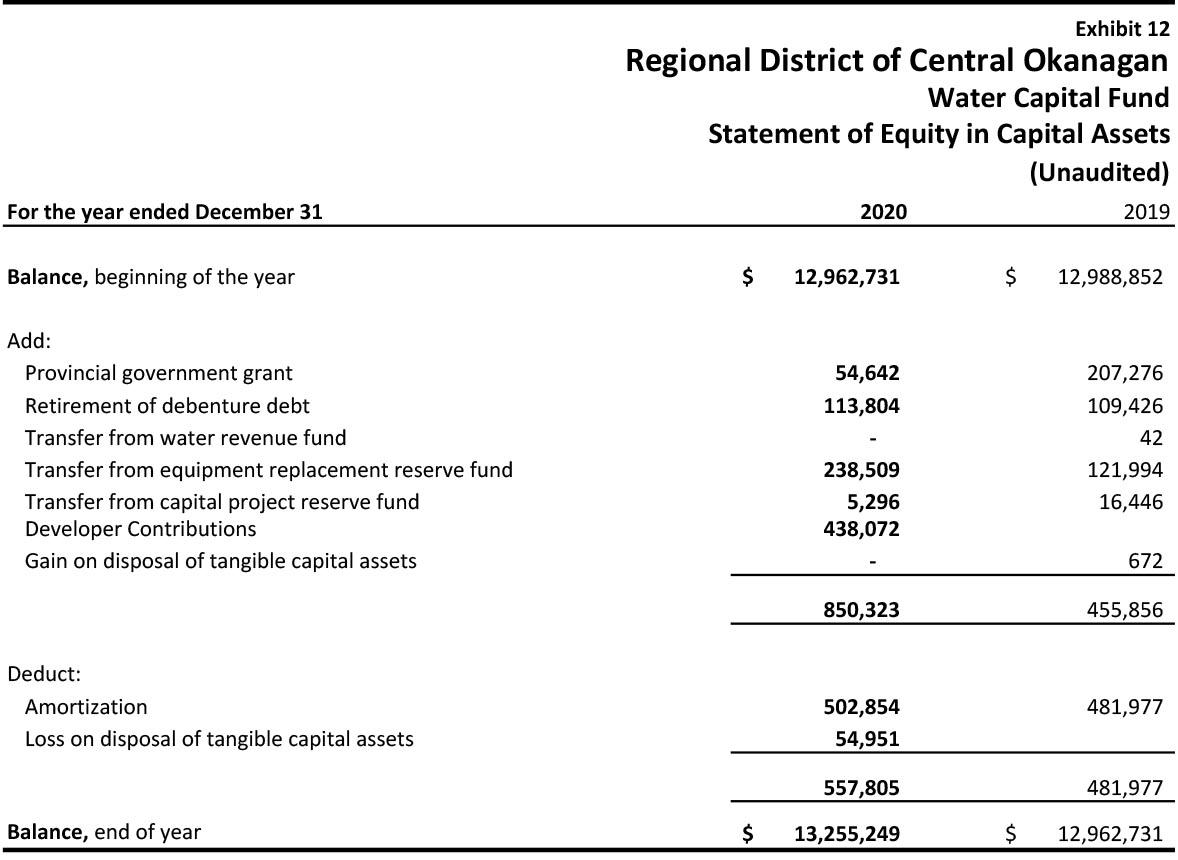
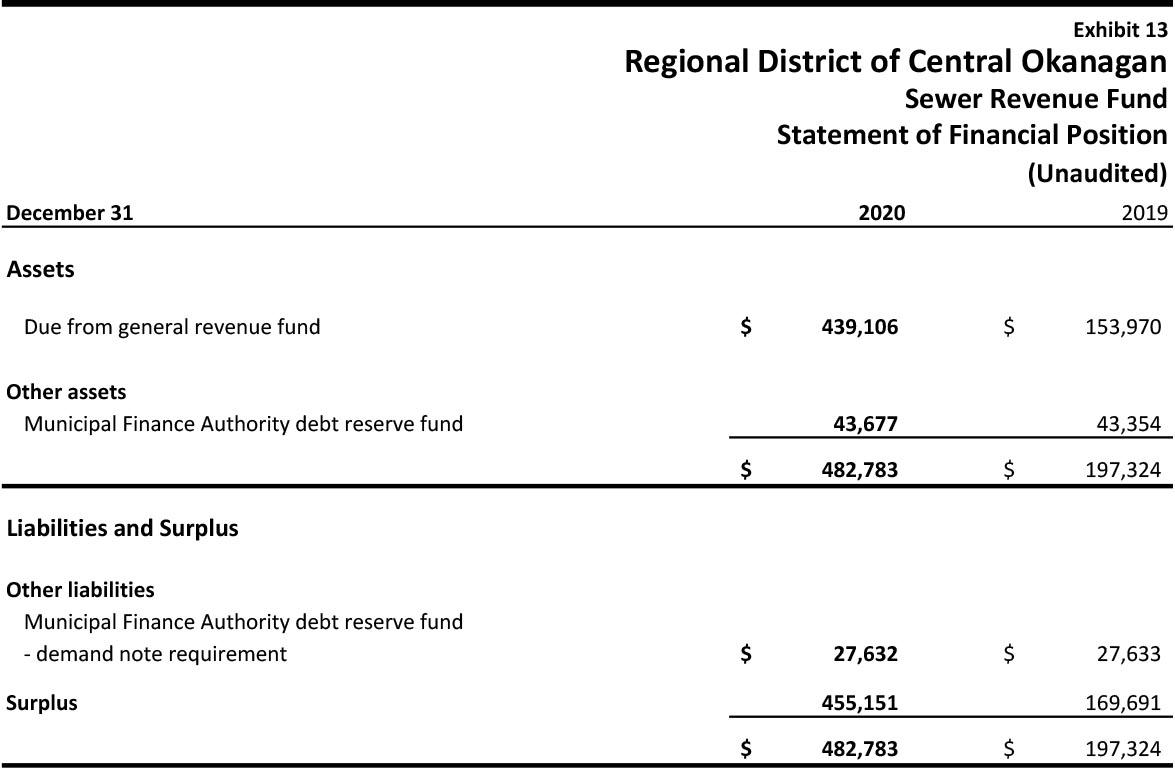
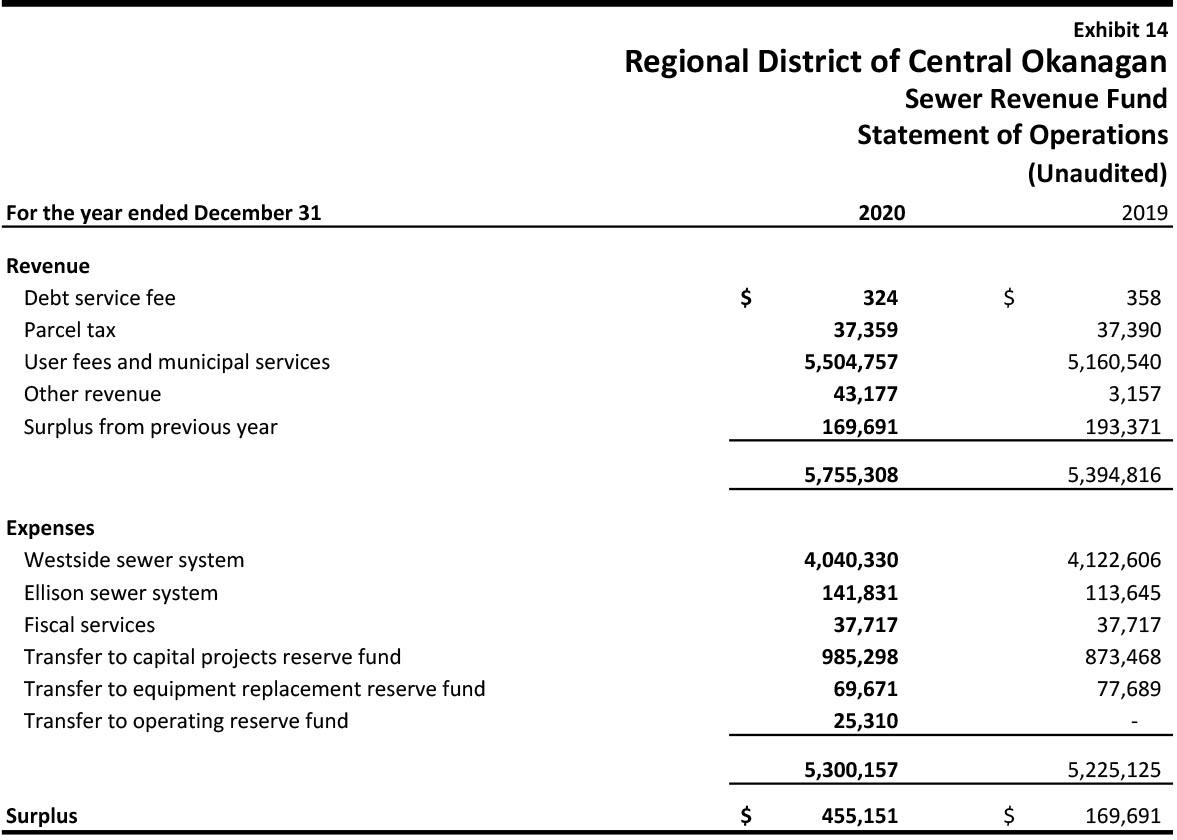
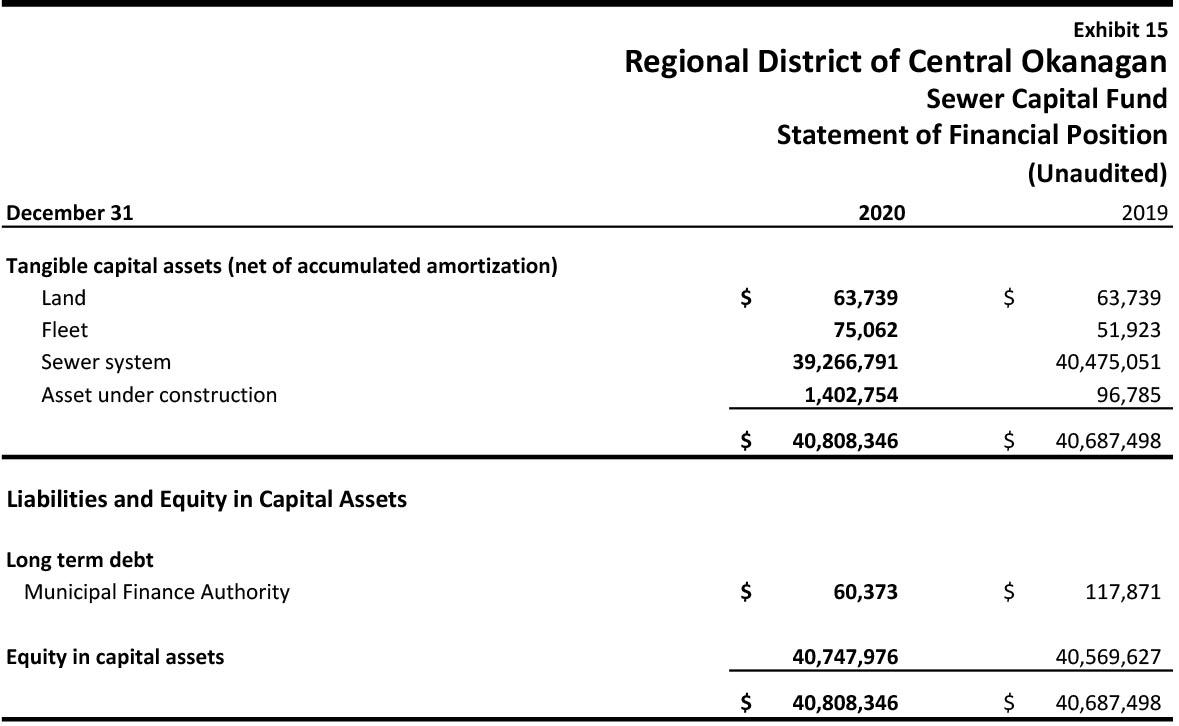
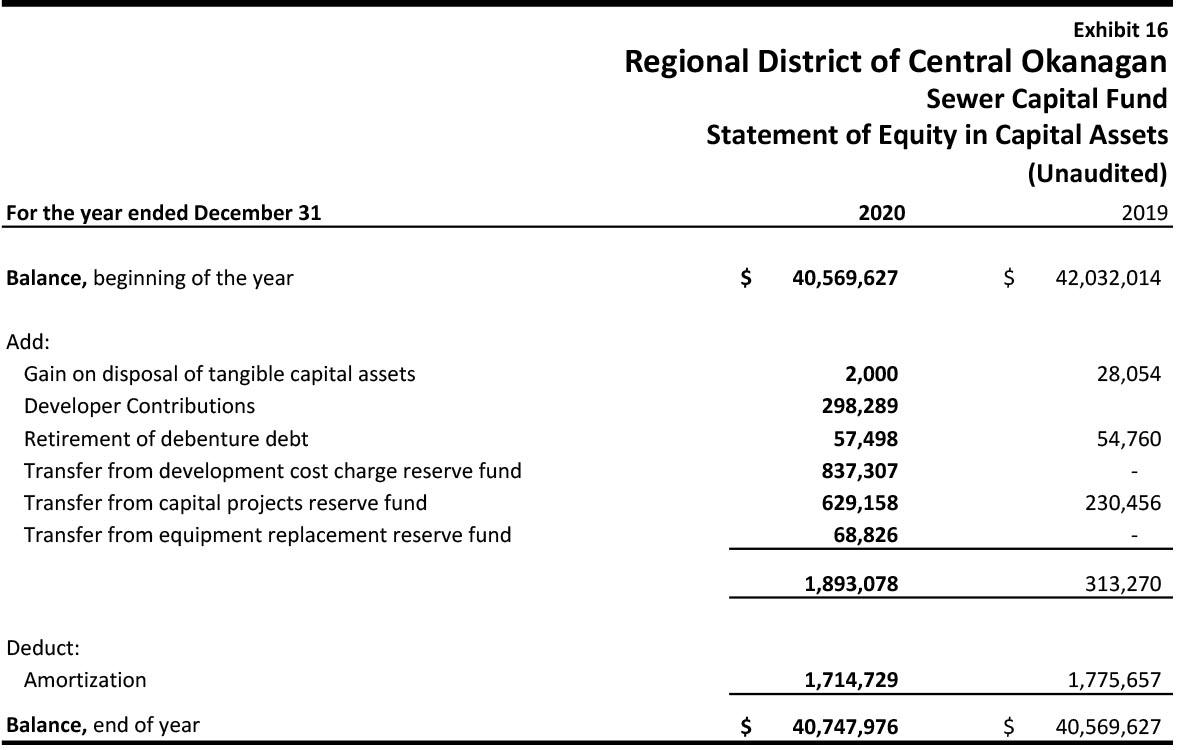
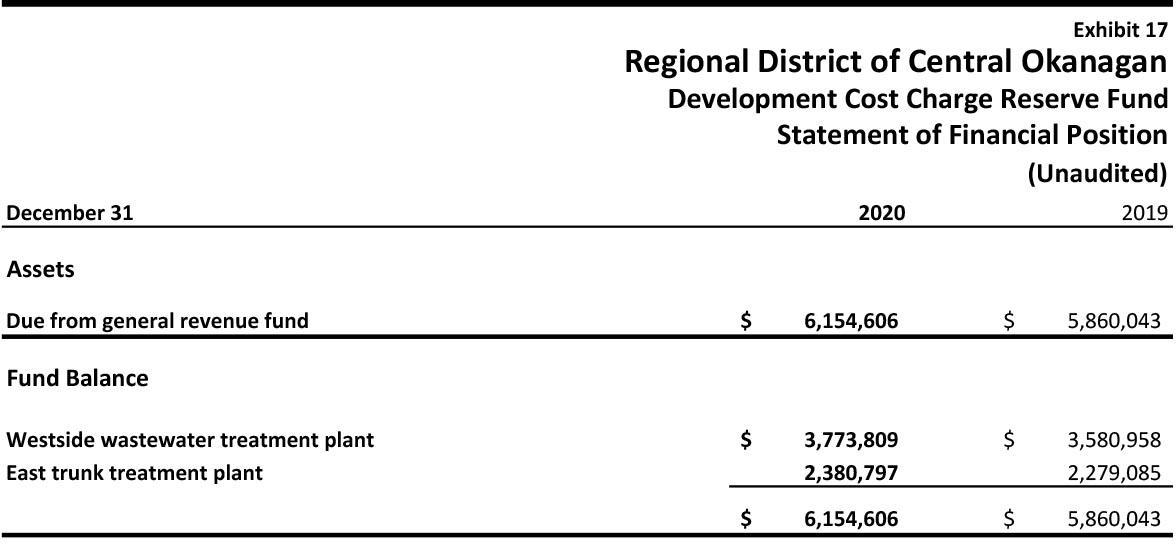
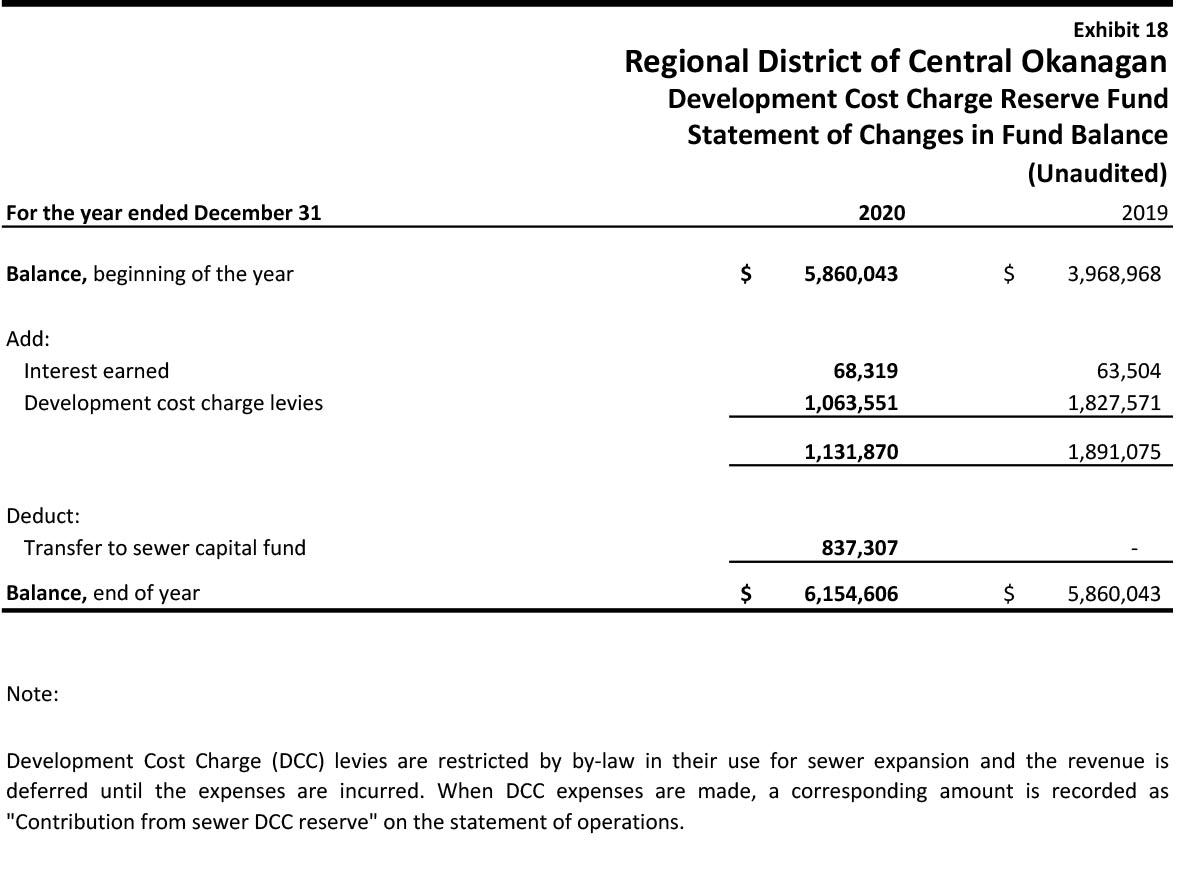
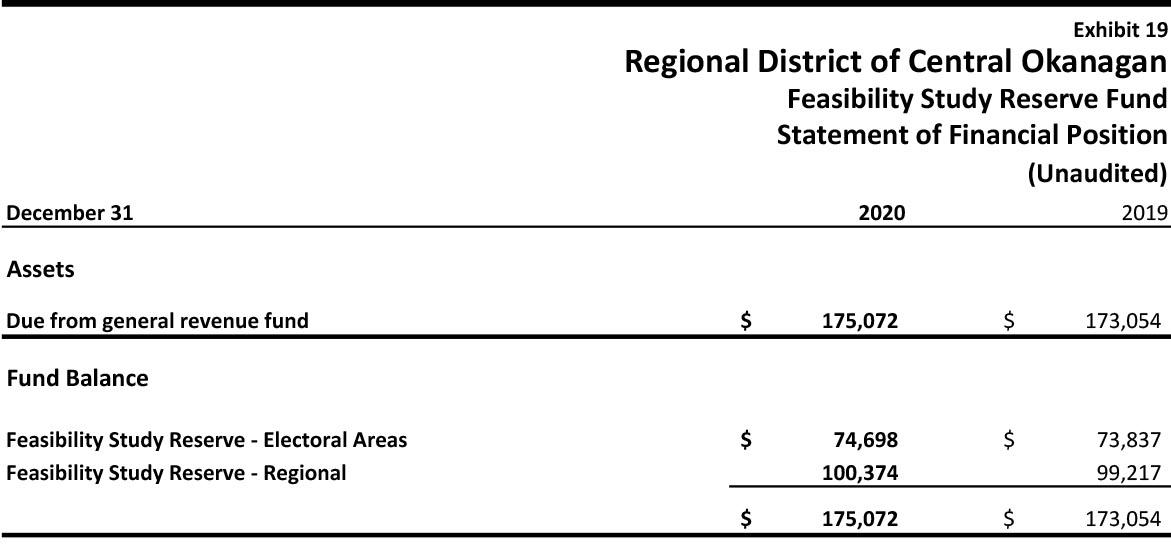
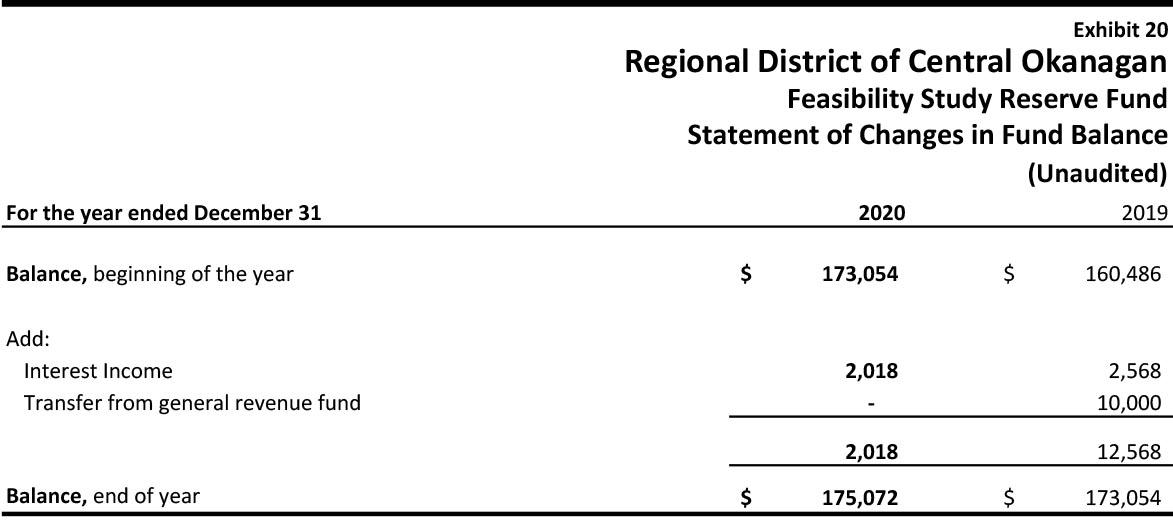
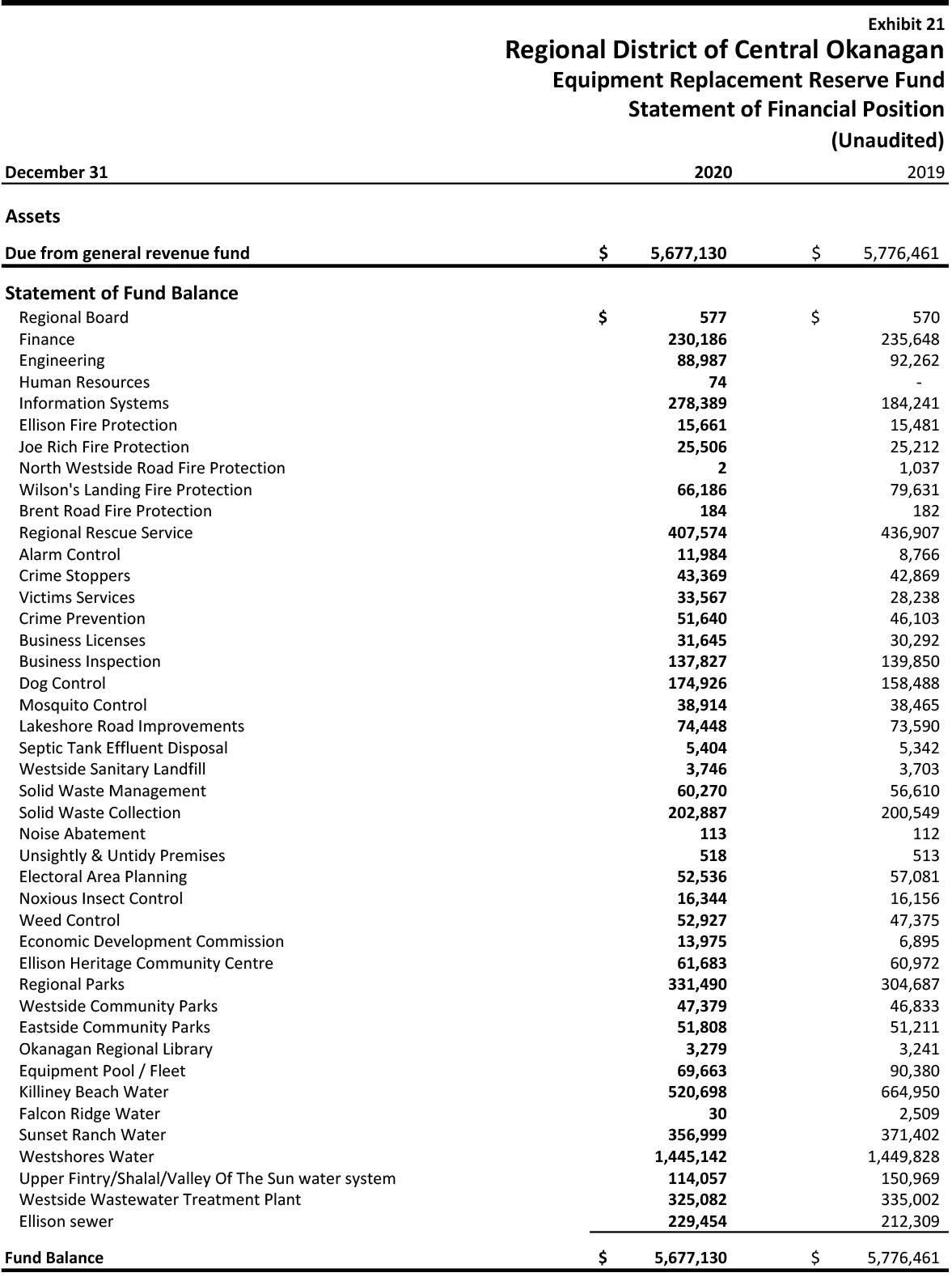
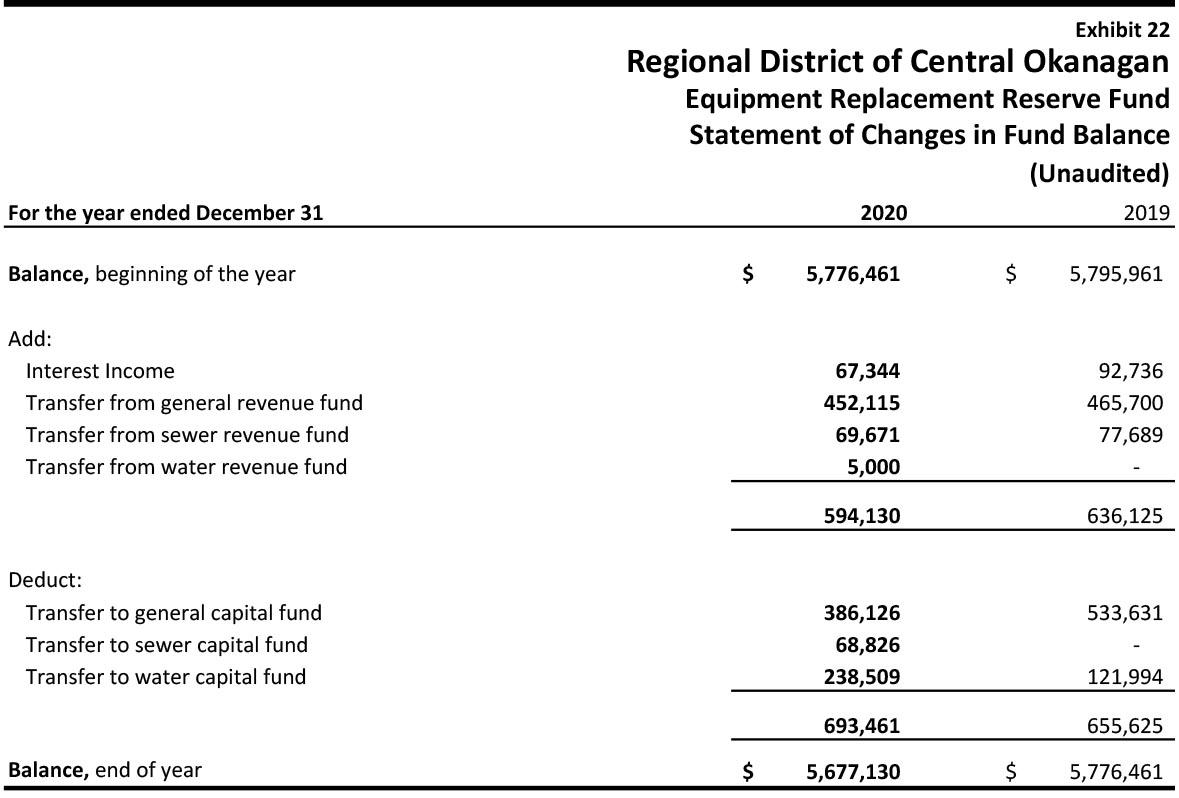
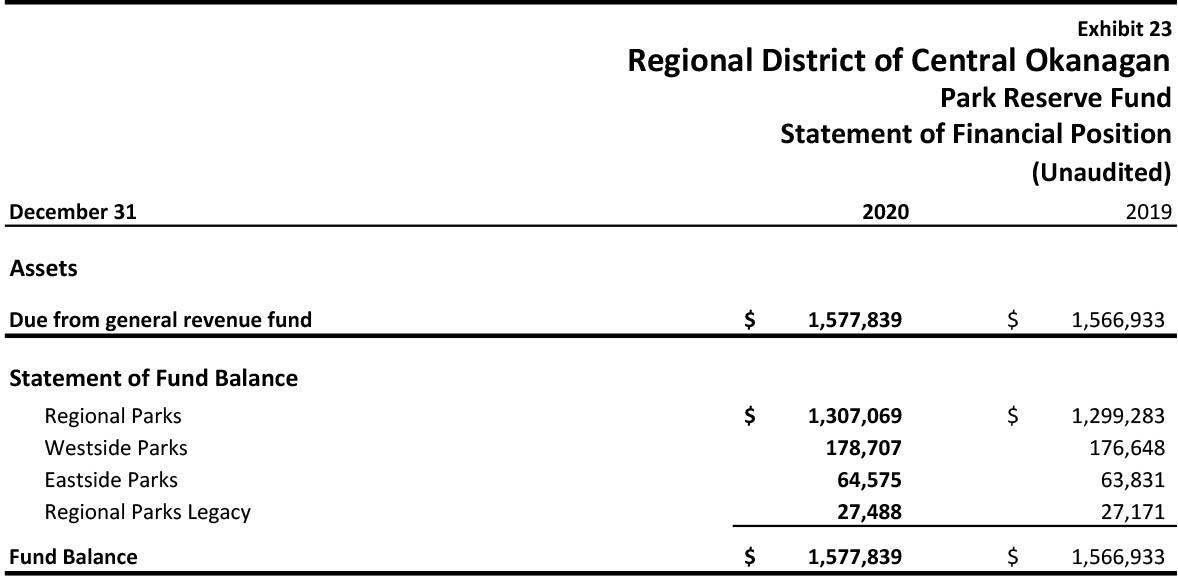
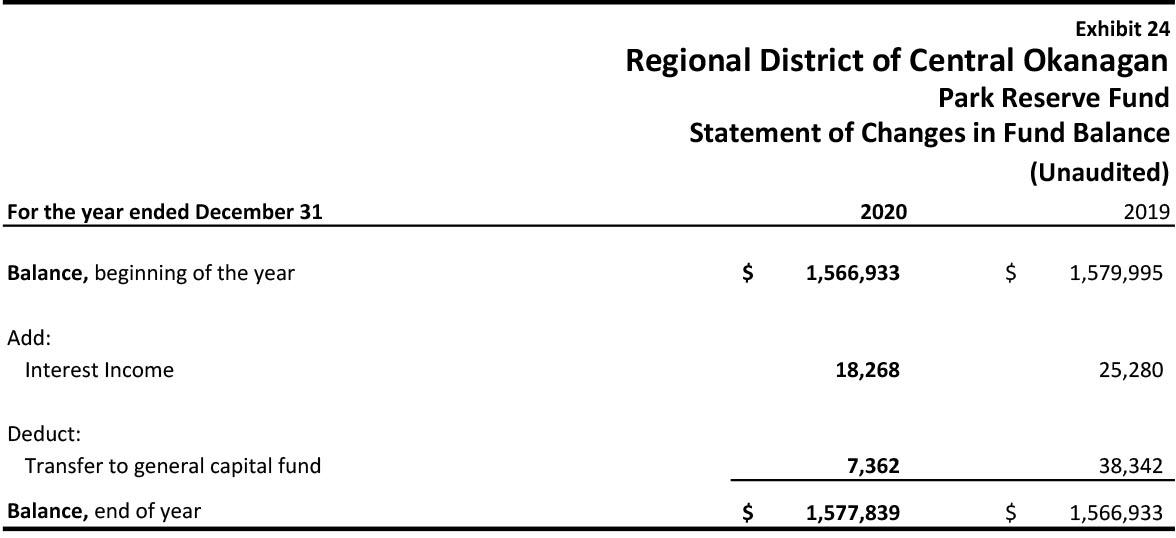
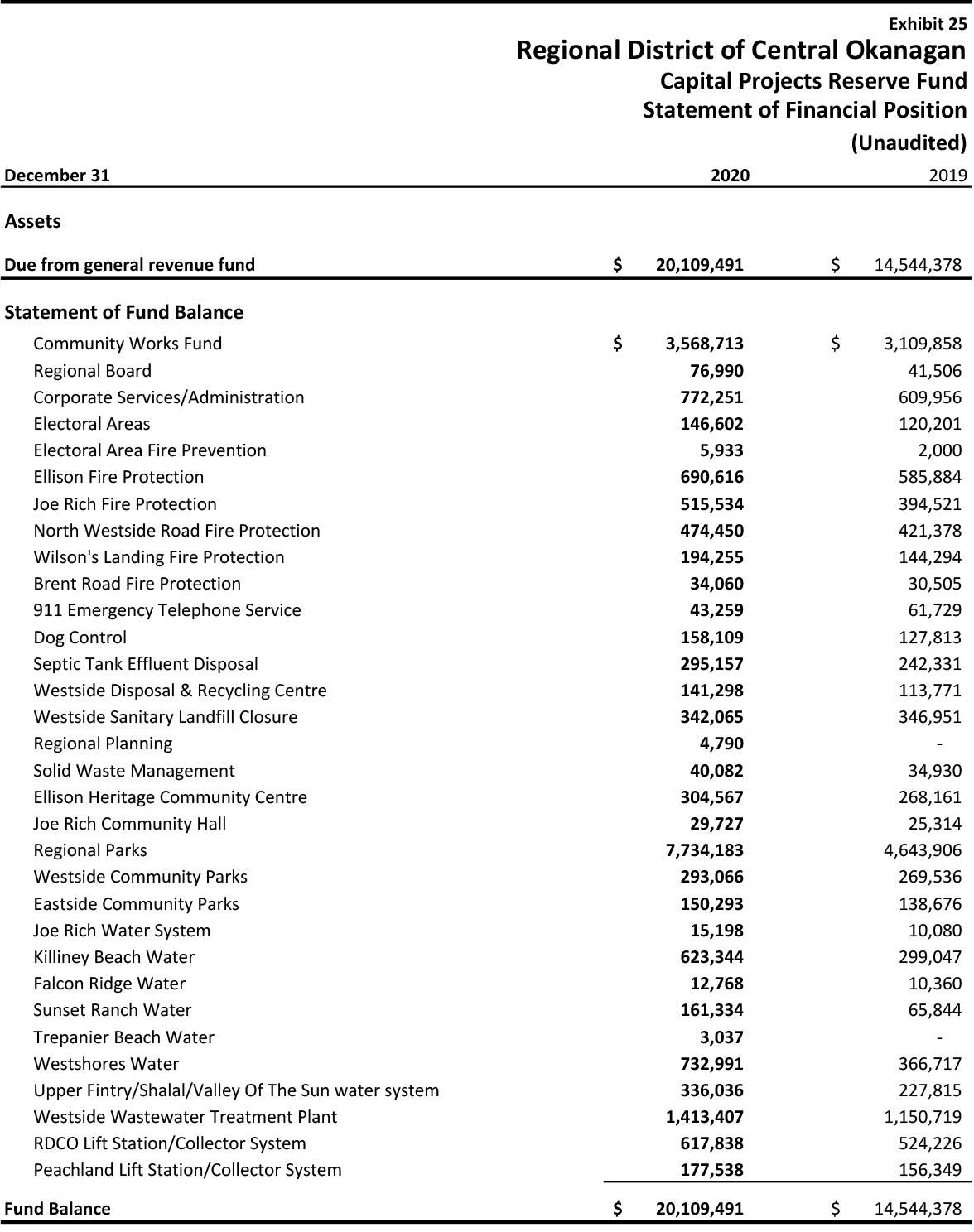
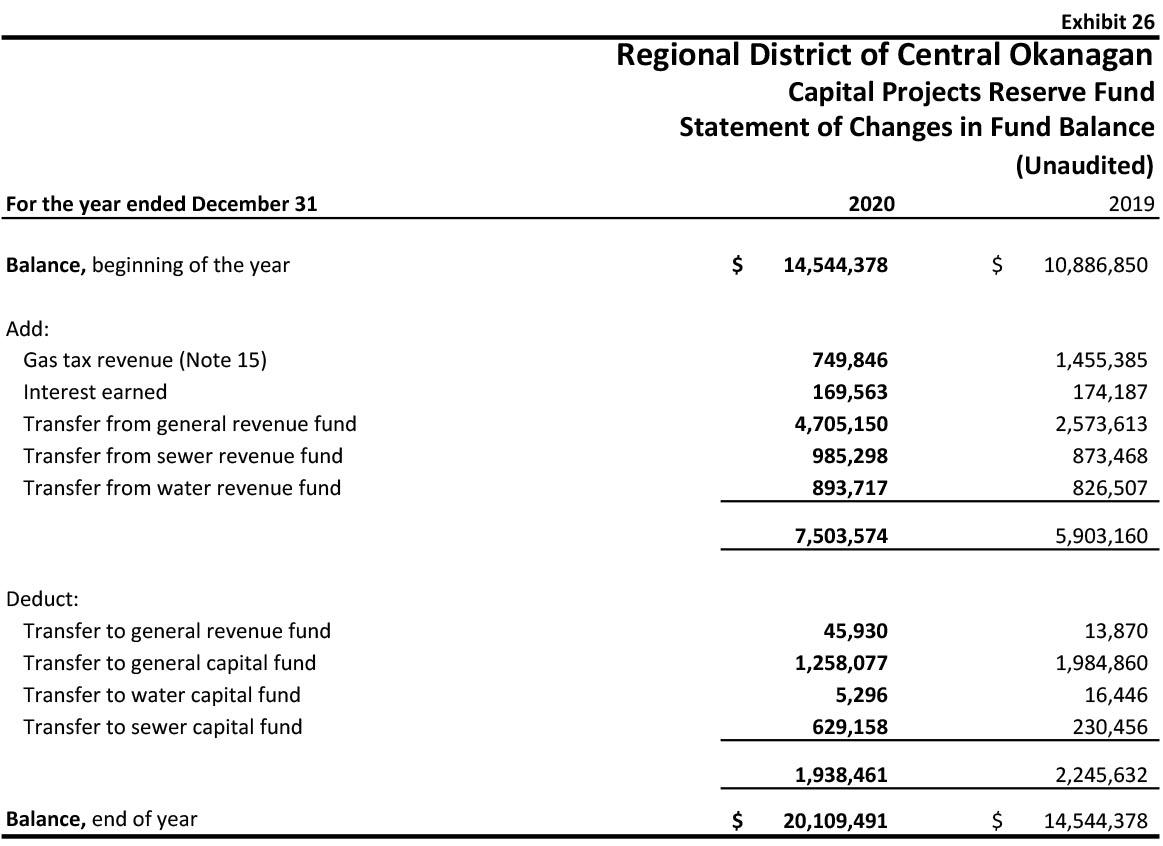
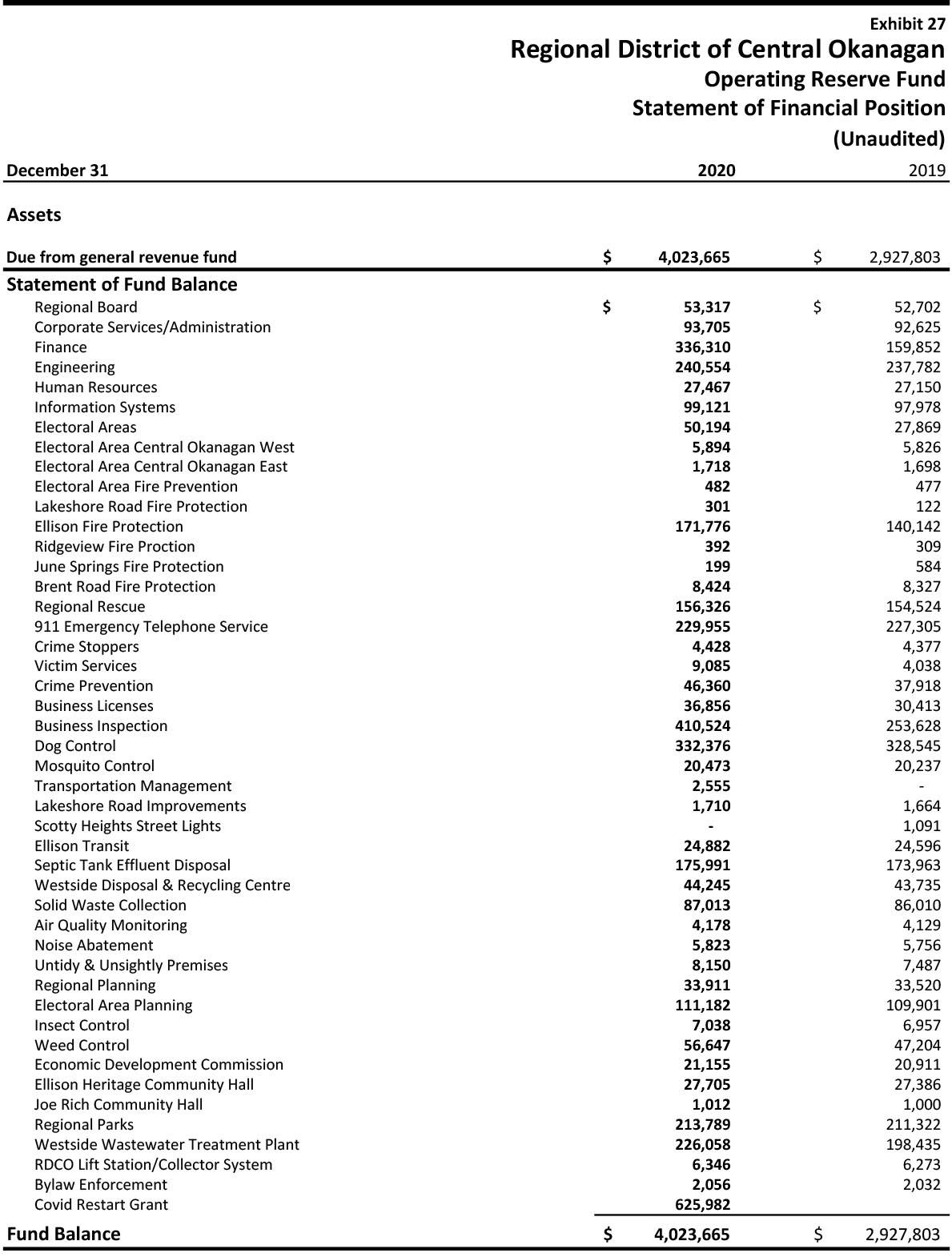
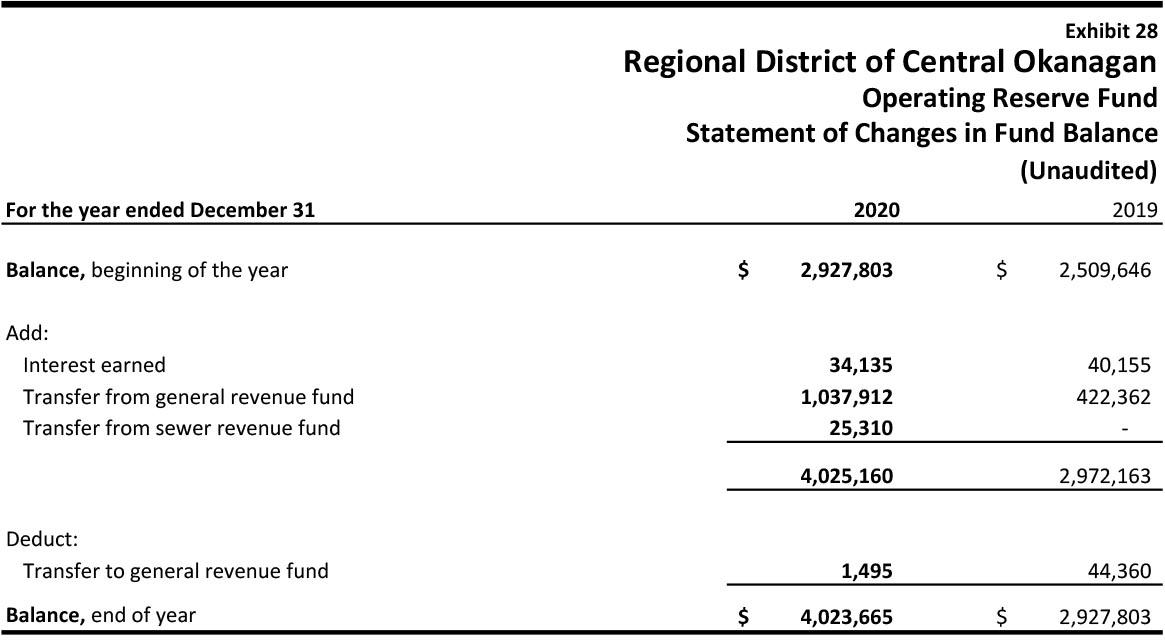
The health and well-being of Central Okanagan residents are important contributors to the excellent quality of life valued by all. The Central Okanagan Regional Hospital District plays a major role achieving that end.
The RDCO coordinates funding for the CORHD to fund equipment and capital projects and issues debentures through the Regional Hospital District Financing Authority.
The Central Okanagan Regional Hospital District Board is made up of the same members as the Regional Board. It primarily plays a financing role for capital expenditures for public health facilities in the Regional District of Central Okanagan (RDCO). Kelowna General Hospital, a tertiary referral hospital is the main facility located in the area . There are also some other minister- designated residential care and community care facilities that are funded. Over the past two years, two Urgent and Primary Care facilities opened to serve area residents in Kelowna and West Kelowna
The Central Okanagan Regional Hospital District typically funds a 40% share of approved hospital and health facility construction and the purchases of important health-related equipment. In 2020 the total budget was $26.74-million, and an average home assessed at $734,500 paid approximately $189.03 toward these outstanding medical facilities.
During the annual budget process, the CORHD Board receives prioritized funding requests for anticipated health facility projects and capital equipment purchases from the Interior Health Authority (IHA) via Financial Services staff.
Total 2020 projects approved $10,095,664:
• Total carryovers from prior years - $5,245,564
• 11 new projects $3,819,800 (including a mid-cycle
funding amendment to add the West Kelowna Urgent and Primary Care Centre, Long-term Care Business Plan to replace Cottonwoods and 5th floor completion of the Kelowna Community Health and Services Centre)
• Minor equipment grant $1,030,000
At year end, reserves are anticipated to reach $11.57-million, with a $6.5-million contribution in 2020.
In 2020 the Central Okanagan Regional Hospital District was expected to pay an estimated $9 .98-million toward existing debt retirement and interest charges .
The CORHD Board continues to effectively position the Hospital District to be responsive to future financial needs in light of the region’s aging and expanding population demographics and growing demand for central access to excellent health care facilities.
In fall 2020, in order to fund the West Kelowna Urgent and Primary Care Centre and two additional projects with a total of $1.42-million the Hospital District Board approved a request by Interior Health to move four previously approved and funded projects to 2021. These include:
• KGH Boiler Room Upgrade (CORHD share$252,000)
• KGH Monitoring System Physiological (CORHD share - $312,000)
• KGH Cath Lab (CORHD share - $621,000)
• KGH Meal Delivery System (CORHD share - $598,400)
In 2021, $1.784-million would be withdrawn from reserves to pay for these previously approved and deferred projects. It’s also anticipated that $4.6-million in previously approved funds will be allocated to the new KGH Parkade.

At the request of Interior Health, in October the Hospital District Board moved four previously approved funding projects for 2020 to 2021 in order to reallocate $1.2-million in funding to assist with opening the new West Kelowna Urgent and Primary Care Centre The facility provides care seven days a week and:
• Assists patients with non-life threatening conditions who need to see a health provider but don’t require an emergency department and who don’t or can’t access their family practitioner
The facility is the 19th to open in BC and is located at 2484 Main Street in West Kelowna It’s a collaboration between the:
• Ministry of Health
• Interior Health
• City of West Kelowna
• District of Peachland
• Westbank First Nation
• The Central Okanagan Division of Family Practice and the Doctors of BC.
• Provides basic laboratory tests
• Improves access to care through extended weekend and evening hours
• The team of health care providers at the facility can also help patients without a family doctor to a physician or nurse practitioner for ongoing primary care either at the centre or in the community
In 2019-2020 more than 3,300 West Kelowna residents representing almost 25% of the visits to the emergency department at Kelowna General Hospital were triaged as non-emergency. Many of them could have received care through the new Urgent and Primary Care Centre closer to home, saving the Emergency Department for those needing critical care It’s anticipated that the Centre will see more than 27,000 visits each year.
